
BLOG: APPLIED RESEARCH OF EMMANUEL GOSPEL CENTER
If the Black Church were to disappear, who would miss it?
There are about 250 Black churches in Boston facing multiple challenges. To leverage their collective strength, almost a dozen of them came together to build relationships for the betterment of the community.
(Clockwise from top left: wwing, wwing, timeless, MCCAIG, all via Getty Images)
If the Black Church were to disappear, who would miss it?
“If the Black Church were to disappear, who would miss it?”
That’s the overarching question Jaronzie Harris and her team led with as they began a data-driven study of the Black Church in Boston.
The team tried to answer a series of questions: “Who’s in the Church? What are they doing? How’s the Church doing? How many churches do we have? What are these Black Christians even thinking about or talking about? Do they even talk to each other?”
Jaronzie Harris, Director, Black Church Vitality Project. Emmanuel Gospel Center
In partnership with several organizations, Harris’s efforts helped establish the Black Church Vitality Project, an initiative close to her heart as a daughter of the Black Church.
“My love for the Church really comes out of my love for Black people, Black communities,” Harris told the Emmanuel Gospel Center’s Curious City podcast. “Always having that sense of service and a faith centered in hope and love.”
The team’s research found there are about 250 Black churches in Boston facing multiple challenges. To leverage their collective strength, Harris sought to bring some of these churches together to build relationships for the betterment of the community. She gathered almost a dozen Black churches in close proximity to each other in four predominantly Black neighborhoods of Boston.
Together, they looked at the changes taking place in their local communities, how their mission and values might need to change in light of what they’re learning about their neighborhoods, and how their churches can take action.
These topics made for vulnerable conversations. And while not everyone is on the same page, Harris said the desire is there among the churches to work together.
These meetings and discussions between these churches make for a dynamic, relational process that’s transformative in and of itself. It holds up a mirror for the churches to assess themselves in the immediate context of their neighborhoods and the broader culture they live in.
“My love for the Church comes from my love for Black people,” Harris said, “so if the Church is not serving the people, then what are we doing?”
For this and more from Harris’s conversation with Caleb McCoy, listen to the Curious City podcast.
Apple Podcasts | Podbean | Spotify | YouTube
More than a fundraiser
EGC’s fundraisers have expanded over the years to embrace the diverse gifts of our staff members and ministry partners, adopting more creative content expressions.
More than a fundraiser
Pulling back the curtain on EGC’s content creation process for our annual fundraiser.
At a historic church space in the heart of Cambridge, a diverse choir has gathered to worship God. But instead of a Sunday, it’s a rainy Saturday morning. In place of a congregation, a camera crew adjusts lights, angles shots, and tries to stay on schedule. But like any church gathering, there is coffee.
It’s film day for the Emmanuel Gospel Center as we prepare for our annual fundraiser and virtual concert.
This year, we’re filming at Central Square Church, a sacred space that’s hosted luminaries such as Fanny Crosby, who penned the lyrics to “Blessed Assurance,” and the Rev. Dr. Martin Luther King Jr., who preached there to more than 2,000 people on a snowy Sunday evening in 1960.
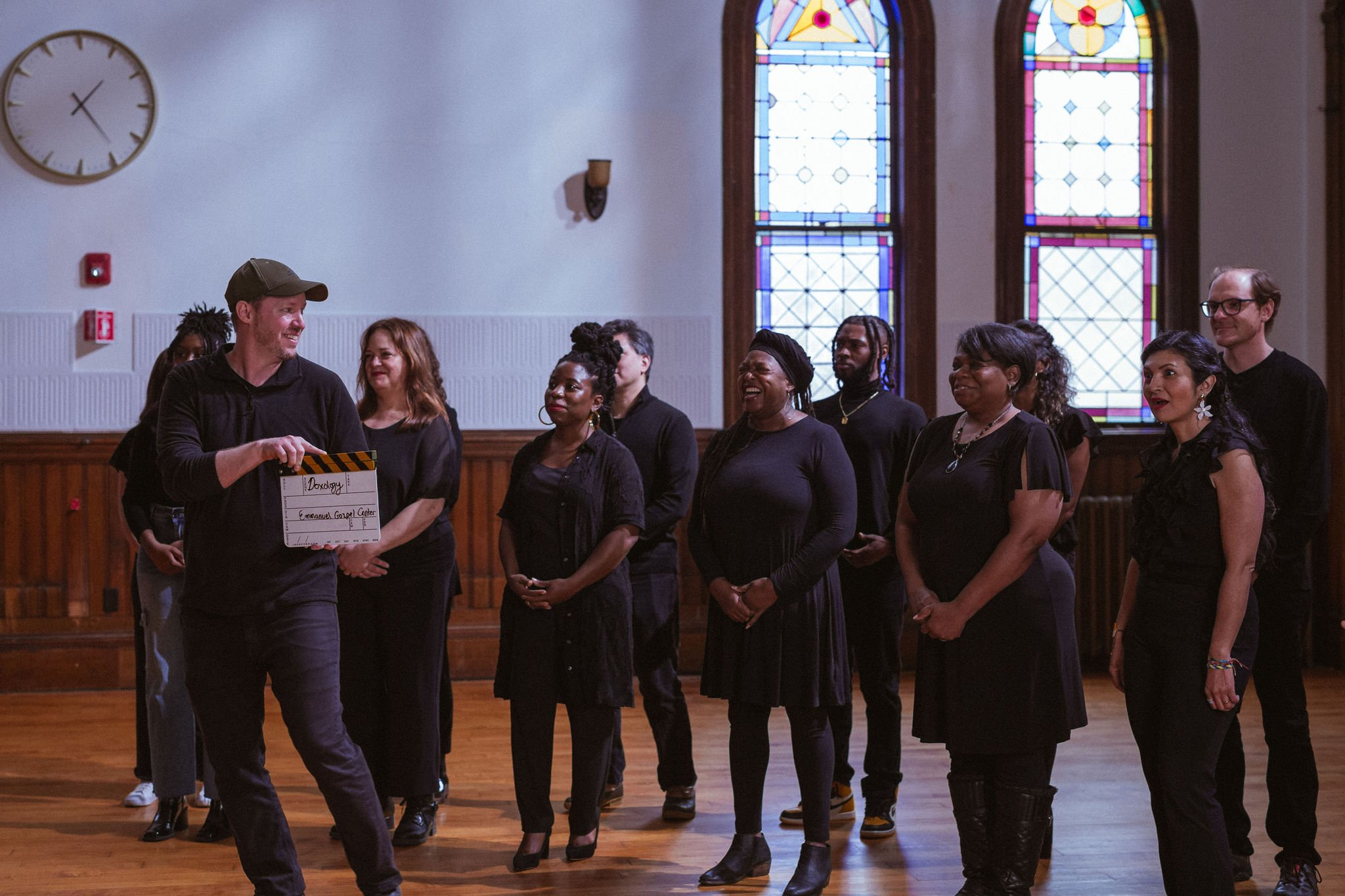
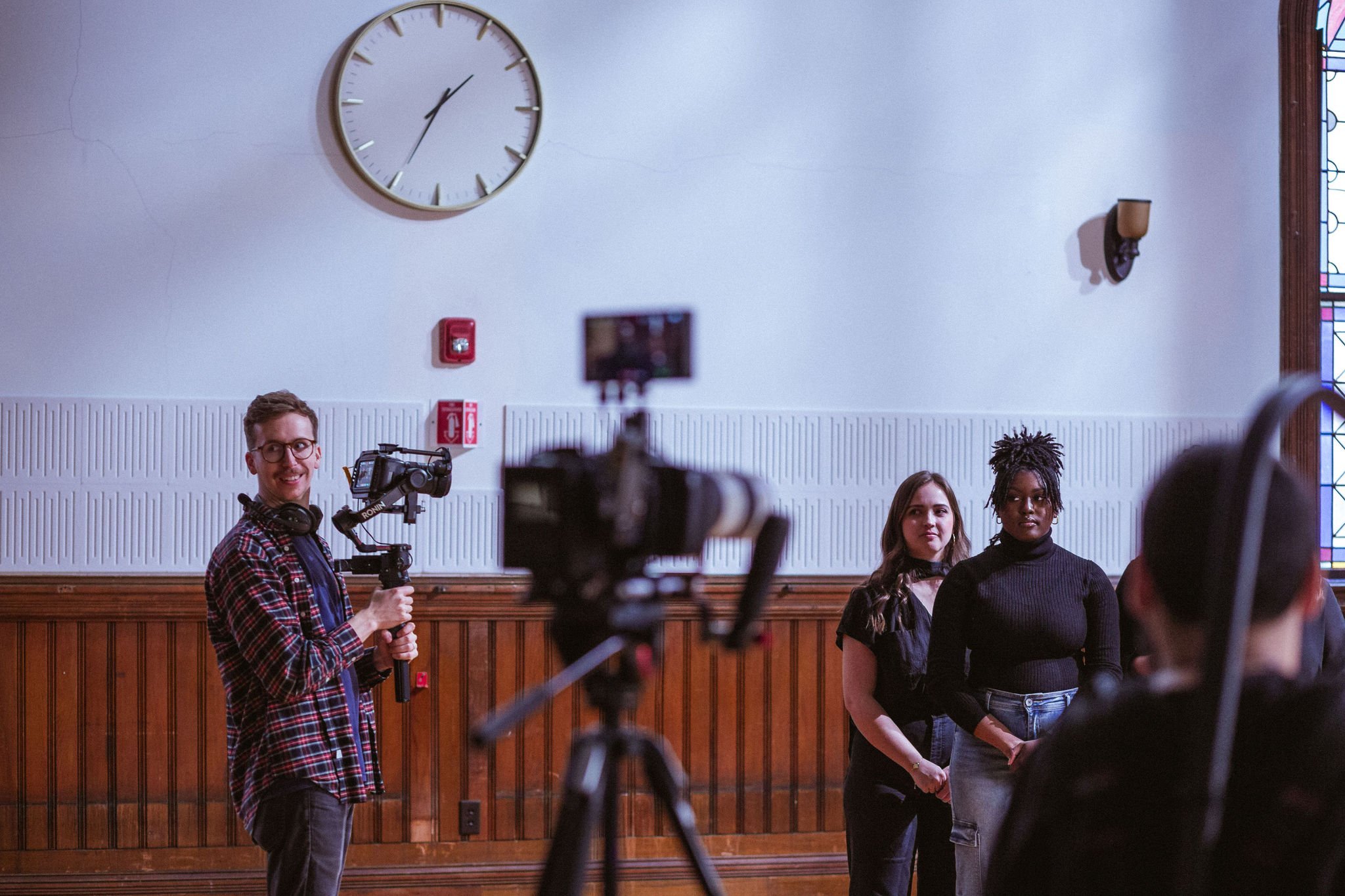
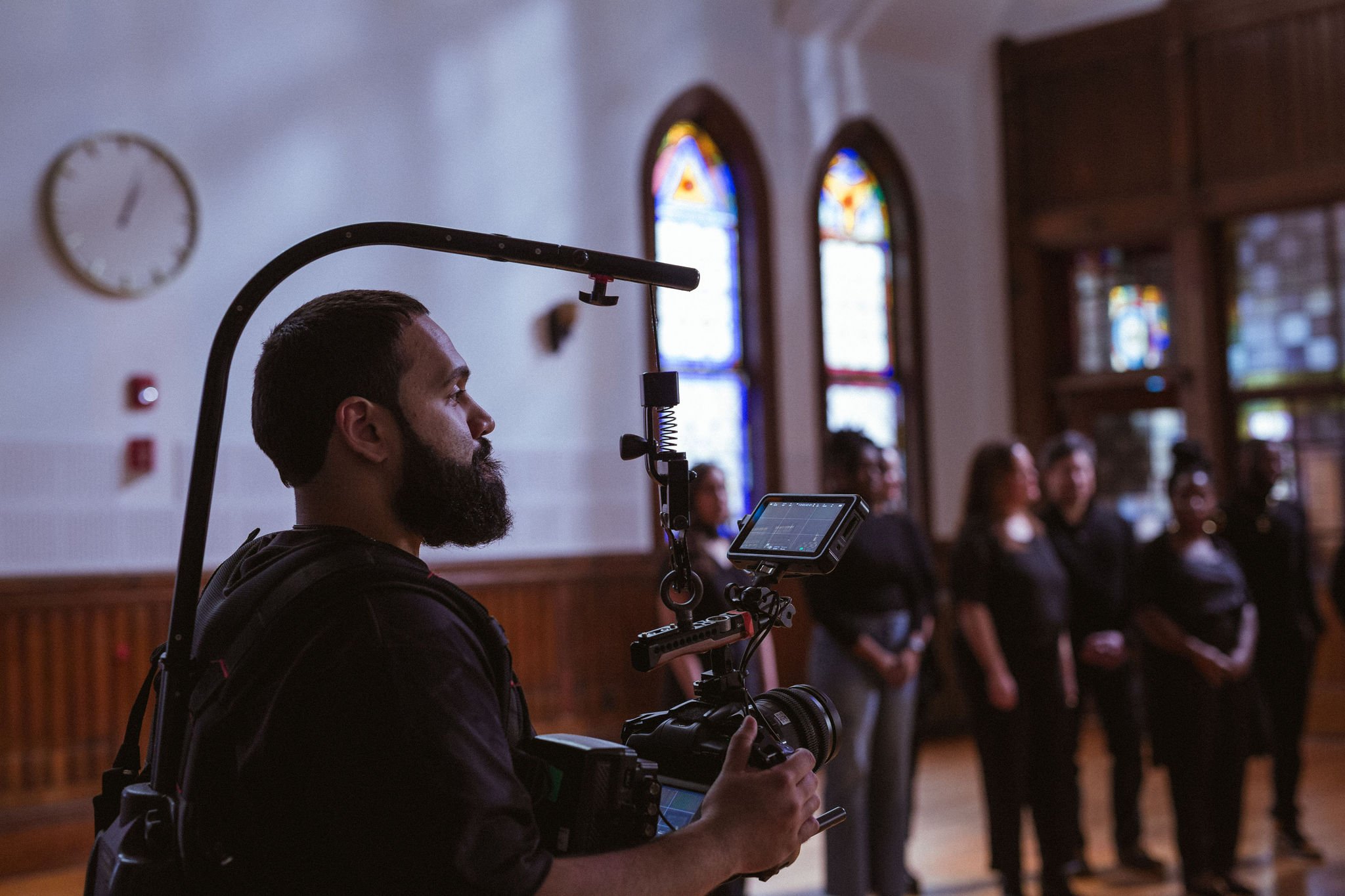
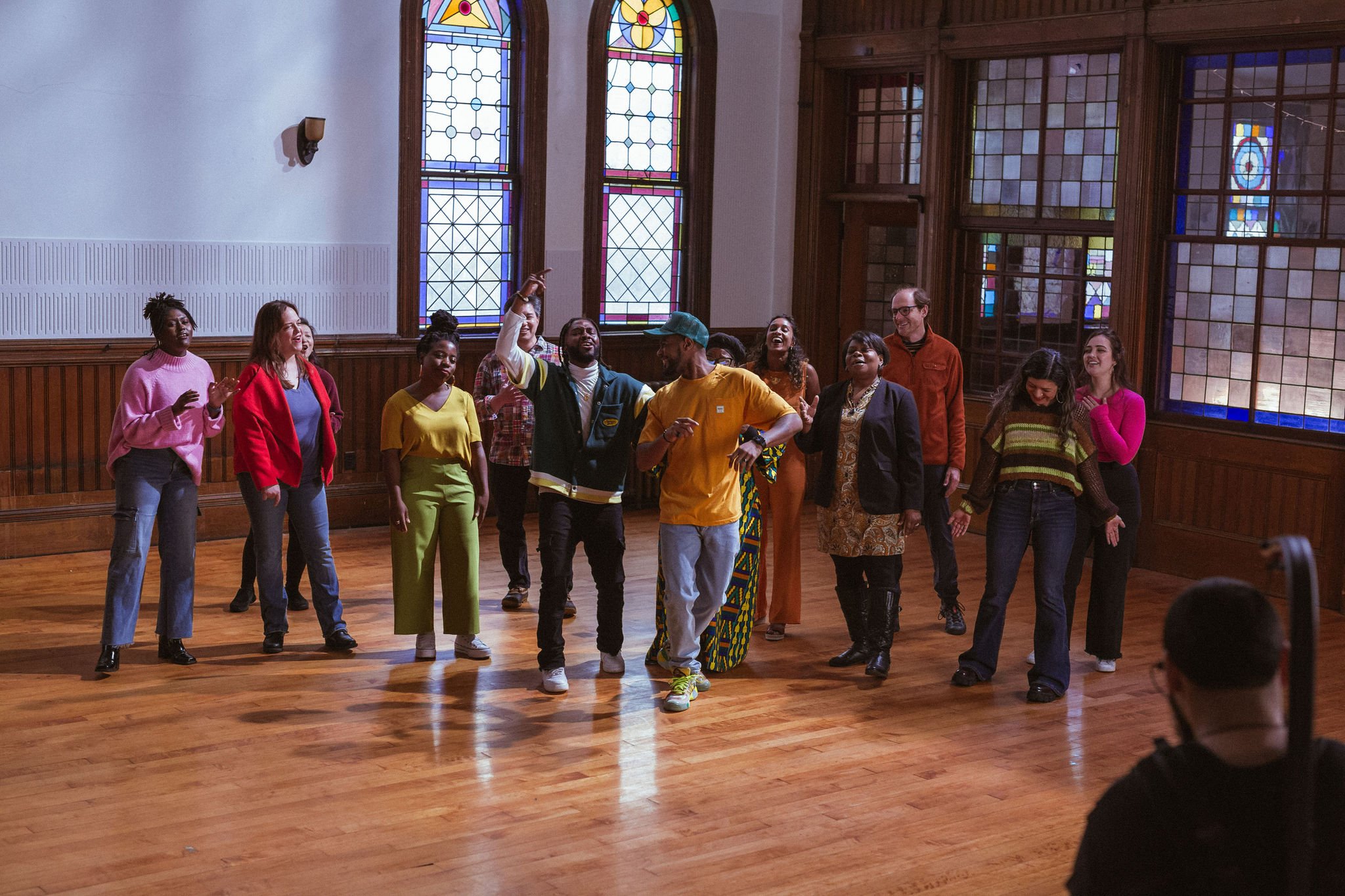
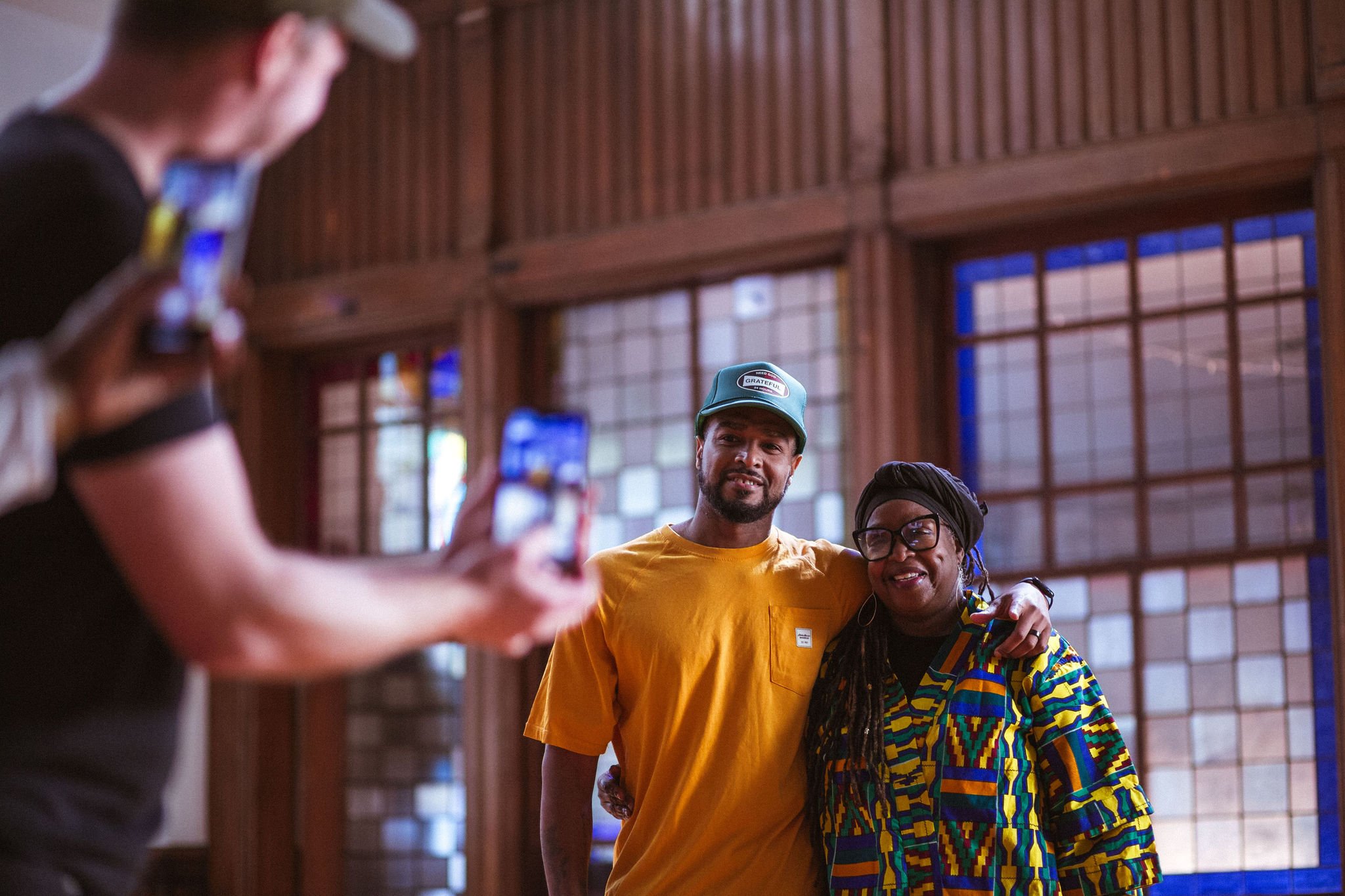
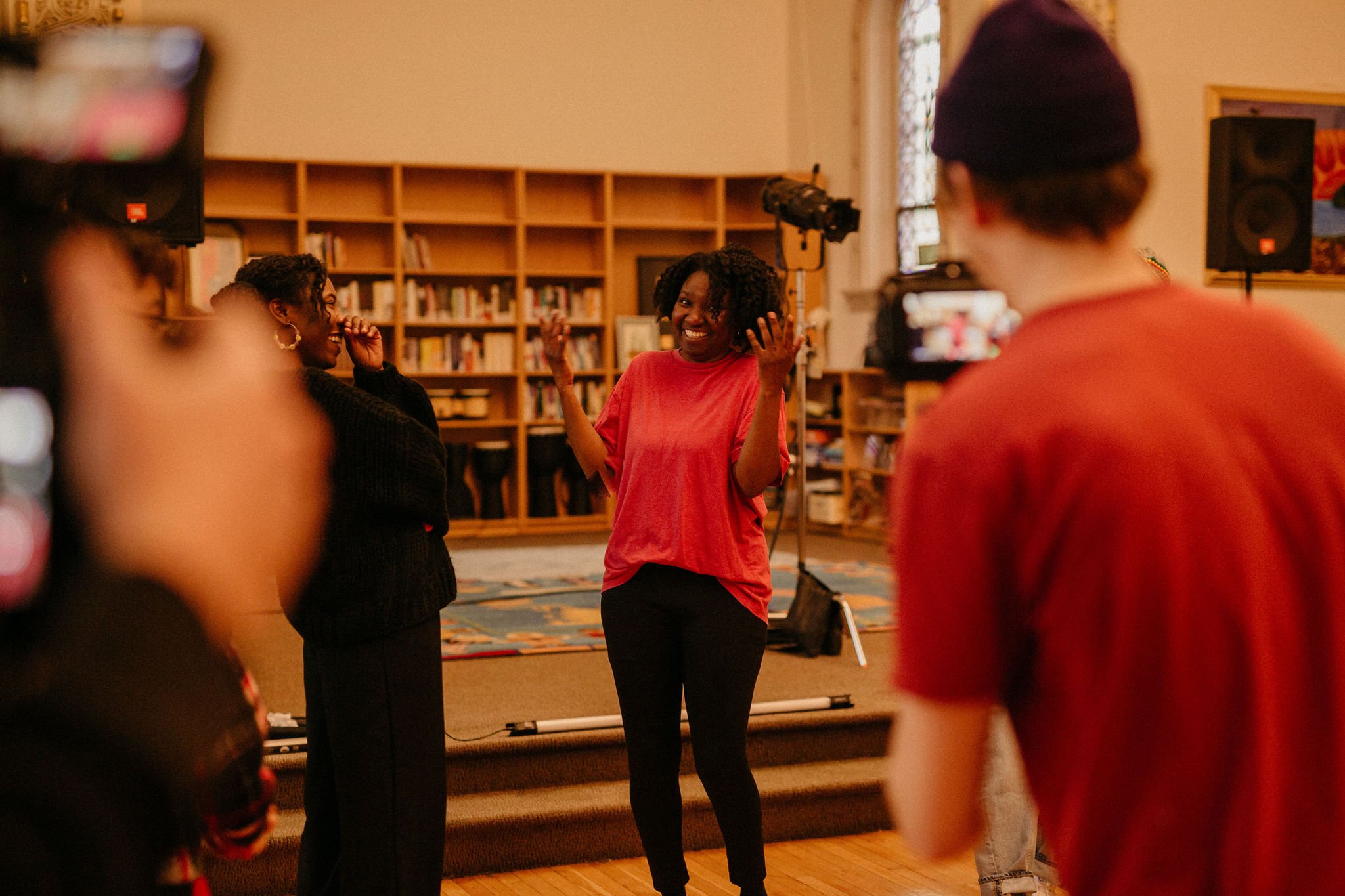
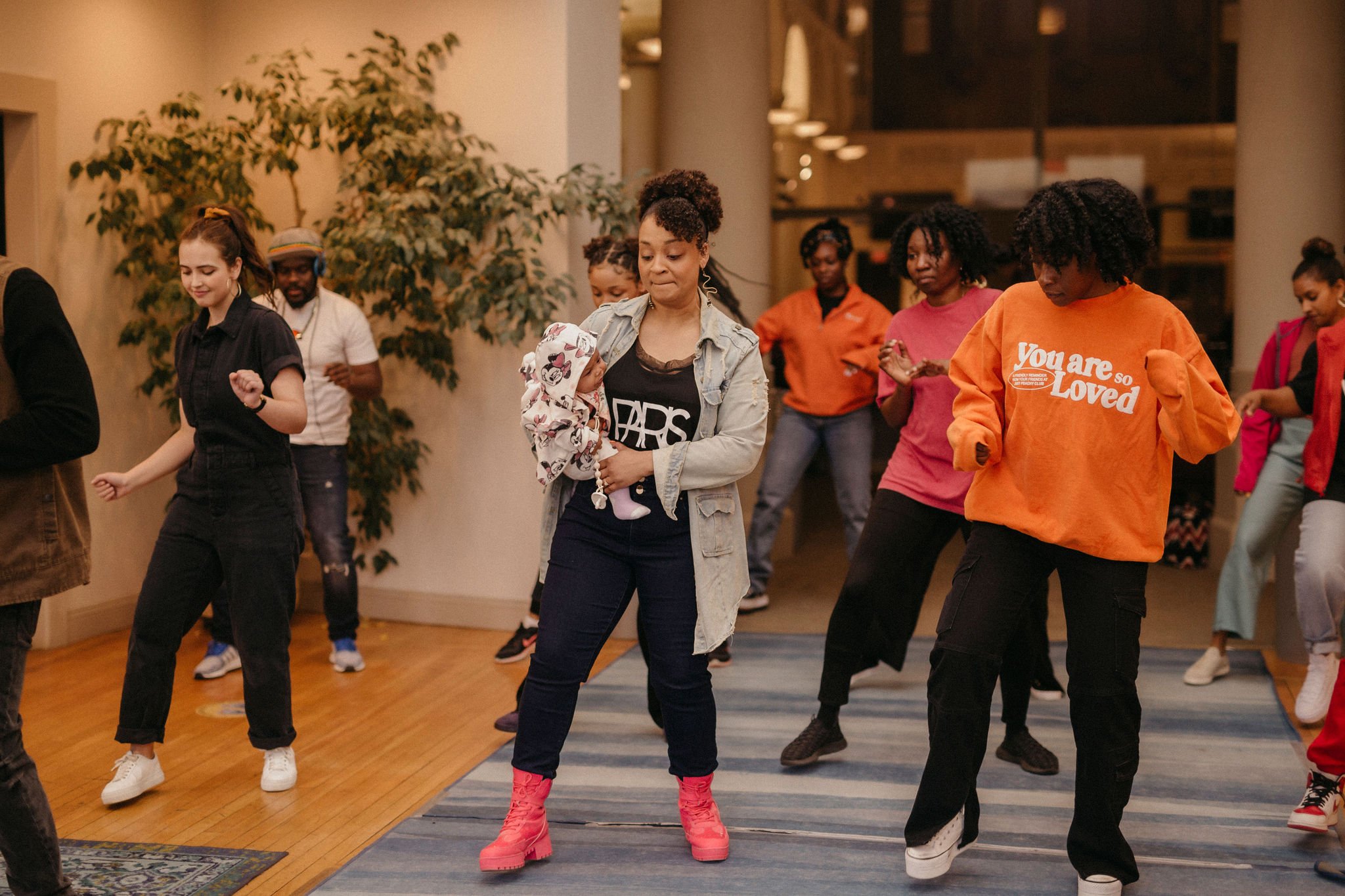

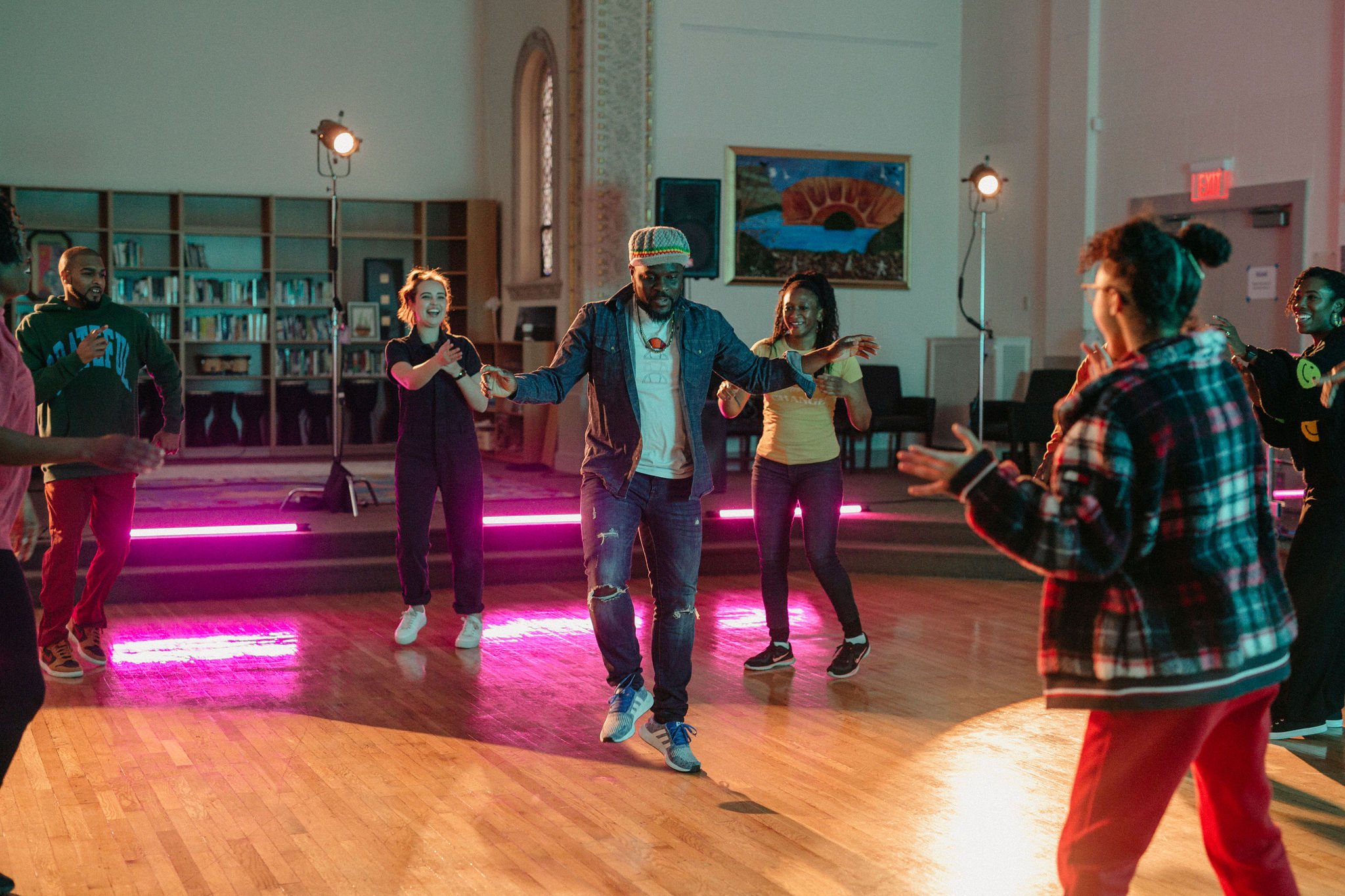
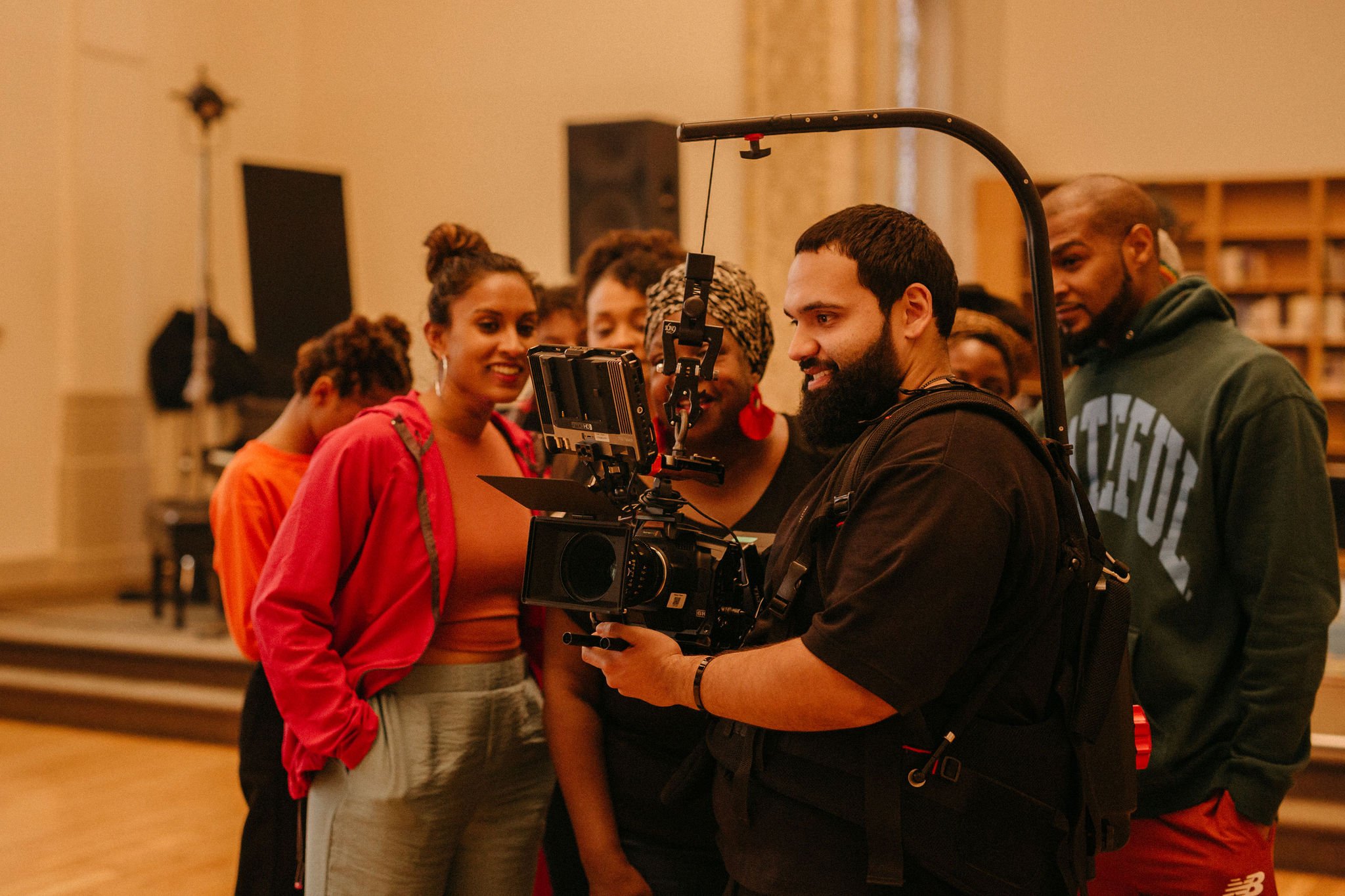
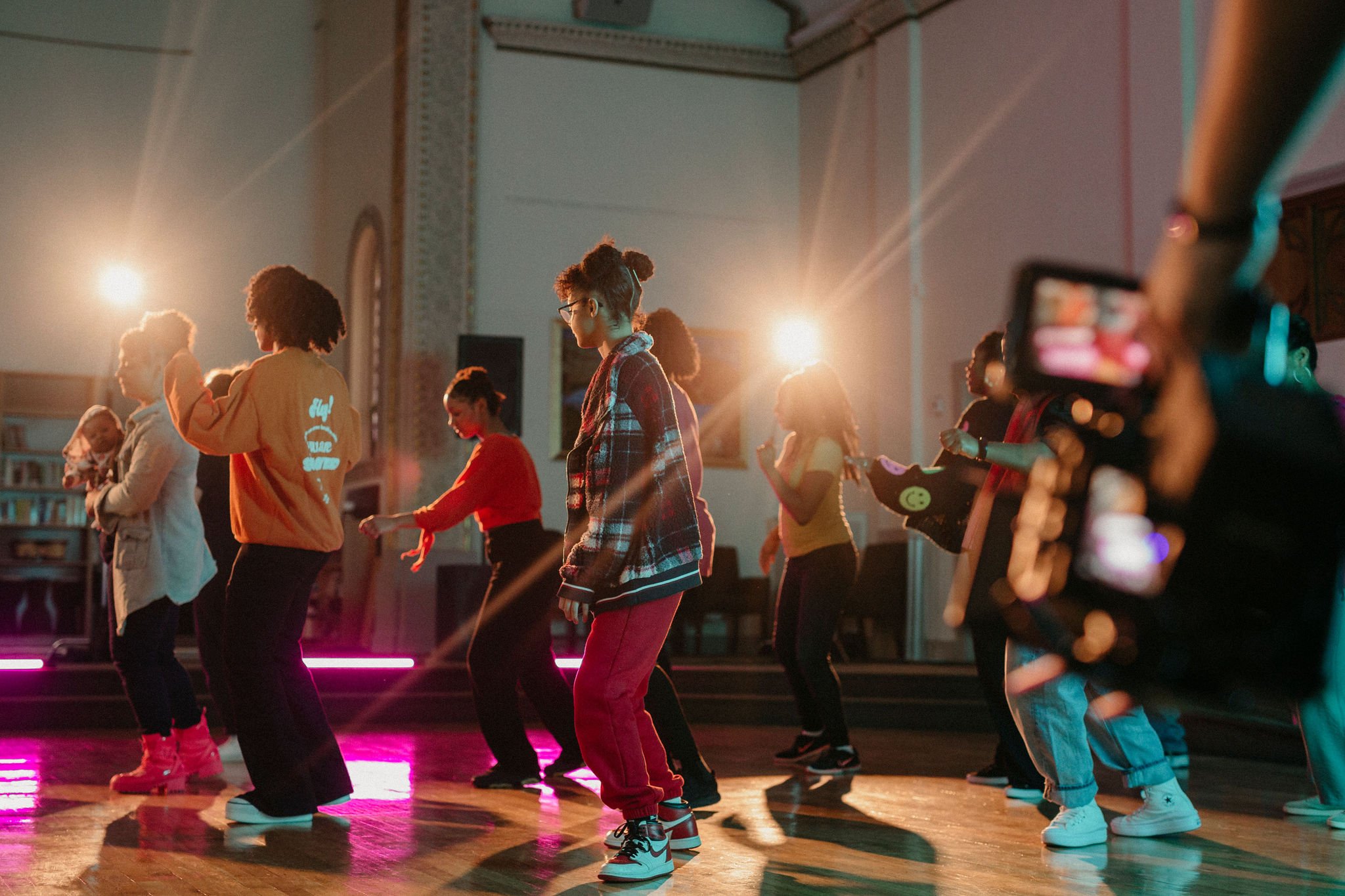



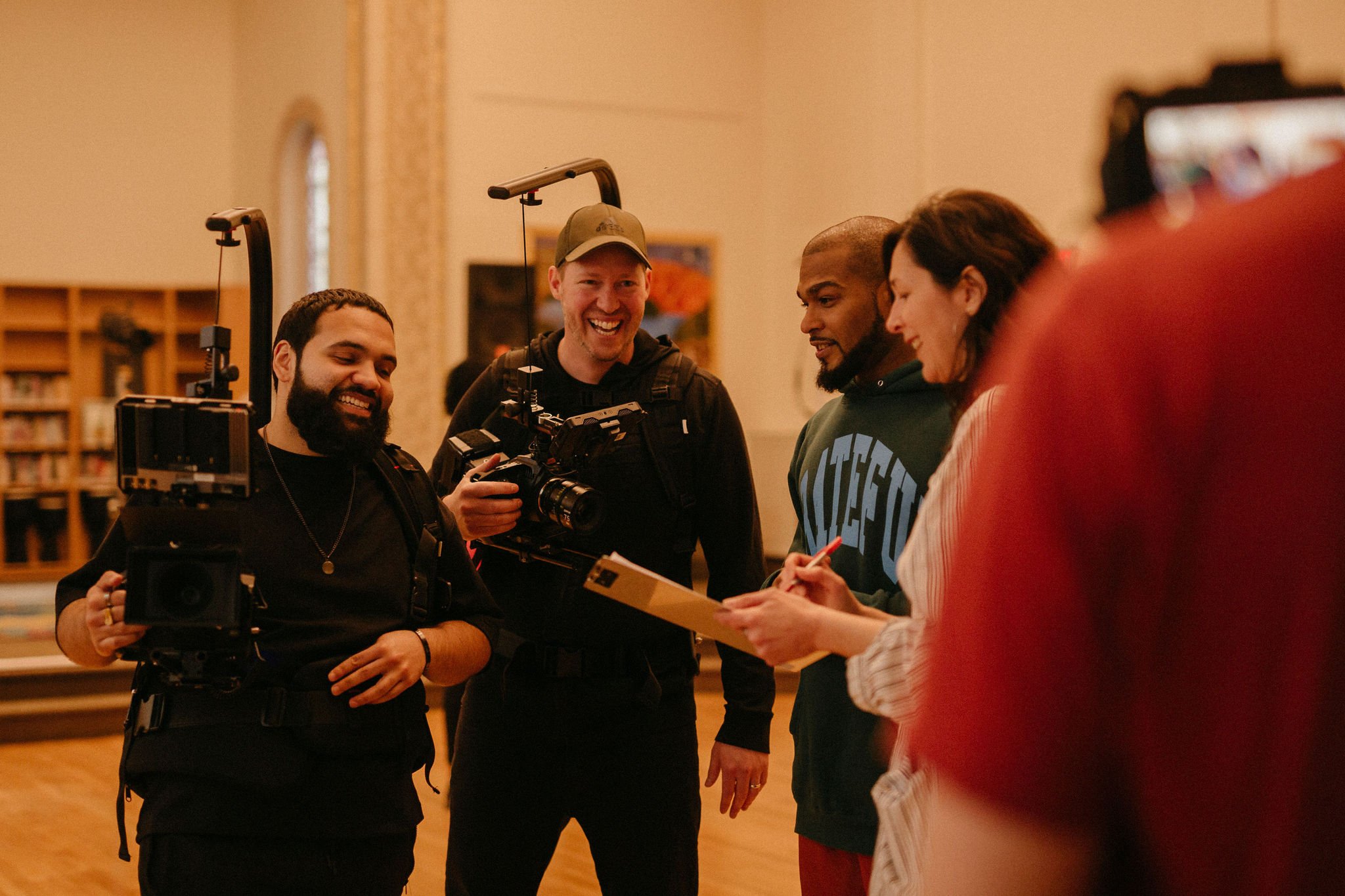
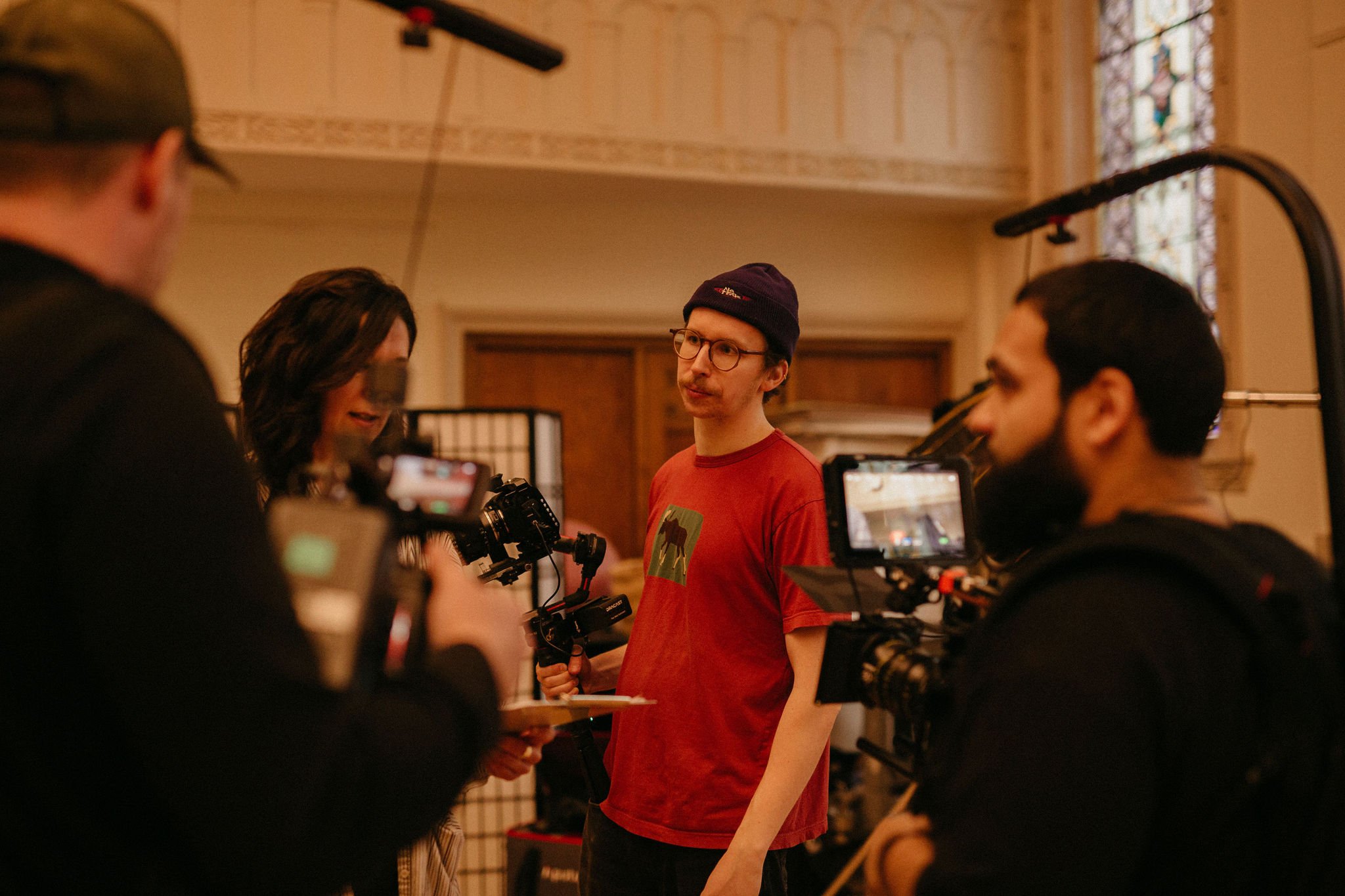


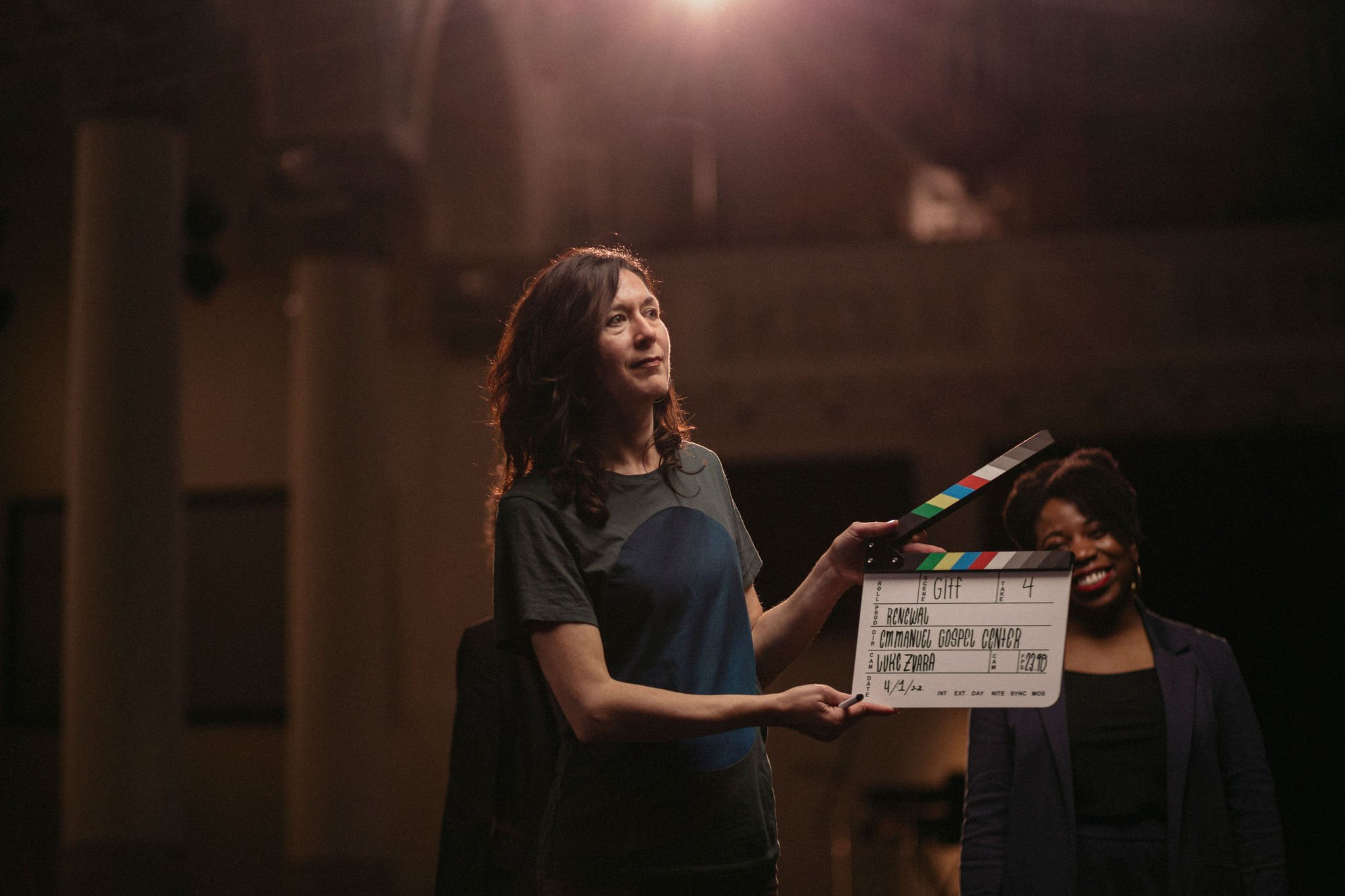

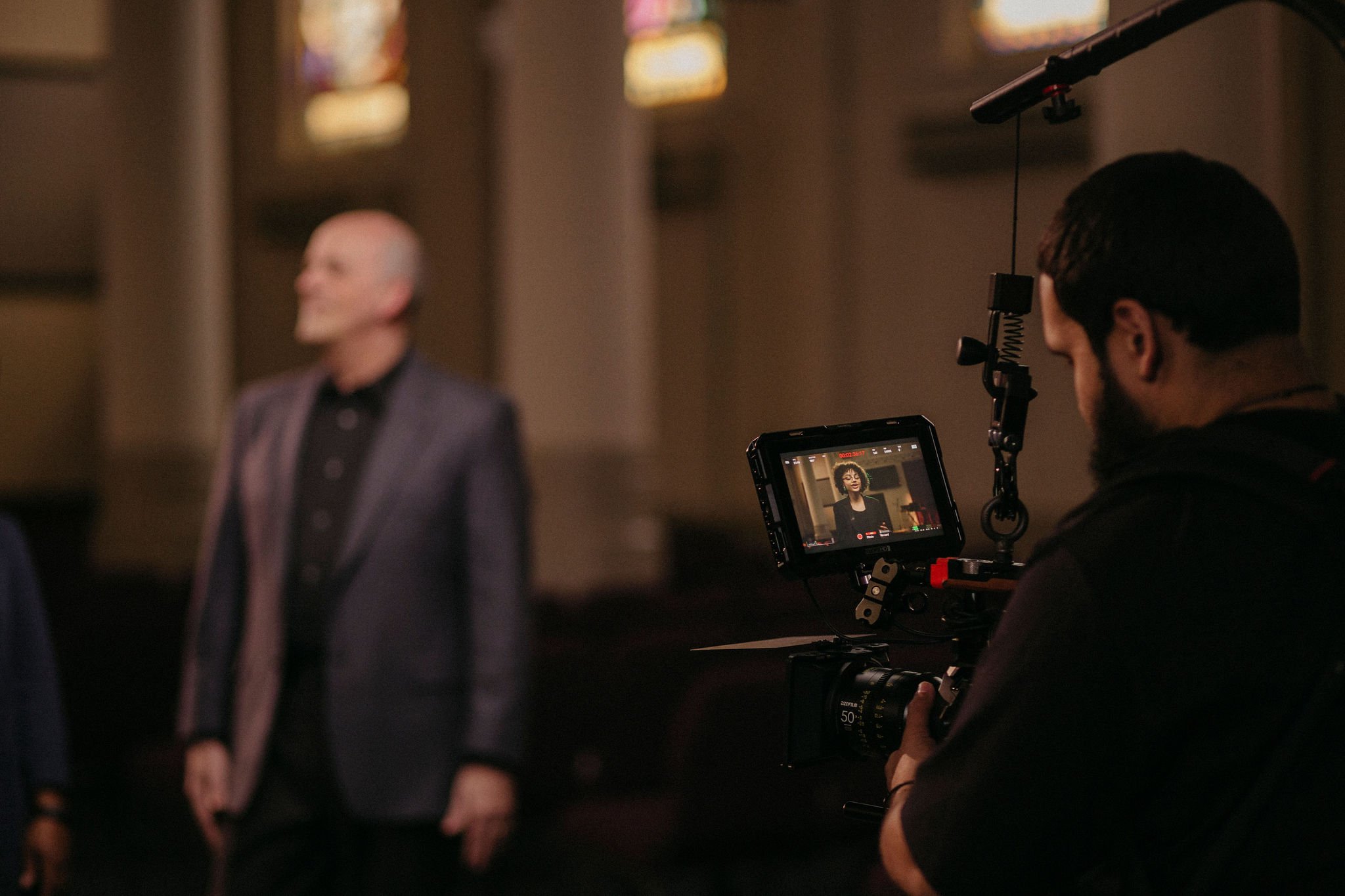
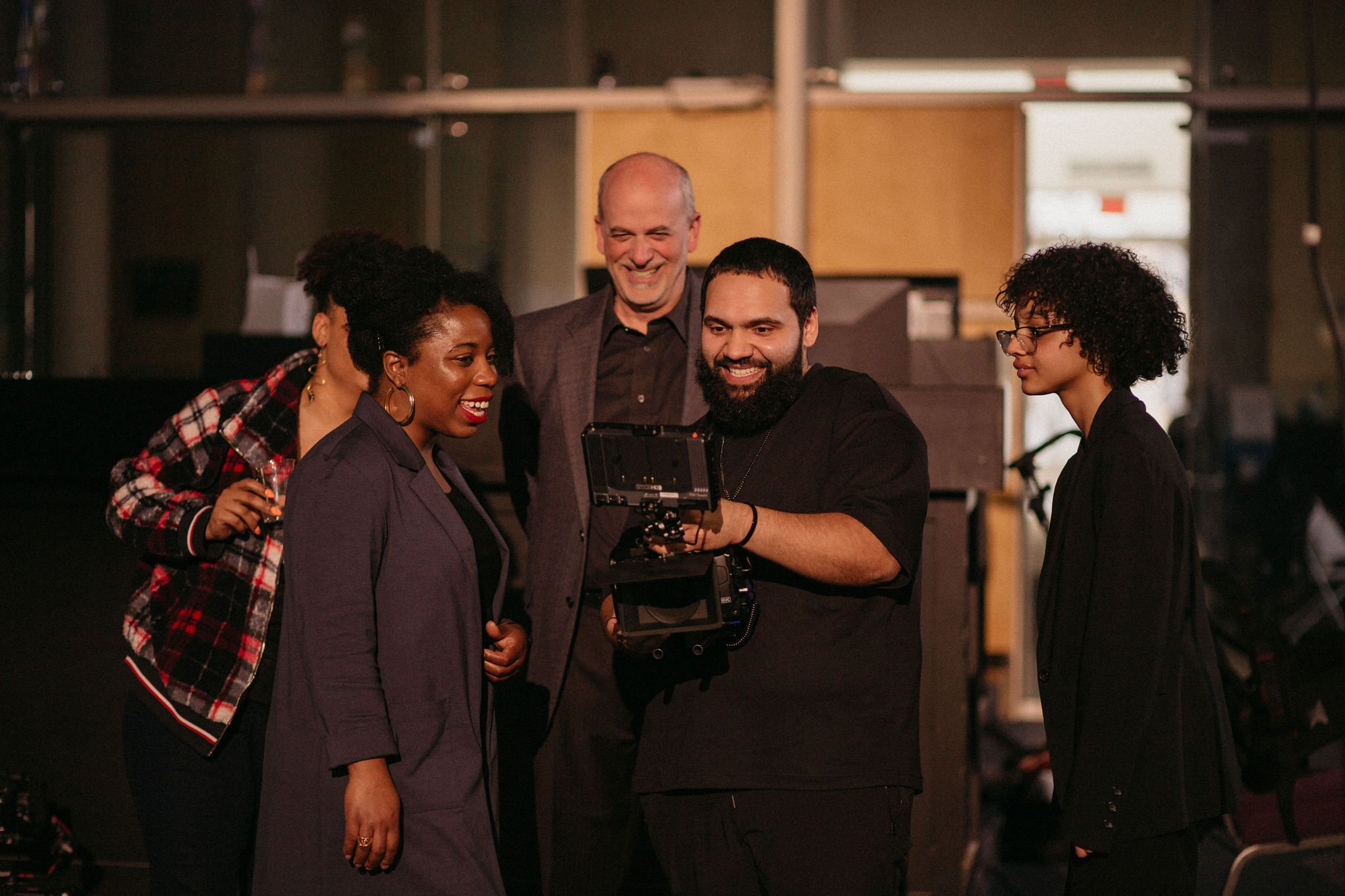
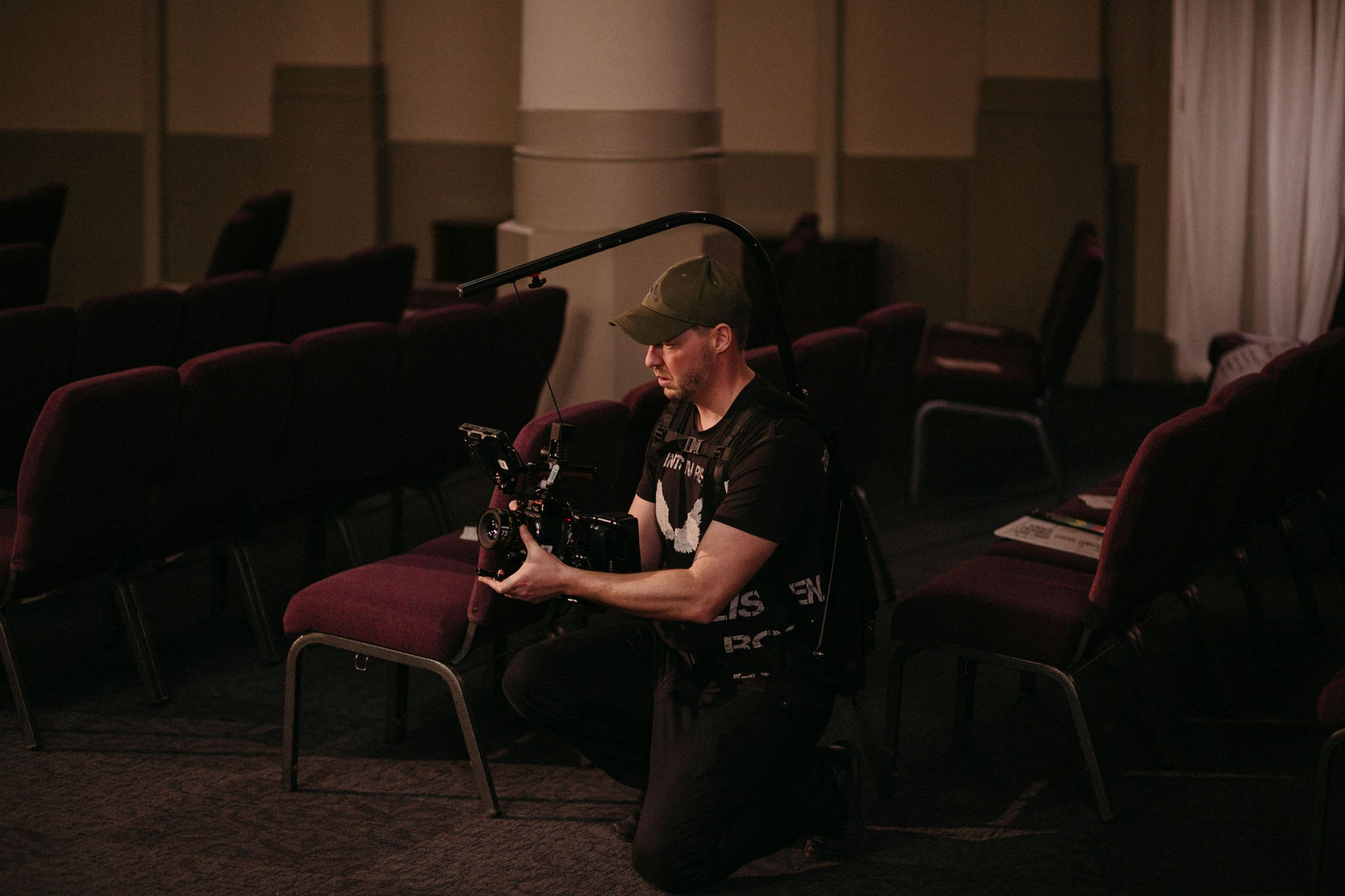
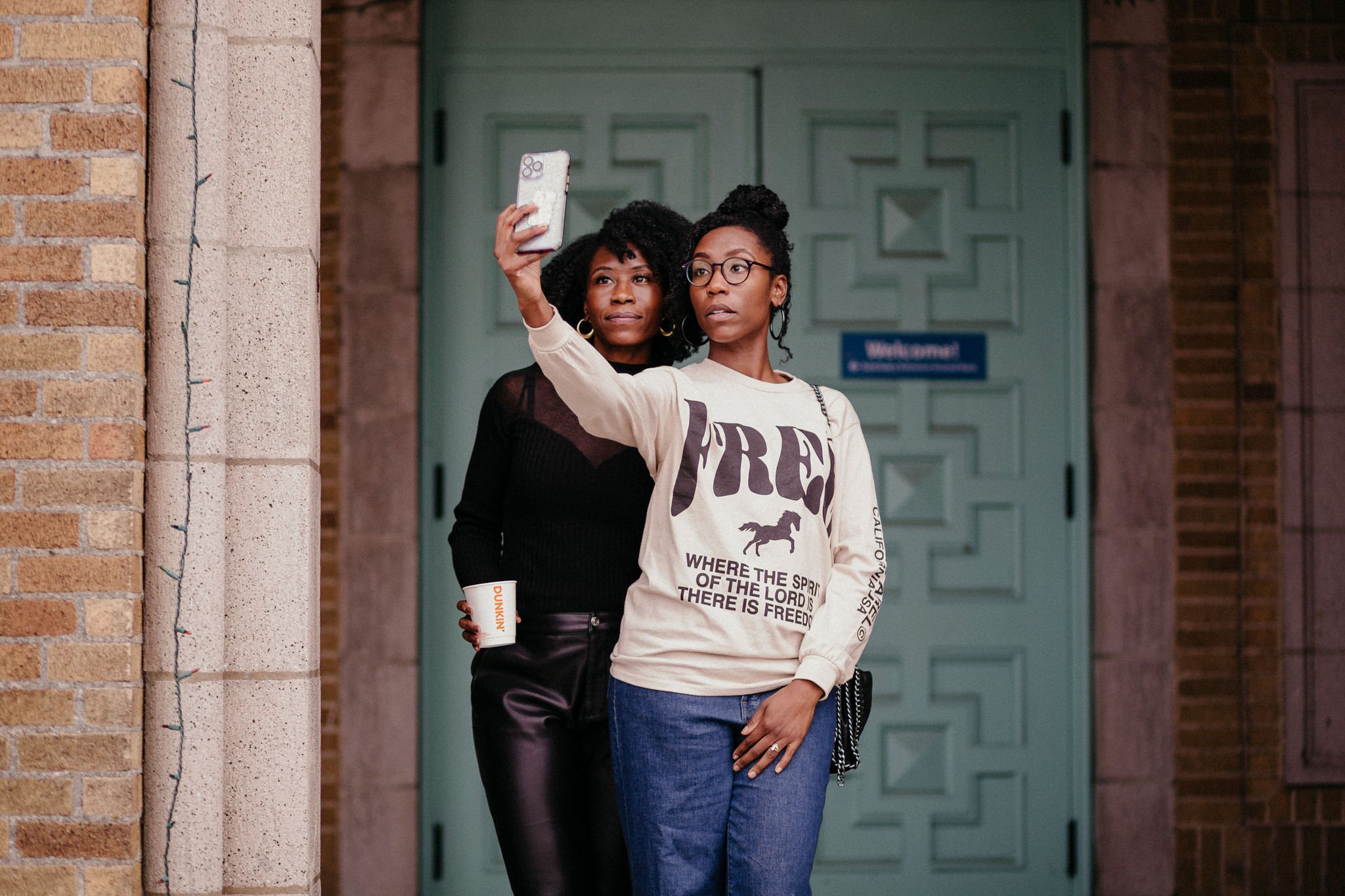


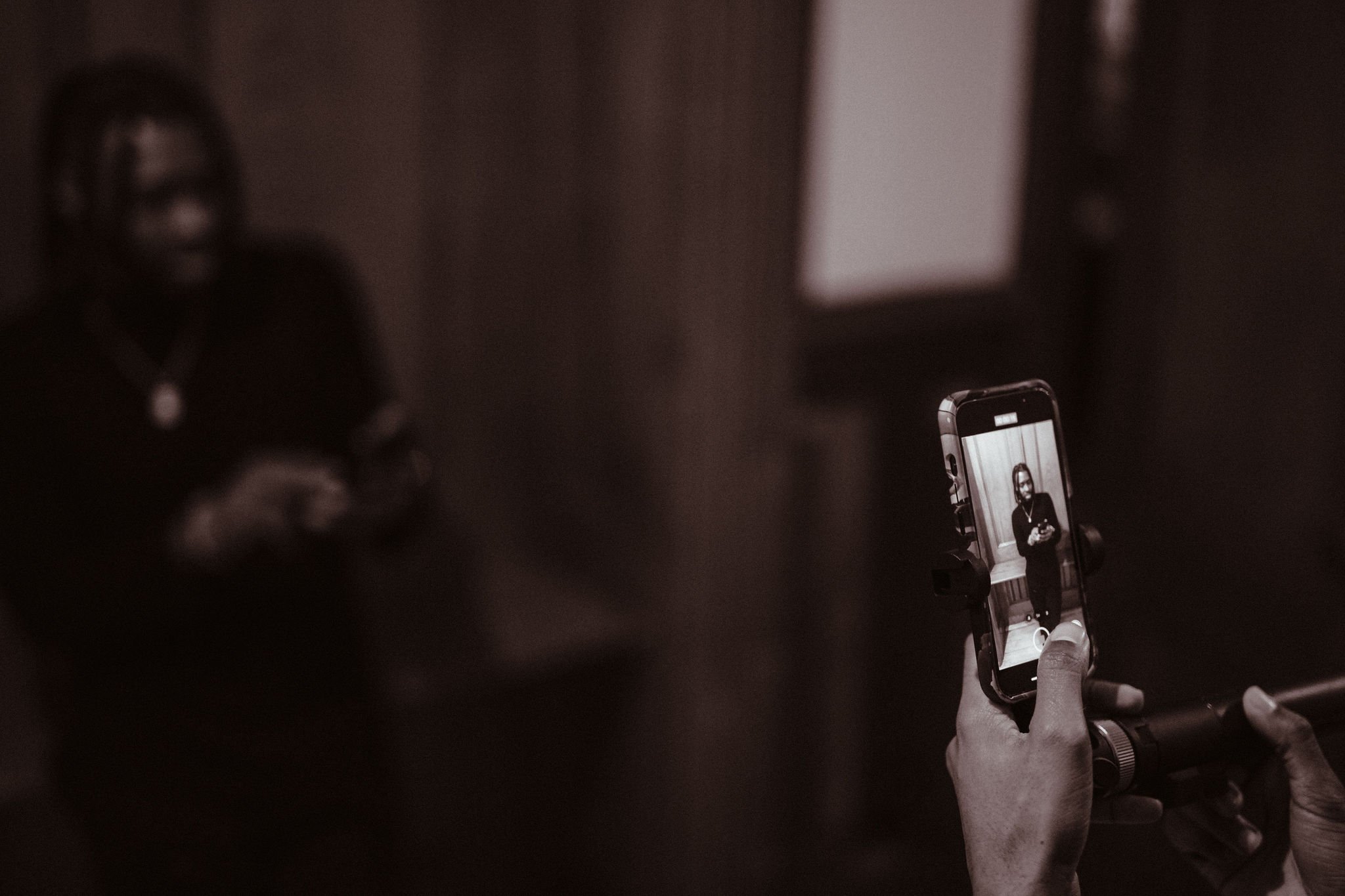
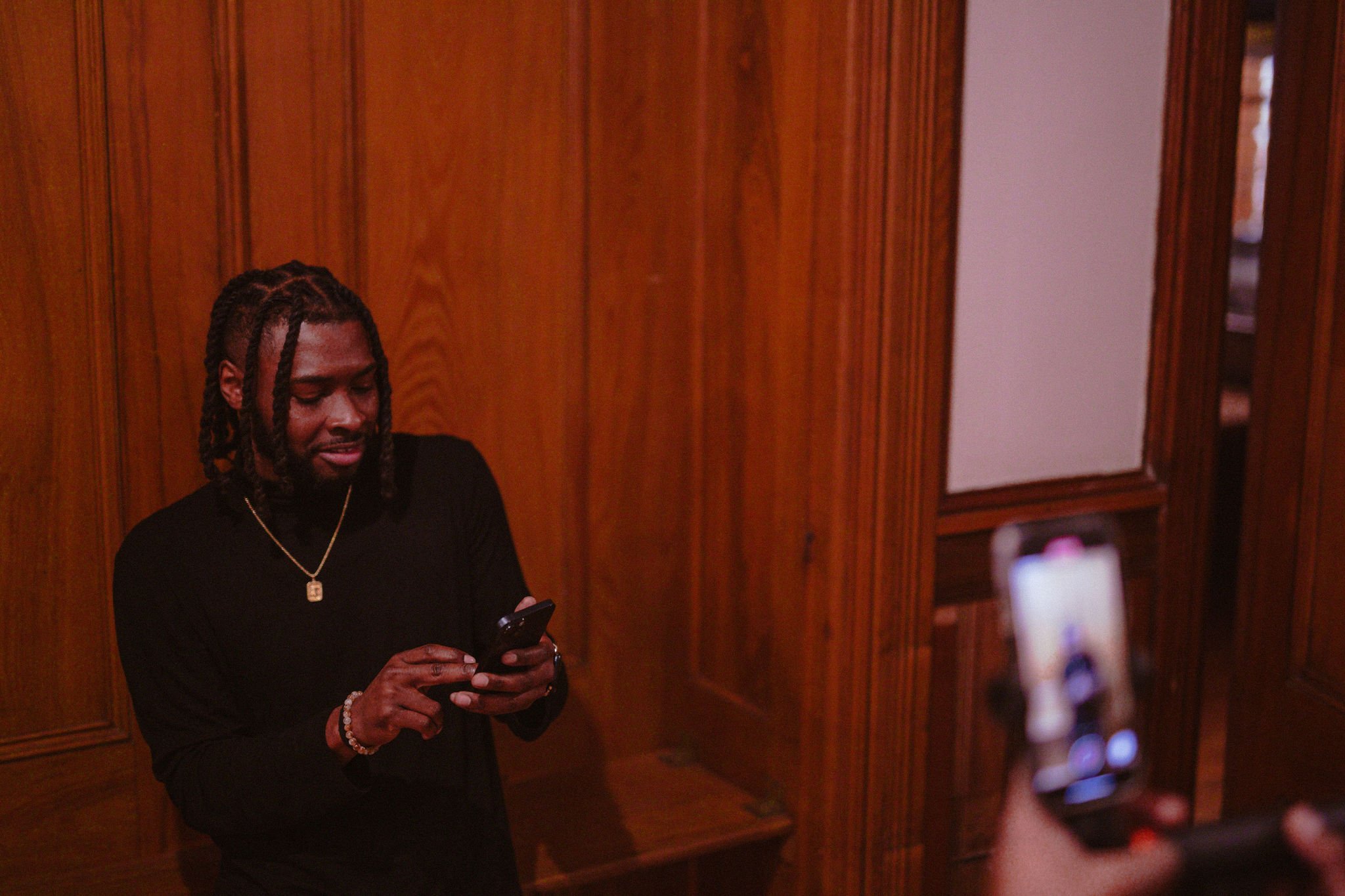

EGC film day in preparation for our annual fundraisers. Photography by Rosa Cabán at R9Foto.
Each year, we partner with different churches, which generously host us as we film content for our next fundraiser.
“It’s yet another point of connection and relationship-building that happens, where these relationships are leveraged and strengthened in the process to create something that will be a blessing beyond that moment,” says Saranya Sathananthan, researcher in residence at EGC. “Every church we’ve filmed in is aesthetically unique, and I do think that being in God’s house contributes to the quality and essence of his presence with us in the moment and in the feel of the final piece.”
Central Square Church’s historic building underwent a renovation in 2020, much like EGC’s fundraisers were remade for the pandemic era.
“Some sayin’ it’s the ending — I think it’s a new beginning.
”
Originally the brainchild of Jeff Bass, EGC’s executive director, our annual fundraisers began as dinners hosted by multiple partner churches around the region.
It was important to Jeff that the fundraiser not just raise funds but also advance the Center’s mission in multiple ways.
“I love that EGC’s fundraiser is missional for us,” he says. “It raises money for our work, yes, but it also invests in Christian creatives, provides a significant connecting opportunity for Christians throughout Greater Boston, and worships God by celebrating some of the ways we see Jesus at work in our city.”
(l-r) Hanna Garcia, Elijah Mickelson, Jalen Williams, Caleb McCoy. Photo credit: Rosa Cabán at R9Foto.
Over time, we consolidated the fundraiser to one location. For several years, we held the event at Florian Hall in Dorchester or Jubilee Christian Church in Mattapan. (EGC staff members still have flashbacks of cleaning the expansive sanctuary with a household vacuum cleaner before resetting all the chairs for the next Sunday’s worship services.)
Then came the pandemic, and like everyone else, we had to pivot. Our 2020 fundraiser consisted of a single video, “Cry Out,” which included Caleb McCoy’s prophetic line, “Some sayin’ it’s the ending — I think it’s a new beginning.”
That meant rethinking our approach to content and gathering as a community.
“God has made us as individuals with different gifts that come to make up and culminate in the whole body. When we collab, we truly honor ourselves, we honor God, and we also bless others.
”
Even before the pandemic, we had been moving away from presentations to embrace the diverse gifts of our staff members and ministry partners, adopting more creative content expressions.
But our next fundraiser marked a clear separation from the past. The pandemic was the first time we began working with local artists in a consistent, professional capacity, and we created a hybrid in-person and virtual concert event that resembled a drive-in movie theater experience.
Caleb, EGC’s marketing manager who wrote and performed “Cry Out,” says it’s a beautiful thing to collaborate with talented artists, dancers, filmmakers, musicians, poets, photographers, and singers.
“This has strengthened relationships among the Christian creative community, and continues to be a blessing in the city,” he says. “And to think, this largely came out of the chaos of COVID, when many artists shared the same uncertainty with their vocation and expression. It just shows how God continues to make beauty from ashes.”
Jen Aldana, singer, songwriter, and worship leader. Photo credit: Rosa Cabán at R9Foto.
For EGC staff, friends, and ministry partners, it’s a deeply meaningful experience.
“I am inspired by this unique space where filmmaking, art, and church community blend together to create something beautiful and sacred,” says Hanna Garcia, development manager at EGC.
“God has made us as individuals with different gifts that come to make up and culminate in the whole body,” says Giovanni Acevedo, poet, photographer, and filmmaker. “When we collab, we truly honor ourselves, we honor God, and we also bless others.”
“Performing and participating in EGC’s fundraiser event was an incredible blessing!” says Jen Aldana. “As a Boston-based artist, it was special to see my work come to life in a new way by creating an acoustic version of my song ‘Trust in You’ — a song about trusting in God through every season, with EGC’s vision. They stand true to their mission by incorporating the arts and empowering and uplifting others. . . It was truly a blessing to take part in.”
“As a Boston-based artist, it was special to see my work come to life in a new way.”
Each film day is a unique opportunity to connect with these artists. Saranya says she was blessed to catch up with them and hear about the latest in their lives.
“It’s beautiful to see believers with different skills and active expressions of faith come together and contribute to something that uniquely demonstrates those talents and heartfelt stories while also reflecting a bigger picture of our amazing God and all he can do through those whose lives are surrendered to his purposes,” she says. “I left the time feeling full of joy.”
That joy sees the team through what can sometimes be a messy process of making the sausage.
“There’s a bit of chaos and feeling that spike of adrenaline, especially for those who are keeping track of the schedule, managing the equipment, and helping with all the logistics that are involved in making it happen,” Saranya says. “All these are things that you don’t really get a grasp of in seeing the final piece.”
Saranya Sathananthan. Photo credit: Rosa Cabán at R9Foto.
Saranya says she’s wrestled with the filming process. It doesn’t always feel like a natural worship experience with all the bright lights and lidless, one-eyed cameras staring you down.
“But I’ve been surprised at how the Spirit often moves even in the constrained settings we often film under,” she says. “There was definitely a moment when our EGC choir was singing the Doxology together, hearing our voices magnified through the acoustics in the room, with Pastor Larry [Kim] and Laura [Mitchell] watching and singing along, that I felt like this was my sincere thanksgiving and worship to the Lord. I was grateful to be there with everyone amidst the non-stop laughter and great energy that was created together.”
As Saranya says, we hope this joyful creation and artistic expression “speak truth and encouragement to people in our collective moment and are also often timeless for those moments of needed encouragement.”
You can watch the concert anytime by subscribing to our YouTube channel.
The EGC board, staff, and friends choir at our 2024 film-day shoot. Photo credit: Rosa Cabán at R9Foto.
Christian Creatives and the Church
The arts are an important opportunity for spiritual formation. How can churches reach unbelievers through the arts while caring for the creatives in their pews at the same time?
Photography by R9 Foto for The Emmanuel Gospel Center
Christian Creatives and the Church
It’s time for the two to support each other.
by Hanno van der Bijl, Managing Editor, Applied Research & Consulting
Armani Alexis Acevedo is an artist, designer, entrepreneur, and hip hop artist. Everything he does is to glorify God, but at one point in his life, he just could not see a home inside the Church for his creative passion.
He is thankful for the spiritual foundation he received from his church growing up but he didn’t feel fully supported in his calling until recently. A lot of that has to do with the buy-in of his pastors, including Davie Hernandez, co-senior pastor of Restoration City Church.
“It definitely is an encouragement to know that your pastors support you in that way, from the little things, even sharing my posts, or my songs, or our collections — he's probably wearing one of our tees right now,” Armani said. “Those things really mean a lot.”
But Armani still hears parishioners voicing their disapproval: “I don’t think this glorifies God” or “This art is too loud.” These moments don’t come without pain as Armani invests hours and heart into his creative projects.
“As artists, I feel like we do see things a little differently and appreciate detail more and the commitment behind it,” he said.
Christian creatives like Armani intentionally pursue their vocations as believers and artists, actively integrating their faith and work.
They live in the tension of a Church trying to stay faithful in a changing world. They’re caught between competing visions of what the Church should look like and how it should operate.
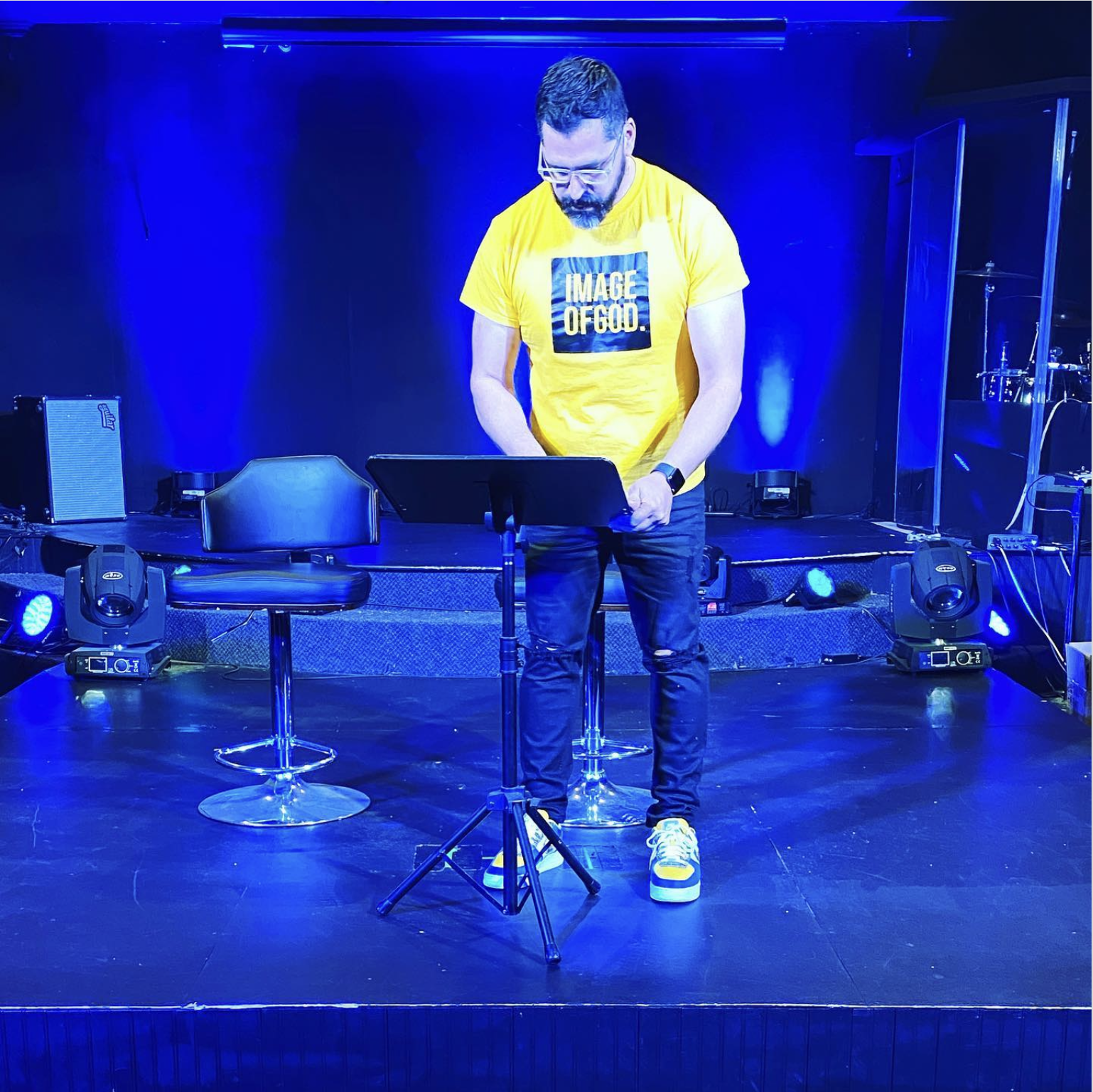


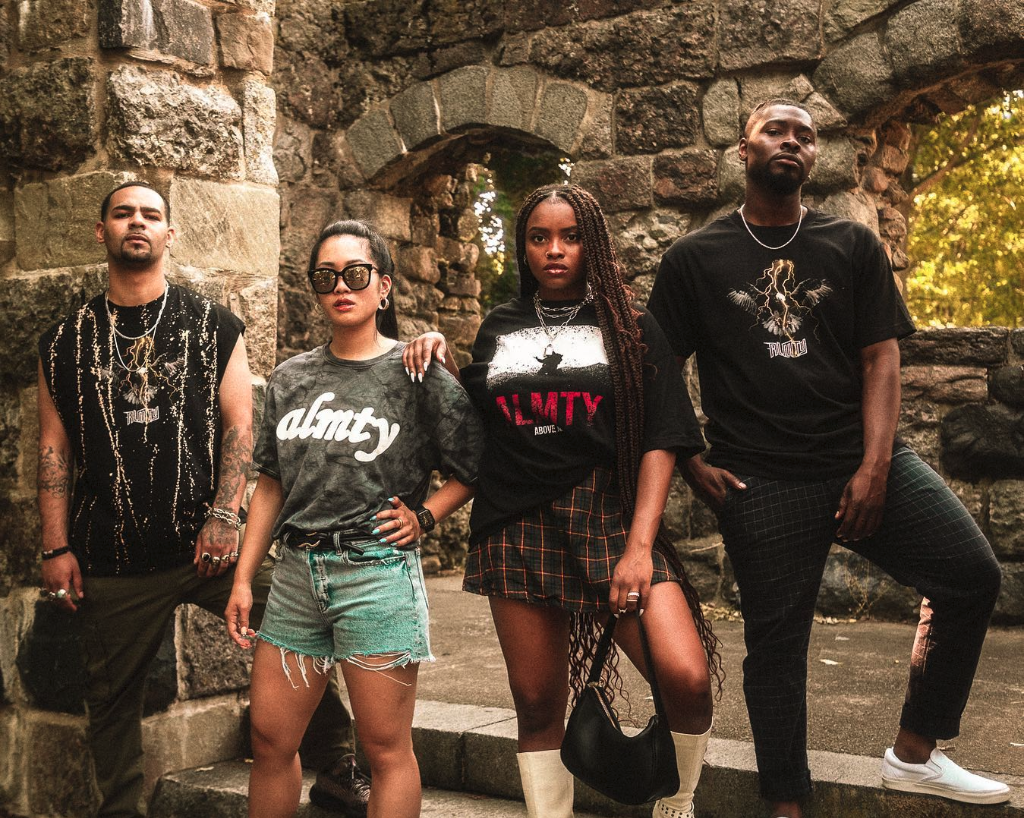
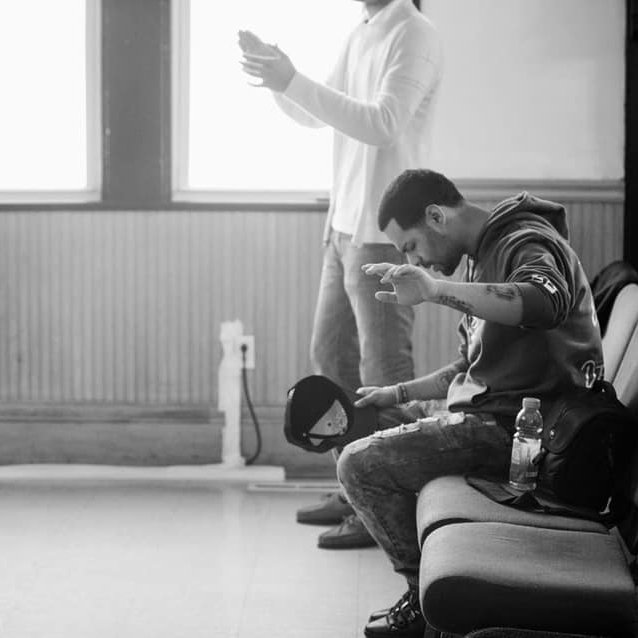
They don’t always feel seen. Many feel like spiritual orphans in a world that neither understands nor values their faith and a Church that neither acknowledges nor appreciates their gifts.
Some church leaders do see them. They say Christian artists are an untapped resource.
Pastor Valerie “Val” Copeland, pastor of Neighborhood Church of Dorchester, said God has given every Christian gifts and skills for a reason.
“Christian creatives sit in church without their gifts being used, without space being made for their gifts, while they sort of dry up on the vine,” she said. “If we need a singer or guitarist or drummer, we'll search them out. But where's the imagination to say if they are gifts that God has given you, then it's incumbent upon us to figure out how to make room for them?”
“Christian creatives sit in church without their gifts being used, without space being made for their gifts, while they sort of dry up on the vine.”
It hasn’t always been this way. Historically the Church has been a driving force for the arts, integrating it in its worship, teaching, and architecture. In some places marked by post-Christianity, the churches may be empty but their beauty continues to bear witness.
The arts have the power to speak to people in ways that sermons can’t. The Christian creatives sitting in the pews could help address some of the biggest challenges facing churches today. This is an opportunity for churches to support creatives while at the same time mobilizing them for mission.
In an effort to help churches do that, we connected with Christian creatives and pastors to learn from them how churches can support and equip the artists sitting in the pews.
A creative God
Christian creatives say they draw inspiration from the Creator — and that churches should too.
“God is the first artist,” Pastor Val said. “The beauty of art and the drama of art calls our hearts to something greater than ourselves and reminds us that God’s design is intentional: the way that he uses color, the way that he uses the drama of thunder and lightning, the way that he calls us to be creative in how we love the world.”
God’s creation is not only beautiful, it's also unique. He made humans in his image to reflect his creativity. For Michael “Mike Mack” McPherson, founder of Elevation Conference, the rich diversity of God’s created order is the “essence of creativity.”
“God is the first artist. The beauty of art and the drama of art calls our hearts to something greater than ourselves and reminds us that God’s design is intentional.”
“He could have easily made every single bug the same — every single ladybug could have the same amount of spots, and he decided that he would splatter and make them all look so different and so unique,” Mike Mack said. “But then we come into the Christian world and we look at art and music and we're like ‘It's supposed to sound like this.’”
Creatives embrace the call to “sing a new song.” They thrive on expressing themselves through their work, improvising to bring something new out of the old.
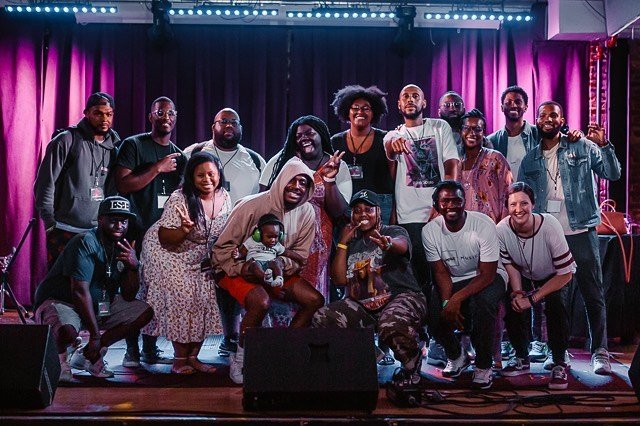
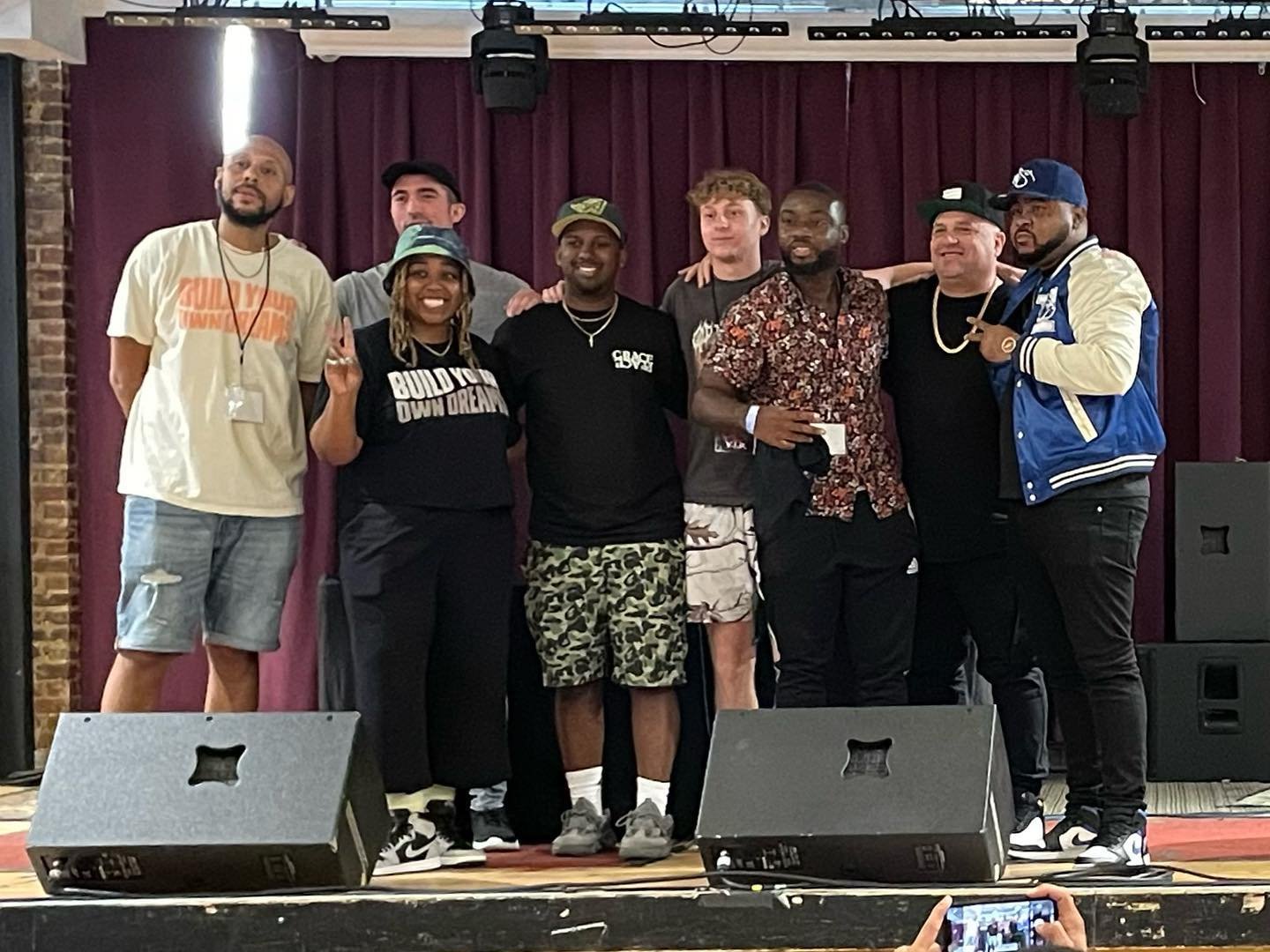

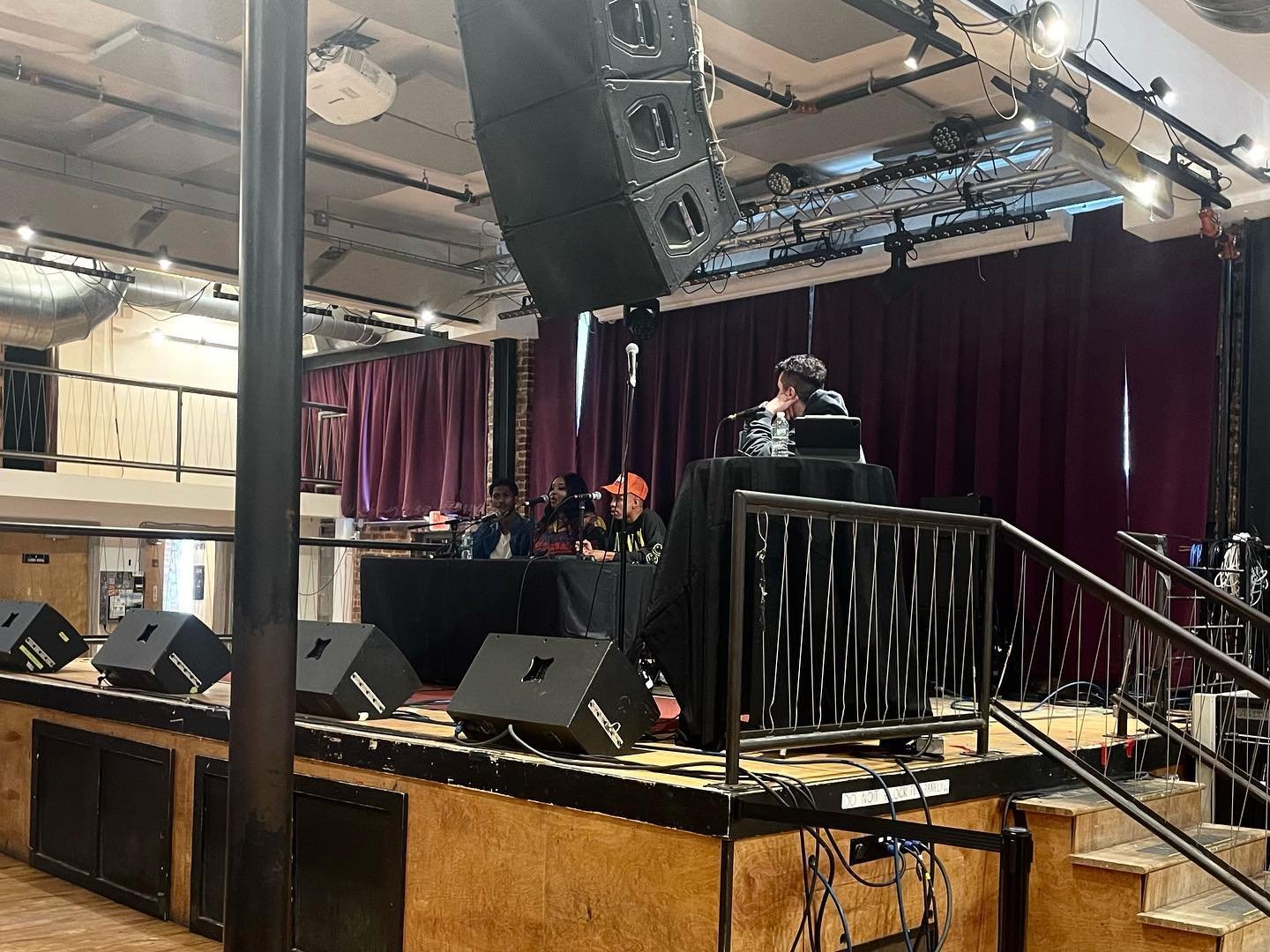
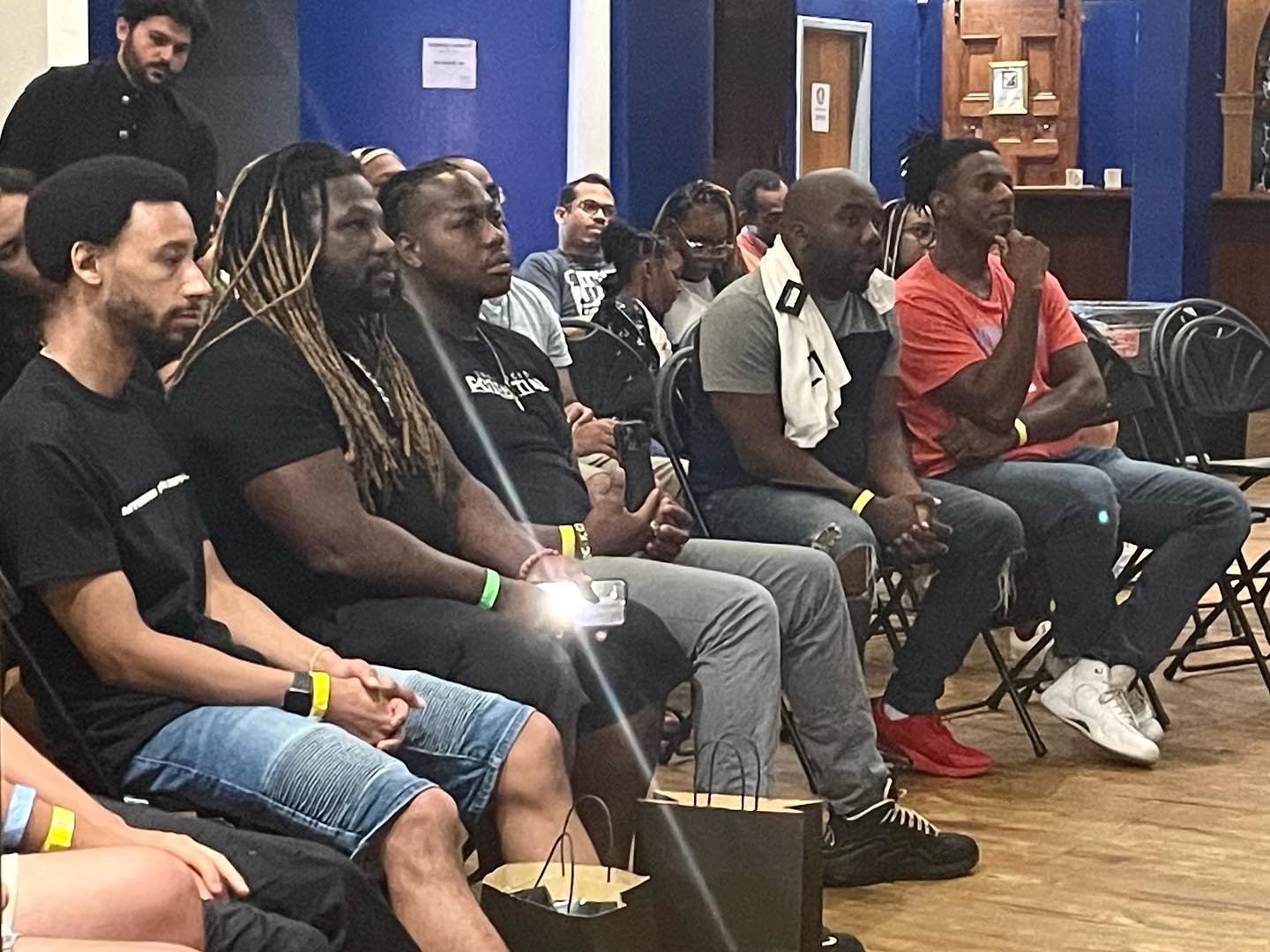
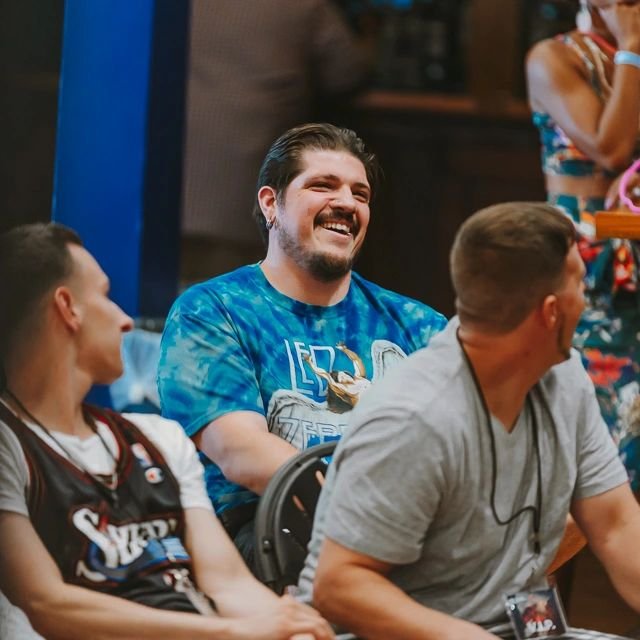
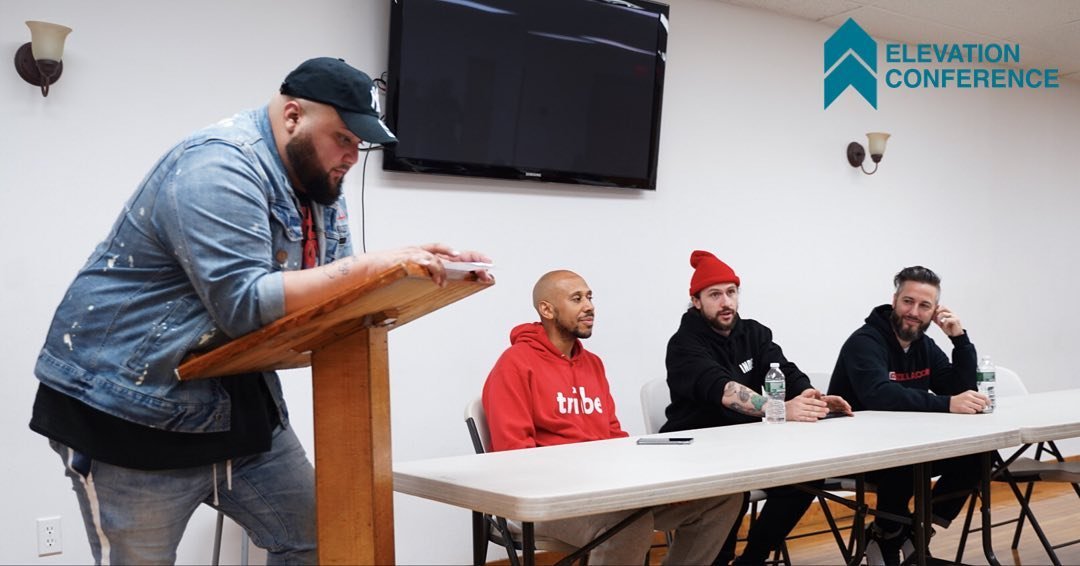
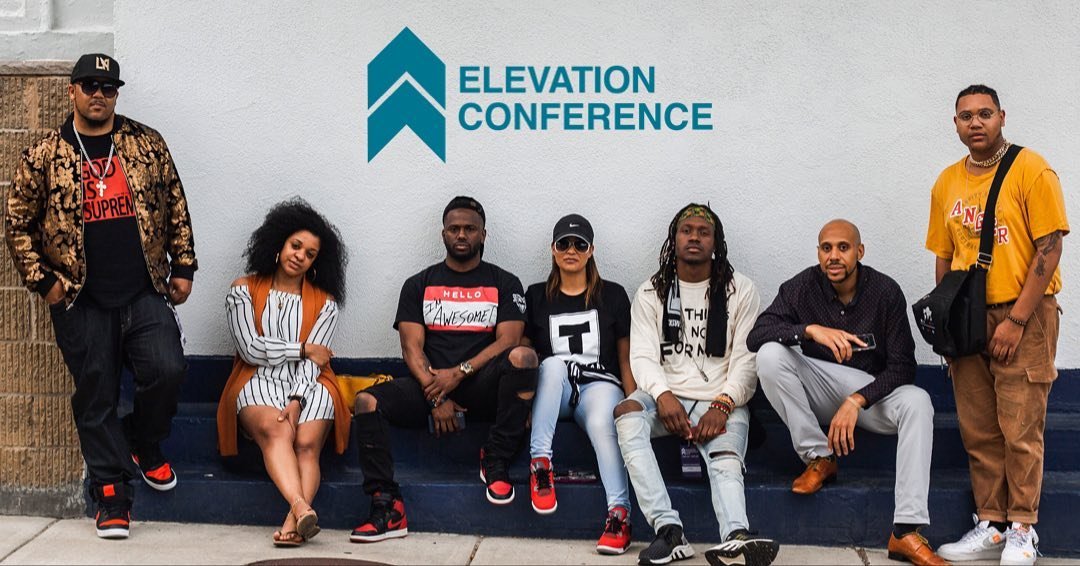
Many creatives feel that a lot of churches function exactly the opposite way. The familiarity of traditions provide safety and stability; however, if churches hold them too tightly there can be little room for something new. The tension between creative expression and commitment to tradition can often be at odds.
“The overarching problem is that the Church is terrified of so much. The Church creeps around so much,” Mike Mack said. “The Church still has — despite what Paul said — a 'taste not, touch not' mentality (Col. 2:20-23) about almost everything that could be considered sin and is probably not actually sin.”
Christian creatives often face the impossible task of producing art that checks all the boxes for churches theologically and for the world aesthetically. Placing restrictions on artists that don’t concern the core message of the gospel chokes creativity.
A creative Church
The COVID-19 pandemic forced churches to get creative. The crisis compounded the new challenges with long-standing issues that surfaced and threatened division. Many people did not return to worship services after lockdown measures were lifted, and increasingly younger generations don’t want anything to do with the institutional church.
To minister in this new reality, Pastor Val said “our missiology has to shift.”
“I talk to a lot of folks who are just really hanging onto the Church by a string,” she said.
Christian ministry is often geared to preaching that appeals to the head, but it is missing out on the power of the arts to reach the heart.
“This is definitely an area that the Christian Church has fallen asleep on,” Pastor Val said. “We've sort of limited God to the area of our brain: think about it, write about it, talk about it.”
Pastor Valerie Copeland
But with the state of the broader culture, this will not be enough to communicate the gospel effectively to many people. The call of Jesus’ Great Commission is to “go” to people instead of telling them to “come” to the Church.
“I think too often we're waiting for people to meet our criteria — and it's completely backwards,” Pastor Val said. “This idea — I'm willing to do whatever it takes to tell you about God: a God that loves you, a God that inspired all of this beauty, and a God that finds beauty in you — I'm willing to do whatever it takes. You've got to be willing to do whatever it takes.”
Pastor Val said Grace Chapel’s passion week display was a moving example of how God can use the arts to “preach” the message of the gospel. The display included beautiful art installations with quiet spaces for reflection.
“The last installation is just an empty tomb, and I can't tell you how that thing just brought me to my knees,” she said. “I've heard many sermons about the empty tomb that didn't bring me to my knees. Seeing that empty tomb brought me to my knees.”
In addition to proclaiming the Good News in different ways, Pastor Val said Christian creatives have the opportunity to help heal the fallout from broken or false views of God. Images have power, and when they’re not created to look like the people they’re meant for, it can have a lasting negative impact. Creatives can step in to redirect the image and narrative that disaffected people have of God.
“Give them platform, stop hiding them, stop discouraging them, be more encouraging, give them opportunities to present — especially on Sunday mornings. If you look around your congregation, there’s probably people who do all sorts of really cool, really unique things.”
“One of the ways that Christian creatives can be helpful is in bringing these important issues to light but also in correcting the narratives that have been associated with these images, and redirecting the narrative towards what is true and who we are as Christian believers,” Pastor Val said.
For churches that want to take the risk and change their approach to ministry, it will likely mean a painful period of adjustment, she said. But church leaders who worry about how to reach the unbelievers in their community may not realize that God has already provided them with the answer right there in the pews.
God has equipped Christian creatives in their congregations with gifts to preach the beauty of the gospel. But they must be empowered, not exploited.
“Give them platform, stop hiding them, stop discouraging them, be more encouraging, give them opportunities to present — especially on Sunday mornings,” Mike Mack said. “If you look around your congregation, there's probably people who do all sorts of really cool, really unique things.”
Creatives have their own ideas for how churches can begin to support them as they live out their calling to glorify God. They stress that this will mean a change in the usual mindset and approach to ministry. Of the many ways they can help, churches can start praying and thinking creatively about how they approach their finances, building space, and ministry staff.
Creative with support
One of the basic ways churches can begin to think creatively about equipping the artists in their pews is by supporting them financially.
An economy shaped by modern technology and social media has conditioned us to expect things to be free. Coupled with the tendency in churches to spiritualize volunteerism as Christian service, this dynamic puts Christian creatives in a difficult spot. They’re often expected to use their gifts and skills for free. And not complain about it.
“One of the things that does concern me is the inability for creatives, in general, particularly Christian creatives — particularly Christian creatives of color — to make a living,” Pastor Val said.
“We’ve got to start seeing people as an investment in the kingdom versus their output as the investment.”
It’s not fair the way churches impoverish Christian artists as they pursue their ministries, Pastor Val said.
“Christian creators contribute so much more to our economy than they get back,” she said. “They contribute so much more to the economy of the Church than they get back.”
When churches exploit the work of their people, it compromises the Church’s witness to the world.
“Justice starts in the house of the Lord. We cannot be out there fighting for justice and defending the rights of the poor and the exploited and then be exploiting people within the house of the Lord,” Pastor Val said. “We've got to start seeing people as an investment in the kingdom versus their output as the investment.”


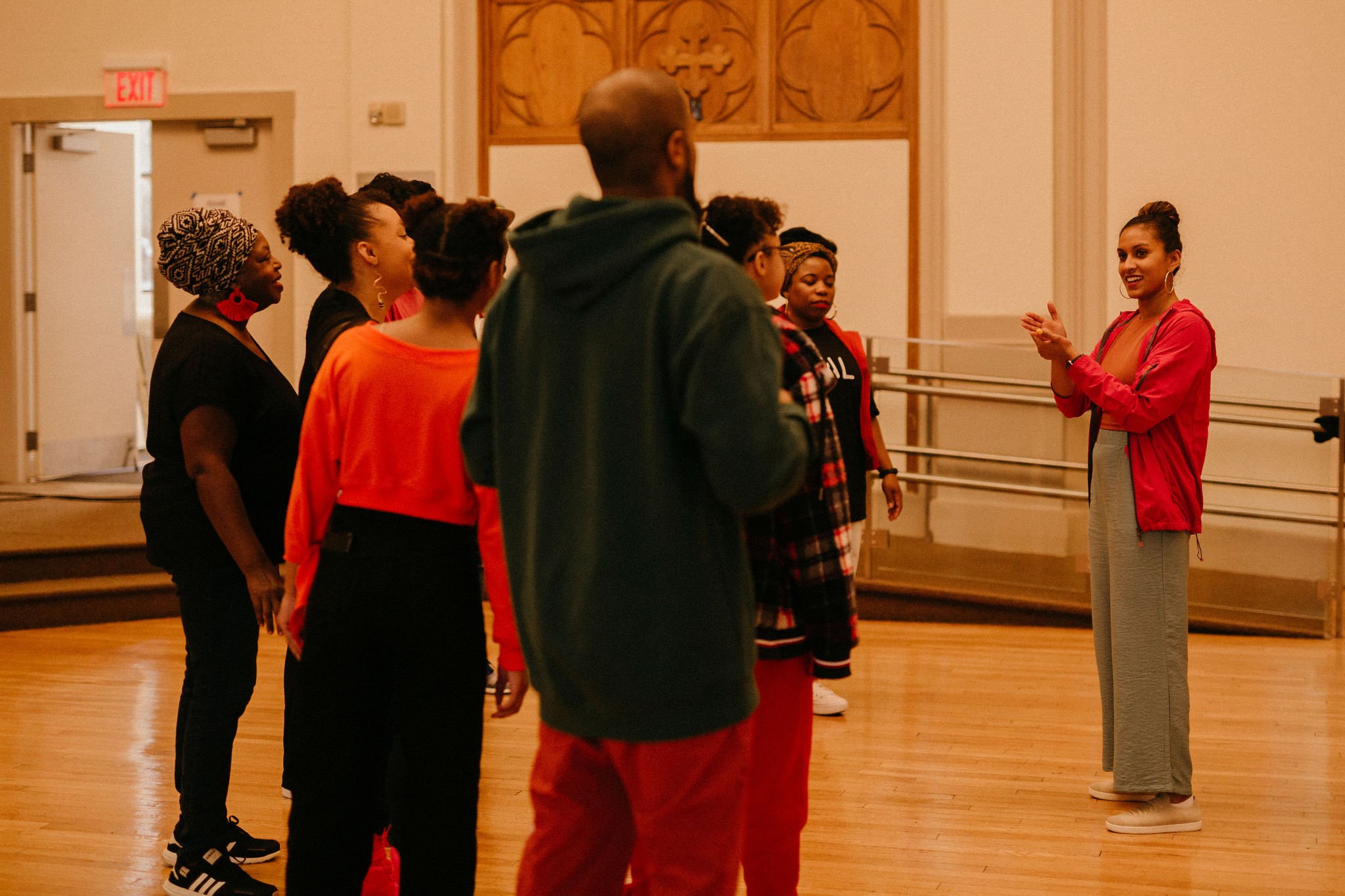
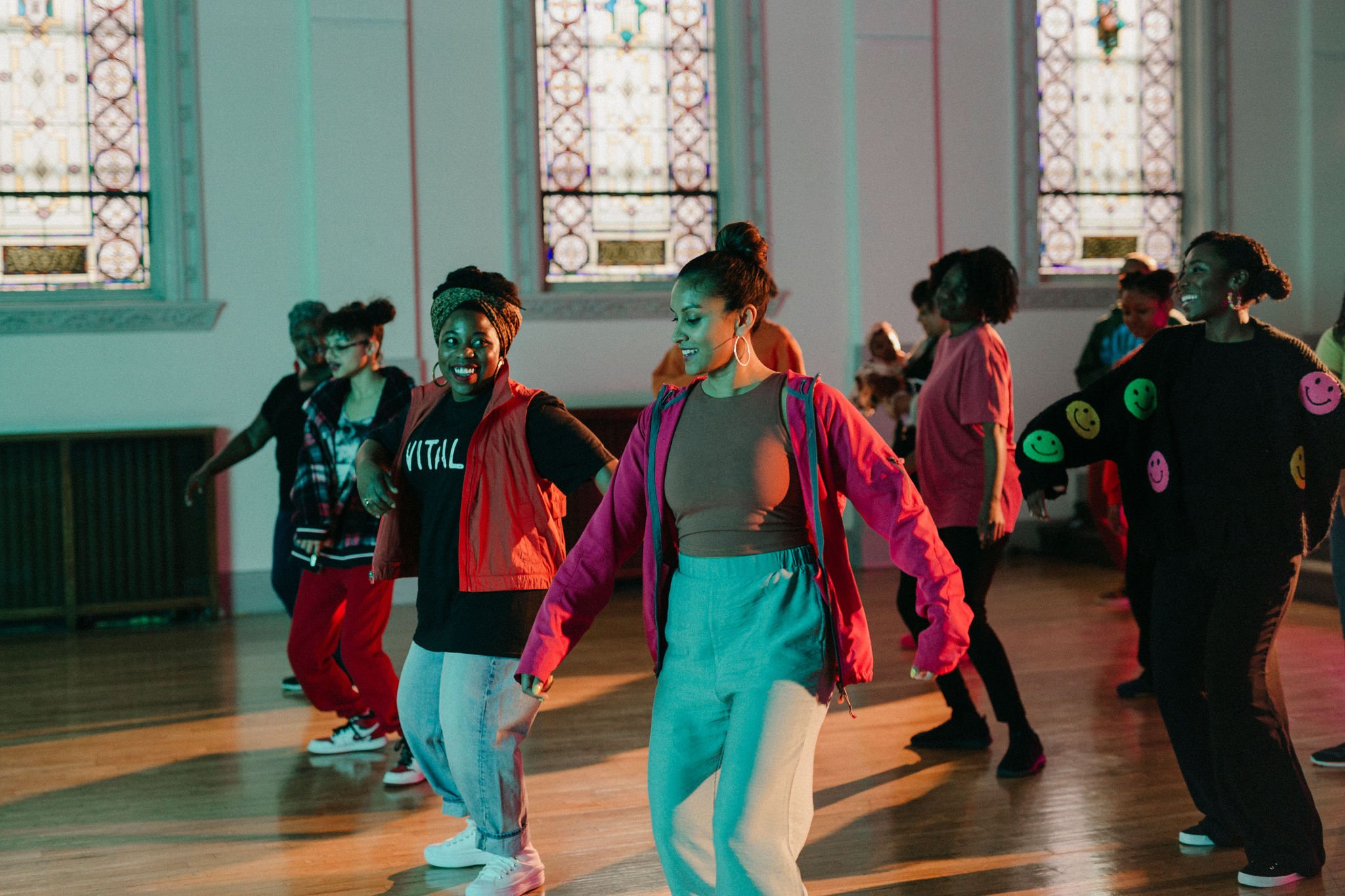



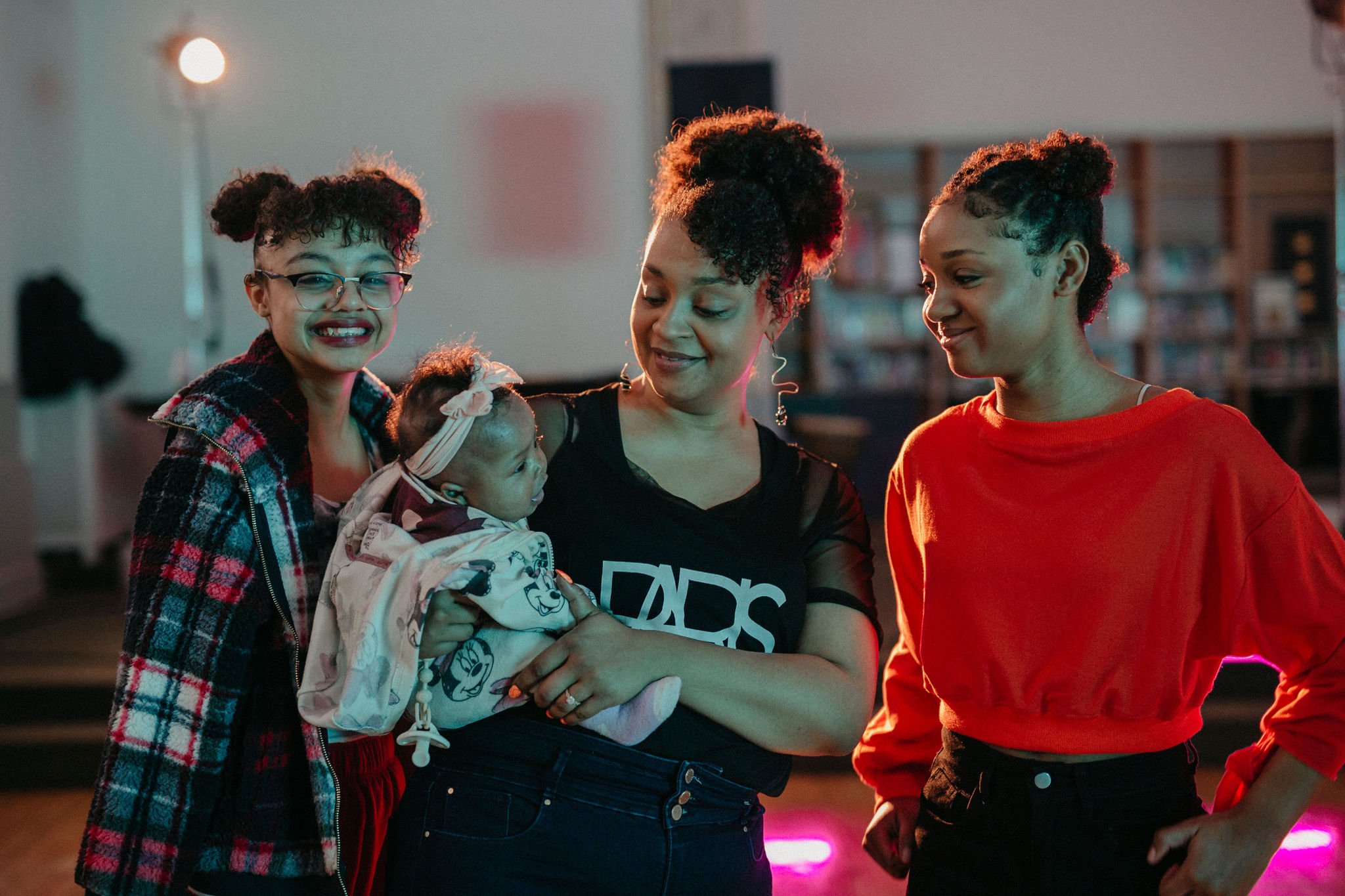

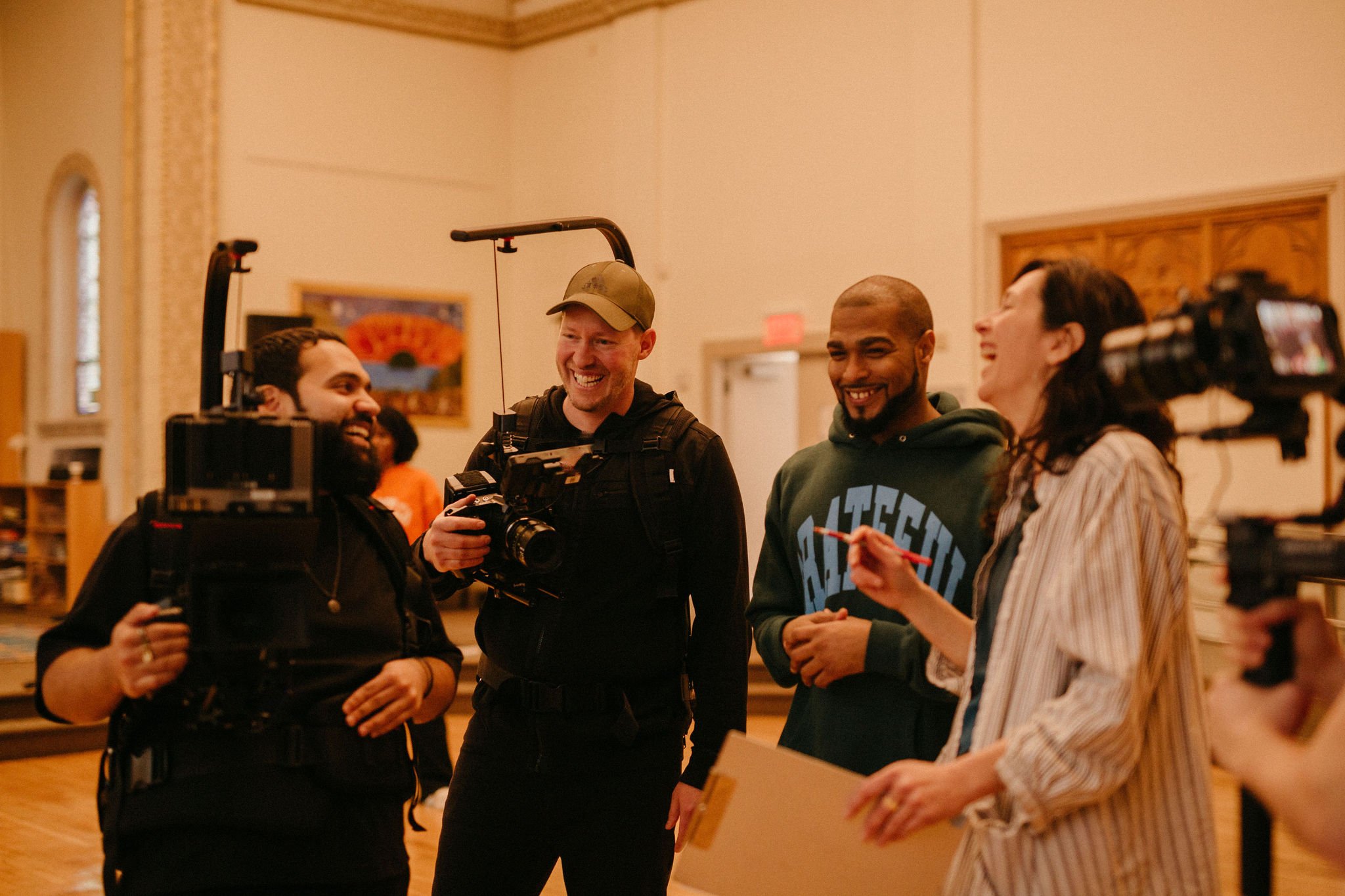

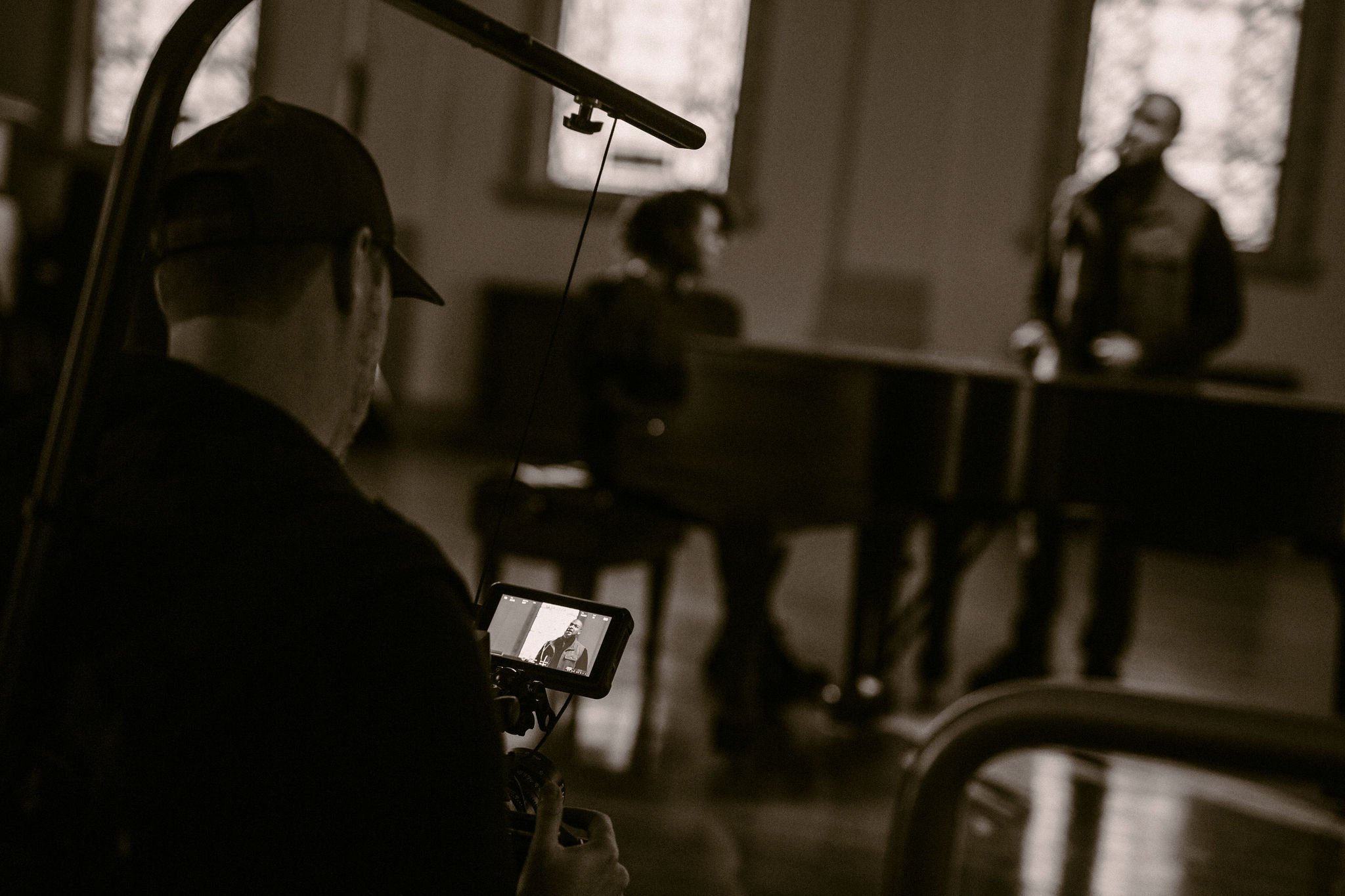

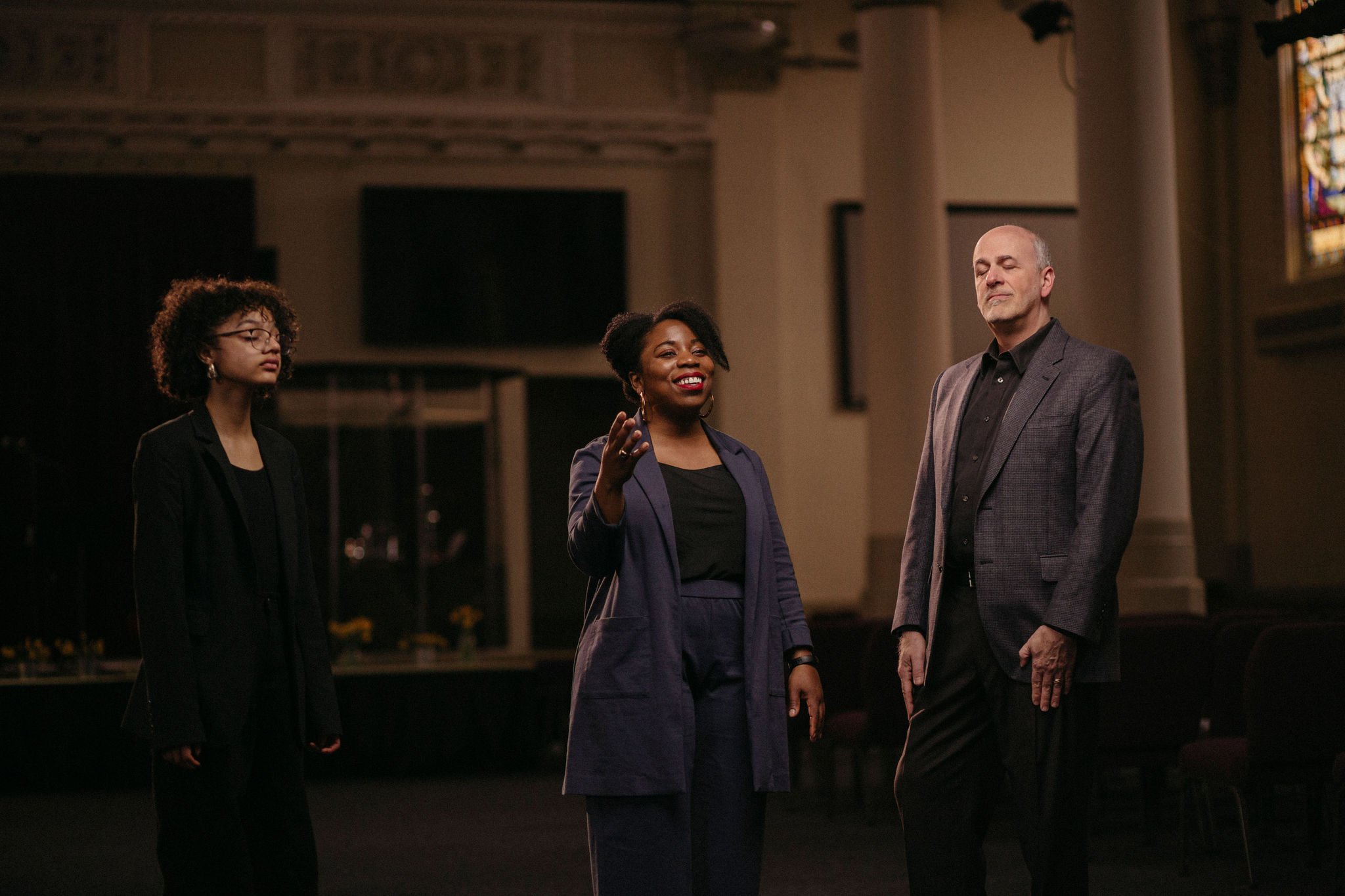

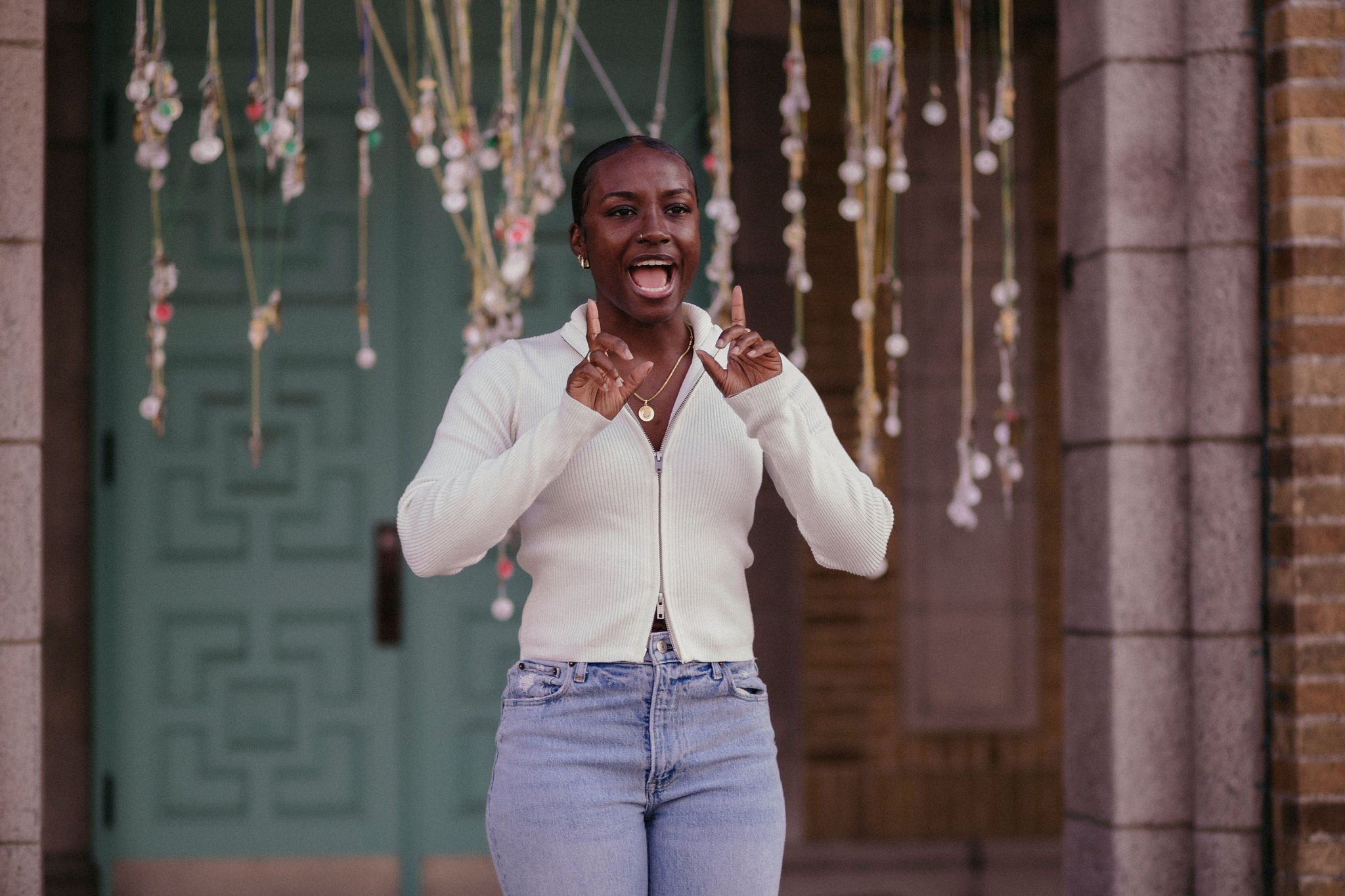


Individual Christians can also think creatively about their tithing and giving. Mike Mack is confident that there are believers in the area who want to “make sure that New England’s a hub for artistry” and that Christian creatives have the tools and access they need to thrive.
“Somebody out there has that heart, but they've probably been told that the only way that you can give is to give it directly into the Church,” he said.
Being open to think creatively when it comes to finances is an opportunity to walk in step with the Spirit and partner with what God is doing on the ground.
“Are you listening to the voice of God? Do you ever wake up in the morning and say, ‘What does my city need? What do I gotta do?’” Mike Mack said. “Do you ever see somebody who's a creative and just think to yourself, ‘Wow, this person could really use assistance. I believe in what they're doing — let me help them out’?”
Creative with space
Boston is not kind to Christian artists and creatives looking for event space. They can have a tough time finding venues that will meet their needs at an affordable rate.
Many churches have significant real estate footprints with resources that could be used to support the work of creatives. Stewarding those resources well has kingdom implications.
Mike Mack said that along with everyone else, church leaders will one day have to give an account for what they received and what they did with it — “especially the stuff that we prayed for.”
“You look around and it’s like, what resources is the church sitting on? What young, up-and-coming rapper is actually the greatest preacher in your church, and you’re just not utilizing him because you don’t like the way that he does it?”
“‘Lord, I need this, please give me this.’ And he's like: ‘You just want it for yourself, you wicked servant. You just want it so you can hoard it. Why should I give it to you?’” Mike Mack said. “Somebody's praying for their building fund right now — got money coming in from everywhere — and have no plans of using it for the people who gave to it.”
Churches can use their spaces to host concerts, exhibits, and other artistic events. They can work collaboratively with creatives to further the kingdom in their local communities with the use of their building space.
Creative with staff
Beyond physical assets and resources, churches can build out their ministry staff with Christian creatives who feel called to serve in the church.
“Put the creatives in your church on staff. Pay for their position,” Pastor Val said. “Put people on staff so that they're actually able to do what they need to do and also support the life that they need to live.”
Bringing creatives on staff may not come intuitively to some church leaders. It may mean interrogating our ideas of what a church staffer looks like.
“You look around and it's like, what resources is the church sitting on?” Mike Mack said. “What young, up-and-coming rapper is actually the greatest preacher in your church, and you're just not utilizing him because you don't like the way that he does it?”
“Church” may not look exactly the same anymore. Christian creatives may have interests that don’t naturally align with the way many churches usually approach the arts. They might not play a musical instrument or want to lead the children’s Christmas play.
“It’s glorifying God just in a different approach. I think once people can realize that, they’ll definitely leave more space for more opportunity for creatives like myself and others.”
“We have to start — and I'm hoping even at my church — making room for the ministries — no matter how unique they are — so that this is a place where they can flourish,” Pastor Val said. “This is a place where we will financially invest in that ministry just like we're going to invest in the summer camp, the food pantry, the marriage retreat.”
Pastor Val said church leaders should recognize that creatives are also theologians. They should invite creatives to look for ways they can visually bring to life what is being taught or preached from the pulpit.
“One of my dreams is that someone would do a dramatic piece of the encounter between Jesus and Satan in the desert, where they have this word battle, and Jesus literally drops the mic at the end. It is done. It's a wrap,” she said. “It's so dramatic. This interaction between Jesus and Satan is intense, it's high stakes. And I'm like, why hasn't this been made into a dramatic piece yet?”
Creatives like Acevdeo are confident churches can make use of them and support them at the same time. He encourages creatives to be plugged into a local church community, rooted and grounded in Christ alone. He believes this spiritual vitality will help shift hearts and minds within congregations to make room for artists with unique gifts who relate in different ways.
“It's glorifying God just in a different approach,” Armani said. “I think once people can realize that, they'll definitely leave more space for more opportunity for creatives like myself and others.”
WATCH: Church & Creatives
Have you ever experienced music or art that has helped you feel closer and more connected to God? For many people, creativity and artistic expression have become an important part of their faith. The Emmanuel Gospel Center connected with Christian creatives and pastors to learn from them how churches can support and equip the artists sitting in the pews. Watch this video that dives into this world of faith and creativity while highlighting opportunities for support and collaboration.
Love Shows Up
Symphony Church in Allston partnered with Jackson/Mann K-8 School in Allston for several years before the school closed. The church served as a critical partner during the pandemic.
Love Shows Up
How one church’s long-term relationship with a school is bearing fruit
By Pastor Ayn DuVoisin
Schools faced extraordinary challenges during the height of the pandemic. Some churches helped bridge the educational gap by tutoring students.
One church that serves as a model for helping the local school system is Symphony Church in Allston. Its partnership with Jackson/Mann K-8 School in Allston was marked by a long-term commitment that was highly relational with effective pastoral leadership supporting the initiative.
The Boston Education Collaborative (BEC) at the Emmanuel Gospel Center has been key to the success of church-school partnerships like this.
“There is tremendous opportunity for churches to extend God’s love and care to the community beyond their own congregations through building meaningful relationships with school communities, which includes students, staff, and families,” said Ruth Wong, BEC director. “Through relationships, mutually transformative experiences happen, and volunteers get to experience God more deeply for themselves.”
The BEC sees a need for more churches like Symphony to embrace changing ministry strategies during the pandemic, adopting church-school partnerships as a means to engage the outsized challenges facing schools.
Symphony Church organizing the literacy room at Jackson/Mann K-8 School. [photo credit: Symphony Church]
Pushing through
Despite the uncertainty in March 2020 when the COVID pandemic hit, Symphony Church continued serving at Jackson/Mann. The church had been sending tutors to the school for seven years and had no plans of stopping.
Jackson/Mann had several community partners during the 2019 to 2020 academic year, but school officials told Symphony they were a key partner. That motivated the church to keep showing up and serving despite the challenges when the pandemic hit.
Around that time, Symphony adopted a new microchurch model which helped to galvanize church members to continue serving in the community despite social distancing rules. Throughout the summer and fall of 2020, Symphony Church leaders preached and challenged members to serve. One sermon series focused on BLESS: Begin with prayer, Listen with care, Eat together, Serve in love, and Share your story. This was part of an effort to cast a vision for a missional culture of sending out the microchurches to engage their neighborhoods even in the middle of a pandemic through initiatives such as prayer walks.
That summer, 20 church volunteers spent two hours every day helping with the school’s virtual program. Symphony also gave summer-school teachers a virtual tablet to use as a whiteboard. In the fall, even more people volunteered to tutor.
Symphony Church cleaning out and organizing school closets. [photo credit: Symphony Church]
Showing up
Partnering with local schools to help students is part of Symphony’s DNA.
In 2010, the church started meeting at the Match Charter Public School’s high school campus in Allston. The school had a system of matching volunteers as tutors to each student. Twenty tutors made a full commitment to serve for two years.
This inspired Barry Kang, lead pastor of Symphony Church, to imagine the potential impact of supporting students with additional tutoring and classroom aides in other schools. They decided to encourage the positive momentum by hosting an appreciation dinner for the tutors.
Pastor Kang said he was convicted by seeing how many issues in people’s lives sprang from early challenges, starting with literacy. Third grade, when education shifts from learning to read to reading to learn, is a critical turning point in a child’s life. These are precious years in supporting systemic change, Pastor Kang learned.
Coupled with his conviction that the “bedrock of society is in the development of the future generation,” Pastor Kang felt that a church-school partnership was compelling. The church’s biggest resource, its energetic worshiping community of college and postgraduate students, had little money but some available time. Through prayer, the church’s leadership saw education as a place to leverage their strengths.
Symphony Church hosted a teacher appreciation breakfast in May 2022. [photo credit: Symphony Church]
In 2014, they wondered whether Boston Public Schools could make use of additional tutoring support of one or two hours a week. At a gathering of pastors, Pastor Kang heard BEC Director Ruth Wong give a presentation on the program’s supportive role in assisting partnerships. Wong connected Symphony with Boston Partners in Education as well as the International Community Church in Brighton, which had been volunteering tutoring services at Jackson/Mann.
“Ruth and EGC helped us get started and helped us get better,” Pastor Kang said.
Pastor Kang said Symphony’s relationship with Jackson/Mann began with its conviction that “love shows up.” He was personally committed to the partnership as well as building direct relationships with the building principal, vice-principal, and teachers. Pastor Kang reinforced the vision for outreach to Jackson/Mann from the pulpit, and the school administration saw the fruit of the relationship.
“There is tremendous opportunity for churches to extend God’s love and care to the community beyond their own congregations through building meaningful relationships with school communities, which includes students, staff, and families. Through relationships, mutually transformative experiences happen, and volunteers get to experience God more deeply for themselves.”
Leaning in
During the 2020 to 2021 school year when schools were still grappling with the impact of COVID, 50 Symphony volunteers spent 2,200 hours tutoring at Jackson/Mann.
“That year, we were that school’s only community partner,” Pastor Kang said. “All their other partners weren’t able to pivot out of their established lanes. But we could because of the BEC’s help.”
Boston school officials announced they would close Jackson/Mann at the end of the school year in 2022, but Symphony decided to serve to the very end as it prayerfully discerns which school to partner with next.
Symphony Church cleaning out and organizing school closets. [photo credit: Symphony Church]
Symphony is energized by the multiplication potential of some of its microchurches serving in their own communities.
While many people wonder when things will go back to the way they were, Pastor Kang feels the pandemic forced the church in a new direction that is yielding kingdom fruit. He said one of the microchurch members, who was skeptical of the new model in the beginning, confided that “‘before the changes, my journey in Christ was like sitting in economy class, but now it feels like sitting in first class — no, actually it’s more like being in the copilot seat, and I have a much greater sense of ownership in this journey.’”
Pastor Kang noted a shift in the church from passivism and consumerism to more active participation as an integral part of the body of Christ and the kingdom.
Because multiplication is part of its language, Symphony hopes its relationships will create new frontiers for support in other schools. And they are partnering strategically with the BEC to explore those new connections.
Symphony’s model of community engagement has been a transforming grace for its members. The church is blessed by working with children and seeing them grow so quickly in their understanding and development. There is a gratification of seeing work they’ve been engaged in, that is clearly useful, something bigger than themselves, that glorifies God.
During the pandemic, when there has been such continual uncertainty, this outreach of serving others has been emotionally and mentally encouraging to the church, Pastor Kang said, with all the members getting to “exercise their love muscles!”
Symphony Church’s notes of appreciation for Jackson Mann staff. [photo credit: Symphony Church]
Ayn DuVoisin
About the Author
Pastor Ayn DuVoisin has been a volunteer associate with EGC’s Boston Education Collaborative initiative since 2019. She previously served as Pastor of Children’s Ministries at North River Church in Pembroke, Massachusetts, from 2000 to 2019. Over the past decade, she has been active in building the Church & School Partnership for Boston Public Schools. She is also a former board member of Greater Things for Greater Boston. She and her husband, Jean DuVoisin, have lived in Scituate, Massachusetts, for over 40 years. She is blessed by her three adult children and well-loved Golden Retriever, Sunny.
TAKE ACTION
Can you see your church engaging in a partnership like this? Here are some resources to explore as your church prayerfully discerns a potential partnership with a school in Boston, Cambridge, Chelsea, or Brockton.
Mutual learning is helping Black churches thrive
Two church leaders participating in the BBCVP’s Thriving Initiative shared their strategies for serving the community and keeping their congregants safe from COVID during worship services.
Pastor Jean Louis of Free Pentecostal Church of God and Pastor Bisi Asere of Apostolic Church LAWNA meet for the first time in person after participating in online meetings for half a year. Rosa Cabán with R9 Foto for The Emmanuel Gospel Center
Mutual learning is helping Black churches thrive
Black Church leaders reflect on God’s work in Boston.
By Hanno van der Bijl, Managing Editor, Applied Research & Consulting
“I see God bringing people together, having conversations that are important that we haven’t had. We’re being more open with one another and more transparent about ways that we can partner and collaborate.”
That sentiment expressed by Gina Benjamin was echoed by others reflecting on God’s work in Boston at a recent meeting for the Boston Black Church Vitality Project.
Benjamin, social services director of the community center at Mount of Olives Evangelical Baptist Church in Hyde Park, is part of the project’s Thriving Initiative, a cohort of 10 ethnically and denominationally diverse Black churches that are located in four predominantly Black neighborhoods in the city.
Members of these churches participating in the cohort said God is using the pandemic and other challenges not only to unify and strengthen the Church, but also to create opportunities for compassion and evangelism.
The cohort meets together for two hours every other month for fellowship, peer learning, skills-based workshops and group training, and discussions about opportunities for collaborative ministry. During a meeting earlier this year, two church leaders shared their strategies for serving the community and keeping their congregants safe from COVID during worship services.
Caring for the community
At the onset of the pandemic, Fania Alvarez, who heads up The Greater Boston Nazarene Compassion Center (GBNCC), said the leadership team decided they could not stop. But they knew they would have to do things differently.
The GBNCC runs a food pantry that distributes more than 7,000 pounds of food to families in need every week. When COVID hit, people started lining up hours earlier than usual with little social distancing.
The GBNCC decided to open up a couple of hours earlier to accommodate the crowd.
“It was really challenging, but God was in the midst of it,” Alvarez said.
Launched by the Haitian Church of the Nazarene — Friends of the Humble almost 30 years ago, the GBNCC serves low-income families and individuals who have limited access to services and resources in the community.
In addition to the food pantry, the ministry runs a safety-net program, assisting people with government programs such as SNAP and WIC. The GBNCC also provides English language literacy and workforce development classes.
Once the vaccines became available, the ministry served as a vaccination clinic. The shots were a godsend, but some people were hesitant, Alvarez said.
“We had to find strategies to work with them. We had to go out and convince and educate them on the vaccine,” she said. “It wasn’t an easy time, but we made it. We can say we made it.”
Churches that want to develop a social ministry of their own need a dedicated leader who is able to manage programs and secure resources from donors and charitable organizations.
“Pray to the Lord so you can find somebody that has the heart for it,” Alvarez said.





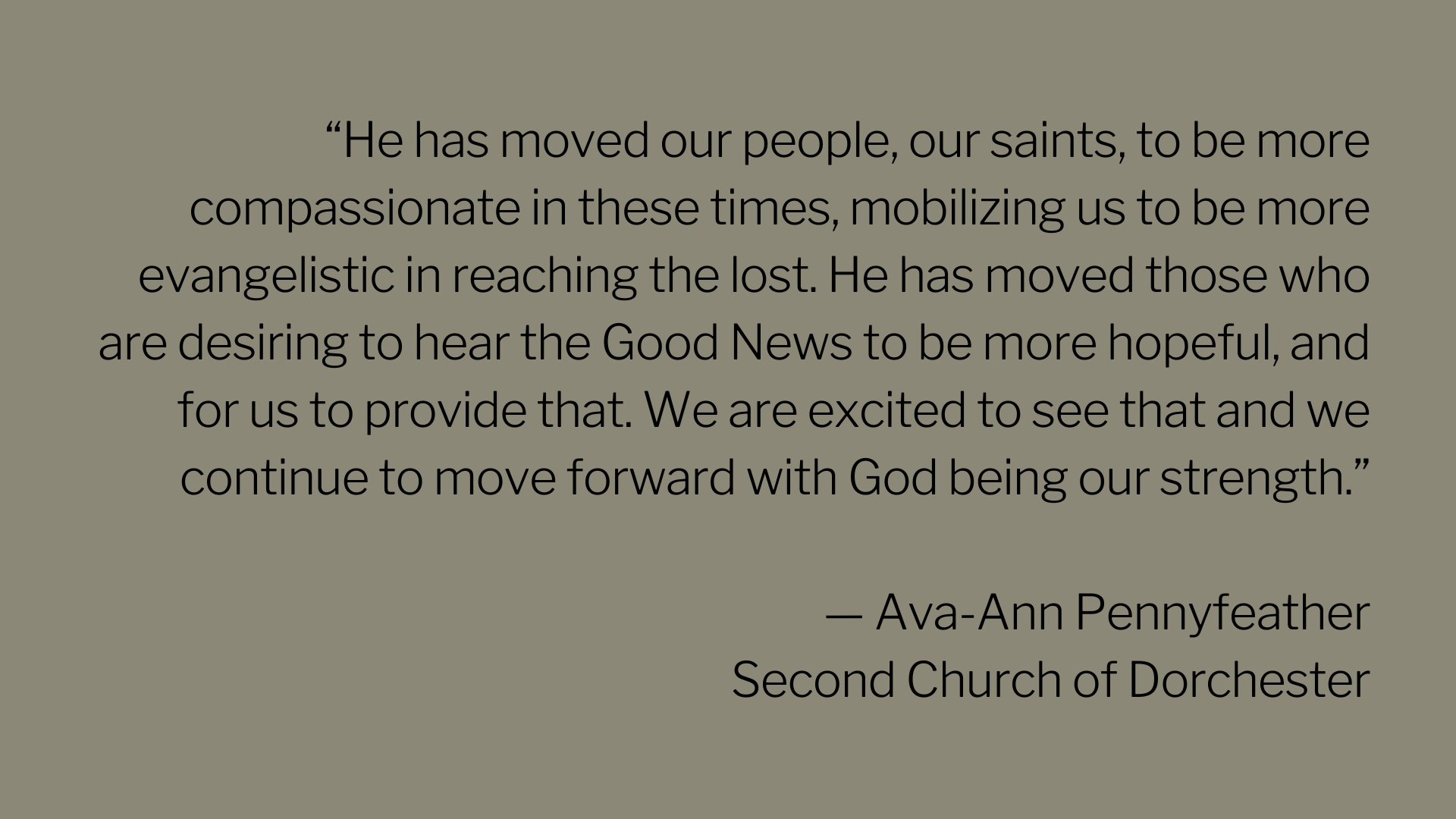






In a meeting earlier this year cohort participants were asked: “What do you see God doing in the city?” Here’s what they said.
Managing churcH through pandemic
In 2017, the Rev. Kenneth Sims at New Hope Baptist Church started bringing bank machines into the church services.
“Some of our real spiritual-deep folk thought that I lost my mind bringing a machine to receive tithes and offerings,” Rev. Sims said. “But that was the biggest aspect of our giving.”
He also felt compelled Sunday after Sunday to tell his congregants to get a smartphone.
“It didn’t really seem spiritual at the time,” he said. “The church eventually caught on. Every Sunday — especially the seniors — would flash their smartphones and say, ‘Reverend Sims, I have a smartphone. I don’t know how to use it but I have one.’”
Then the pandemic hit. No collection plates were passed around to receive contributions. All in-person services stopped.
“I just thank God … because we weren’t scrambling,” Rev. Sims said. “That taught me one thing: to really listen to the voice of God even when it’s in opposition to what many people are thinking. Listen to God because he knows the future.”
Rev. Sims met with nurses in the church to chart a way forward. An executive committee made up of four teams was formed to oversee the church’s response to COVID.
“We knew we were coming back to church,” he said. “We didn’t know when, so we started planning so that we’d be prepared.”
A security team oversees registration, traffic, and parking. A health-and-hygiene team handles pre-screening, including handwashing, mask-wearing, and seating. A social distancing and redesign team handles seat spacing and equipment. A cleaning and disinfecting team cleans the bathrooms after each use.
Rev. Sims said members of the congregation took ownership of the various teams and made a difference.
“It got the people involved, and it wasn’t all about me. I’ve been trying for the last few years to get away from that — to stay in my role, of course, overseeing — but not having to do it directly,” he said. “People have been empowered, and they have taken off. I don’t get in their way.”
After a five-month hiatus, the church resumed in-person worship services in August 2020. Rev. Sims said the church continues to practice the safety measures it put in place.
“Our main concern was that our people remained safe,” he said.
The executive team spent many hours meeting, praying, discussing, and researching their options to balance out the physical and spiritual needs of the congregation.
“I did not believe that New Hope could survive spiritually being away from the church gathering from March 2020 to now,” Rev. Sims said. “I could not see that.”
While some members have come down with the virus, Rev. Sims said it was not due to their worship services as far as they know.
“We have not had any kind of super-spreader situations going on at New Hope since we’ve returned,” he said. “That’s been a tremendous blessing for us.”
With even more tools at their disposal than they had at the beginning of the pandemic, Rev. Sims is confident the church can keep moving forward.
“I’m just of the impression that, yes, let’s do all that we can to be safe: let’s do everything that we can, and then we’re leaving the rest up to the Lord,” he said. “What I can’t control, what I can’t power over, I leave that to the Lord.”
TAKE ACTION
The Thriving Initiative is a three-year process rooted in learning, discerning, and doing ministry. Participating churches are examining their mission and values in light of shifting social and cultural landscapes in Boston.
By deploying tools such as interview guides, congregant surveys, and ministry inventories that BBCVP designed to support churches in understanding the needs and perspectives of congregant and community stakeholders, the cohort leads in a learning endeavor that seeks to model the work of reflection that is essential in order for the Church to remain relevant and vital.
Through online articles, reports on what is being learned, videos, and data visualization, the Boston Black Church Vitality Project project will share these stories of innovation, successful strategies, and effective use of leverage points that exemplify models of prophetic leadership, community care, spiritual formation, and the pursuit of justice.
The Thriving Initiative is generously funded by the Lilly Endowment with additional support from Boston Baptist Social Union and others. For more information, visit blackchurchvitality.com.
Do you know where you’re standing?
Why EGC’s new “Fact Friday” series explores the church’s history and legacy in Boston one short video at a time.
Updated Feb. 21, 2024
Do you know where you’re standing?
Why EGC’s new “Fact Friday” series explores the church’s history and legacy in Boston one short video at a time.
by Hanno van der Bijl, Managing Editor, Applied Research & Consulting
Did you know that the African Meeting House on Beacon Hill was co-founded by Cato Gardner, a formerly enslaved man born in Africa?
Or that Twelfth Baptist Church was the spiritual home of Wilhelmina Crosson, a pioneering Black school teacher in Boston, who also was instrumental in launching the precursor to Black History Month?
How about this gem: Boston’s oldest church congregation is not downtown — it’s in Dorchester. On June 6, 1630, the First Parish Church in Dorchester was the first congregation to meet in what is present-day Boston. The First Church of Boston did not organize until about two months later.
These are just some insights from the Emmanuel Gospel Center’s new “Fact Friday” video series on Instagram.
“The city’s churches have a rich history,” said Caleb McCoy, marketing manager at EGC. “I think those legacies impact how we view the church today, so it’s important to share that information with as many as possible.”
The Fact Friday team includes Jaronzie Harris, program manager for the Boston Black Church Vitality Project, and Rudy Mitchell, senior researcher at EGC. Since February, this dynamic duo has been creating videos exploring the church’s long history in Boston, leaving EGC’s Instagram followers hungry for more.
“People who live in Boston may walk by church buildings but they may not know, one, what has gone on there in the past and, two, what’s going on here in the present,” Mitchell said.
Bridging that gap between the past and present is one of the project’s key motivators.
“It’s been fun for me to share but also to learn,” Harris said. “Doing this project is engaging me in research. I have to go and find out about these things, which I enjoy doing.”
Harris said learning about St. Cyprian’s Episcopal Church’s rich history, for example, led her to discover some surprises about the church’s ministry today as she listened to a recent sermon.
“It was interesting to hear this minister preaching Black theology from a different tradition about a festival I didn’t know about,” Harris said. “I haven’t heard that type of militant preaching in Boston before.”
Caleb McCoy (right) films a recent Fact Friday video with Rudy Mitchell (left) and Jaronzie Harris (center).
The city’s Black churches have a rich legacy of gospel ministry and social action.
“Almost every time you look at one of the Black churches in the 1800s, you see they were deeply involved in the abolitionist movement and advocating for the rights of enslaved peoples,” Mitchell said. “A lot of rich history inspired continued activism in more recent times.”
The team believes the Black church’s spiritual legacy continues to buoy the community as it faces its own headwinds today.
“We are in a time that’s very racially charged right now,” McCoy said, “but it’s important to know that Black Christianity and the Black church has a legacy that’s gone before us and has a rich history in the fight for equality and justice in our own city.”
The team also enjoys parsing out curiosities such as why a church on Warren Street in Roxbury is called “The Historic Charles Street AME Church.”
In addition to digging around the past, the project has a forward-looking orientation. Boston, for example, was home to the first YMCA in the United States. What would such an innovative approach to ministry look like today?
“The Bible often tells us to remember how God was at work in the past, and we certainly can learn from history,” Mitchell said. “Even though the form and methods may change, we can be inspired to be used by God in our own time for similar purposes.”
For decades, EGC has been channeling its research and learning into specific programming and events. The Boston Church Directory, for example, demonstrates how its use of applied research is a dynamic process, bringing people in along the way.
But learning is ongoing, and it’s important to share that process, Harris said.
“I’m learning these things for Fact Friday, sure, but I’m also learning these things to better support my churches, to better understand the Boston landscape,” she said.
EGC also tries to provide a larger perspective on Christianity in Boston not just across different denominations and cultural groups but also over time. At times that research has uncovered illuminating insights.
“Historically, we saw that, between 1970 and 2010, more new churches started in Boston than in any other comparable period in Boston’s history,” Mitchell said.
Many of those churches have important stories to tell, known only by a few. Through various research projects, EGC tries to get those stories out in the open.
“We have all this historical information,” Harris said. “So how can we tell a story that is digestible for a broader audience?”
Here are some of the churches, institutions, sites, and individuals the team has covered so far:
TAKE ACTION
Follow EGC on Instagram @egcboston and watch for new reels and videos on Fridays.
What would you like to know about the history of the church in Boston? Let us know by filling out the feedback form below.
Additional Resources
Curious to learn more about the story of the church in Boston? Give these resources below a try.
Daman, Steve. “Understanding Boston’s Quiet Revival.” Emmanuel Research Review. December 2013/January 2014. Accessed January 22, 2015.
Hartley, Benjamin L. Evangelicals at a Crossroads: Revivalism and Social Reform in Boston, 1860-1910. Lebanon, N.H.: University Press of New England, 2011.
Hayden, Robert C. Faith, Culture and Leadership: A History of the Black Church in Boston. Boston: Boston Branch NAACP, 1983.
Horton, James Oliver, and Lois E. Horton. Black Bostonians: Family Life and Community Struggle in the Antebellum North, rev. ed. New York: Holmes & Meier Publishers, 2000. See chapter 4: “Community and the Church.”
Johnson, Marilynn S. "The Quiet Revival: New Immigrants and the Transformation of Christianity in Greater Boston." Religion and American Culture: A Journal of Interpretation V 24, No. 2 (Summer 2014): 231-248.
Mitchell, Rudy. The History of Revivalism in Boston. Boston: Emmanuel Gospel Center, 2007.
Mitchell, Rudy, Brian Corcoran, and Steve Daman, editors. New England’s Book of Acts. Boston: Emmanuel Gospel Center, 2007. The New England Book of Acts has studies of the recent history of ethnic and immigrant groups and their churches and a summary of the history of the African-American church in Boston.
Investing in Haitian churches and communities
The Emmanuel Gospel Center is partnering with the Fellowship of Haitian Evangelical Pastors of New England on “Pwojè Rebati” to raise funds for restoration efforts in Southern Haiti.
Investing in Haitian churches and communities
How Haitian leaders are working together to counter a broken legacy of relief aid to the battered country.
By Hanno van der Bijl, Managing Editor, Applied Research & Consulting
Four earthquakes. Four hurricanes. A cholera outbreak. Political and social upheaval. The COVID-19 pandemic.
These are just some of the crises to hit Haiti since 2010.
Billions of dollars in foreign aid remain unaccounted for, with little of it going into the hands of Haitians.
This is part of the reason the Emmanuel Gospel Center is partnering with the Fellowship of Haitian Evangelical Pastors of New England (FHEPNE) on “Pwojè Rebati” — “Project Rebuild” in Haitian Creole — to raise funds for restoration efforts in Southern Haiti. The fellowship’s partner on the ground, Ligue des pasteurs du Sud D’Haiti (LIPASH), is a group of pastors in Les Cayes, representing 3,000 churches in about 20 municipalities.
Haitian leaders identified several important needs: rebuilding churches, providing housing for families, and distributing food.
“We would like to impact the lives of people in the area spiritually, socially, and mentally, because at the end of the day, people will gather together, they will feel gratified to have a place of worship where they can express their spiritual gratitude to God,” said Pastor Varnel Antoine of FHEPNE. “From a Haitian cultural perspective, they are very religious, and they believe in worshiping God regardless of their situation. You cannot take that away from them.”
People are walking or driving for miles to go to church. More than just a place to meet on Sunday mornings, the church serves as one of the primary forms of social infrastructure for Haitians. It provides a place to worship, safety and shelter, social support and community, a second family.
“Churches are such a pillar of community in Haitian culture,” said Marjory Neret, a member of the Pwojè Rebati fundraising team. “The churches are providing far more than just the place of worship — they’re really connecting people to a lifeline. So this is actually a far more significant project than it might seem on the surface.”
In addition to rebuilding church buildings, Pastor Antoine said the team hopes to get families off the street and into two-bedroom homes to live in.
“We hope that this project, Pwojè Rebati, will be a catalyst that will motivate other organizations to help in their rebuilding efforts so that people can go back and focus on God in adoration and exaltation for who he is,” he said. “That’s what we can tackle right now.”
‘You have a big faith’
Raising money is not easy. It takes time and effort. Often the Haitian leaders who are in the best position to effectively allocate and use the funds are tied up with important and urgent demands on their time. A chasm lies between those with financial resources in countries like the United States and those experienced Haitian leaders in the middle of the action. EGC works to bridge that divide.
After an earthquake and tropical depression hit Haiti last August, FHEPNE and EGC began raising funds.
They had collected about $112,000 when EGC’s executive director, Jeff Bass, was approached by an old friend, a Boston pastor he has known for several decades. The pastor serves on the board of an organization that wanted to donate $250,000 toward Haiti relief. “That’s awesome,” Bass said. And they wanted it to be a matching gift. “That’s challenging,” Bass said with a nervous chuckle.
After some further conversation, the organization agreed to count the $112,000 that had already been raised toward the matching amount, making the challenge considerably more manageable.
Bass presented the proposal to FHEPNE. Pastor Antoine said the group had never raised that much money before.
“It’s going to be a drop in the bucket for all that has to be done,’” he told his colleagues.
Many churches in the Les Cayes area — not to mention other regions of Haiti — had been impacted. So he decided to set a goal of not just making the $250,000 matching challenge but to prayerfully push for $1 million.
Pastor Antoine’s colleagues hesitated. “‘Hmm, I don’t know, you have a big faith,’” he said they told him. But given the high construction costs, they decided to take the plunge.
FHEPNE launched the fundraiser, and EGC signed on as a fiscal sponsor as well as fundraising consultant free of charge.
EGC hired Neret, a Haitian-American leader who graduated from Gordon-Conwell Theological Seminary. With her extensive connections in the Haitian community, Neret brings a critically important perspective to the project.
Neret has broadened the team’s outlook and experience and helped strengthen how it describes the project in addition to reaching out to hundreds of people as part of the fundraising effort.
“A lot of people, especially those who are Haitian, are pretty receptive,” she said. “They’ve been more than willing to help — most of them right away.”
A big break came when the Imago Dei Fund in Boston donated $85,000. As of early May, the team has raised $213,000. It is now pushing to get to the full $250,000 matching amount by the end of June, and hopefully further toward Pastor Antoine’s bigger vision.
“It’s a blessing. It’s the work of the Lord,” Pastor Antoine said. “I believe that he’s got his hand on it, so we need to do our due diligence, waiting for him to use us as instruments in his hand.”
Half of the challenge is raising the funds. The other half is making sure it’s spent well in Haiti.
Half of the challenge is raising the funds. The other half is making sure it’s spent well in Haiti.
The Pwojè Rebati team is discerning how it can have a distributed impact in several communities.
Part of the process is securing accurate quotes from architects and contractors for building temporary church structures. That has not come without its own heartache. The chauffeur of the architectural firm working on the project was taken hostage, and an architect’s son took his own life in despair over the situation in the country.
Pastor Antoine said the team will be accountable to small and large donors alike. The Haitian pastors in Boston and Southern Haiti are working together to create mechanisms of accountability and for wiring the money safely, which will not all go out at once.
The first phase of the project includes a church building, housing, and food distribution in one community.
“We will start with one project, one region, and see the outcome of that first project,” Pastor Antoine said. “From that point on, we will decide on the next step.”
0.6%
While billions of dollars in relief aid has been promised to help communities like Les Cayes in Haiti, success has been elusive.
The damage inflicted by the 2010 earthquake was assessed at $7.9 billion. The government of Haiti requested $11.5 billion in aid for a 10-year plan that would have helped the country not only recover but also redevelop. International donors pledged a total of $10.76 billion toward that end.
From 2010 to 2012, several countries gave $6.43 billion in humanitarian and recovery aid for Haiti. Non-governmental organizations raised an additional $3.06 billion from private donors.
Of the $6.43 billion, less than 10% went to the government of Haiti and less than 0.6% of it went to Haitian organizations and businesses in the form of grants, according to data collected by Dr. Paul Farmer’s U.N. office.
Dr. Farmer, who passed away this year, had served as a special adviser on community-based health and aid delivery to the Secretary-General of the United Nations from 2009 to 2019. His U.N. office tried to track down how much aid money was pledged, committed and disbursed to Haiti. Billions of dollars remain unaccounted for.
Without greater transparency, Dr. Farmer’s office was left to theorize that not enough aid was requested and pledged and that, of what was given, the majority of aid did not remain in Haiti. Instead, it went to contractors and non-governmental organizations based in other countries.
Haiti is not the only nation to receive such a small share of incoming aid in a time of crisis. Between 2007 and 2011, 5% of humanitarian aid went toward the public sectors of recipient countries, and of the $4.27 billion that was raised through U.N. humanitarian flash appeals in 2012, only 0.6% went directly to local organizations in various countries. Liberia suffered a similar fate in 2012 when it was struggling with Ebola.
Giving only a tiny fraction of official development assistance, or ODA, directly to a country’s political and business leaders undermines its ability to recover from disasters and thrive.
“An estimated 75% of all ODA to the poorest countries never reaches the recipient country,” Dr. Farmer’s U.N. office’s report stated. “In addition, UN flash appeals almost always do not allow for the recipient government to receive funding. Bypassing of the public sector has a significant impact on development outcomes as there is a correlation between investment in the public sector and a decrease in poverty and disease.”
Countries such as Rwanda, which receive more than half of their ODA through their own national systems, make some of the best development progress in overall wellbeing.
The world’s first independent Black republic
This is not the first time Haiti’s future has been compromised by more powerful institutions and countries.
Originally known as Saint-Domingue, Haiti was France’s most lucrative colony in the late 18th century. The flag of liberty that was raised in the American colonies in 1776 and France in 1789 was also planted in Haiti when the enslaved people revolted against their colonial slave masters in 1791.
At first, President Thomas Jefferson saw Black Haitians’ struggle for self-determination in line with his own idealism and the revolutionary fervor of the day.
“St. Domingo has expelled all its whites, has given freedom to all its blacks, has established a regular government of the blacks and colored people, and seems now to have taken its ultimate form, and that to which all of the West India islands must come,” he wrote to his daughter Martha in 1793.
Haiti was the world’s first independent Black republic. The first nation to permanently ban slavery. However, a successful country led by free, former enslaved Africans was too much of a threat to slave owners in the United States. Jefferson tried to isolate the island nation and blunt its economic prospects. The U.S. wouldn’t recognize Haiti as a country until 1862.
But as scholar Annette Gordon-Reed wrote, the U.S. owes Haiti a “debt we can’t repay.” Were it not for Haiti’s successful repulse of Napoléon’s invasion, the French emperor may not have sold the Louisiana territory to the United States for $15 million, or about $18 per square mile.
In 1814, when French King Louis XVIII tried to force Haiti to surrender, Alexandre Pétion, the ruler in southern Haiti, offered to pay France $15 million in exchange for the country’s independence, using the Louisiana Purchase as a benchmark. The king refused.
In what scholar Marlene Daut calls the “greatest heist in history,” French King Charles X sent a flotilla of warships with more than 500 cannons to force Haiti to pay 150 million francs — about 10 times the amount the U.S. had paid for the Louisiana territory. In 1825, Haitian President Jean-Pierre Boyer committed the country to pay the reparations in five equal installments, taking out loans from French banks. The agreement was revised in 1838 after Haiti defaulted on the enormous debt.
The money went to more than 7,900 former slave owners and their decendants in France, but by the time Haiti fully paid off the debt in 1947, none of the originally enslaved people or slave owners were alive. The total amount was more than twice the value of France’s claims, negatively impacting Haiti’s national education, health care and public infrastructure for centuries. In 2020, French economist Thomas Piketty said France should repay Haiti at least $28 billion in restitution.
For its recent project, “The Ransom,” The New York Times spent months studying old documents and consulting with more than a dozen leading economists and financial historians to calculate how much Haiti paid in reparations as well as the larger economic impact on the country over the centuries.
It found that Haiti paid about $560 million in today’s dollars. Had that money remained in the country, it would have added at least $21 billion to the Haitian economy. But experts told the Times the impact of the reparations and the initial loan go far beyond that. Taking into consideration that the country might have grown at a similar rate as its neighbors, Haiti lost about $115 billion.
“Put another way, if Haiti had not been forced to pay its former slaves masters, one team of international scholars recently estimated, the country per capita income in 2018 could have been almost six times as large — about the same as in its next-door neighbor, the Dominican Republic,” according to the Times.
“Overall, Haiti is just being punished for being the first republic of slaves to overthrow slave masters.”
In addition to not recognizing Haitian independence for decades and trying at times to annex its territory, the United States has repeatedly exploited the country.
From 1915 to 1934, the U.S. installed its own regime, rewrote the constitution, and took control of the country’s finances. During a demonstration in Les Cayes in 1929, U.S. Marines fired on 1,500 people, killing 12 and wounding 23. About 15,000 Haitians were killed during the 19-year occupation. U.S. soldiers pulled out in 1934, but the U.S. maintained control of Haiti’s finances until 1947, diverting about 40% of Haiti’s national income to service debt repayments to France and the U.S.
Since then the U.S. continues to back authoritarian Haitian leaders who appear to be allied with its interests. To reverse this trend, Haitian scholars and others advocate for the U.S. to support a group of Haitian civil organizations called the Commission to Search for a Haitian Solution to the Crisis.
“Overall, Haiti is just being punished for being the first republic of slaves to overthrow slave masters,” Neret told EGC. “They’ve made sure to put lots of political things in place to make them pay for that and to be an example to all of the other places.”
Getting behind leaders God is using
Bass, EGC’s executive director, recalls attending a conference in New York City that included a panel discussion on addressing the problems facing Haiti.
“There wasn’t a Haitian on it,” he said. “I walked out — this can’t work.”
Given the broken legacy of foreign relief aid and exploitation of Haiti, the church must adopt a new model if it wants to help.
EGC has a track record of partnering with the Haitian Christian community since the 1980s. After the earthquake in 2010, a local foundation provided EGC with about $100,000 in relief aid for Haiti. EGC then worked with the Rev. Dr. Soliny Védrine, senior pastor at Boston Missionary Baptist Church and a former EGC staff member, to partner with a dozen Haitian pastors in Greater Boston to distribute the $100,000 as they saw best.
“They created these feedback mechanisms where people reported how they spent the money,” Bass said. “It was very effective.”
This approach stands in contrast to problematic models of aid and development and outside input that unwittingly reinforce the same corruption, paternalism and racism that have caused many of Haiti’s biggest problems. Most aid and development organizations assume they can import solutions from the outside without long-standing relationships with the humanitarian and development ecosystem in place. The people most impacted are often shut out of the decision-making process.
The reality is that, when disaster strikes, there are already local leaders, organizations and systems in place working to address the needs. Excluding these leaders from the table is counterproductive and colonialistic.
“How can you plan a decent reconstruction if you don’t take into consideration the existing building blocks of local setups?” wrote Marie-Rose Romain Murphy, co-founder of the Haiti Community Foundation, in a CDA Collaborative Learning Projects article. “How can you develop effective and sustainable programs if citizens of the country are not included in those plans’ design?”
These dynamics motivate EGC to prioritize local leaders who have the vantage point and perspective needed to assess and innovate. Not placing relief aid directly in their hands and giving them decision-making power perpetuates Haiti’s struggles.
“EGC’s philosophy, and becoming more so,” Bass said, “is to get behind local, on-the-ground leaders as much as possible.”
TAKE ACTION
Give
You are invited into this effort. We are asking you to prayerfully consider assisting us with this challenge. This is a great opportunity for the church to step up and support our brothers and sisters in Haiti and locally in Greater Boston.
You can make a tax-deductible gift for Pwojè Rebati by clicking here and typing “Haiti Relief” in the “For” box. Thanks to the generous donor who has offered a $250,000 matching gift challenge, your gift will be matched 1:1 until the full amount has been met. EGC is passing through 100% of the donations to support the work in Southern Haiti.
Learn More
To learn more, check out the following organizations and resources. The list is not intended to be exhaustive.
Organizations
Fellowship of Haitian Evangelical Pastors of New England
The fellowship provides Haitian evangelical pastors in New England a “platform whereby its members will be provided ministry support, fellowship, spiritual development, cultural awareness, social services and needed resources, for the advancement and the well-being of each individual.”
The foundation seeks to “foster thriving Haitian communities with justice and opportunities for all, and to nurture and support Haitian leadership focused on national self-determination and collaborative development.”
Resources
“What if?” Questions with answers for a paradigm shift in the Aid System
In this CDA Collaborative Learning Projects article, Marie-Rose Romain Murphy, co-founder of the Haiti Community Foundation, casts a vision for how the aid sector can reflect on past mistakes and change course to empower local leaders so that “Aid … would (finally!) be about ending Aid.”
You call it philanthropy, we call it ‘Devlopman Tèt Ansanm’
In this article published by Alliance Magazine in London, Marie-Rose Romain Murphy lays out four critical changes the philanthropy world must adopt moving forward.
The Haiti Community Foundation: the impossible made possible
In this address given at a gathering organized by the South Africa-based Global Fund for Community Foundations, Marie-Rose Romain Murphy tells the story of the Haiti Community Foundation and its impact on Haiti in the aftermath of the 2010 earthquake.
This article by Chris Herlinger in the National Catholic Reporter includes insights and assessments that go beyond just the facts that much aid did not reach people in need and make a lasting difference.
Owning Our Future: Haitian Perspectives in Film
These 10 short films were produced by Haitians in partnership with Haitian community media and development organizations, Community Supported Film, and international non-governmental organizations.
When Helping Hurts: How to Alleviate Poverty without Hurting the Poor…and Yourself
Although this book by Steve Corbett and Brian Fikkert is not about Haiti, it does help people with uninformed, good intentions think through their approach to helping to avoid pitfalls, ineffectiveness, counter-productivity, and paternalism.
Research was contributed by Rudy Mitchell.
Nurturing Black Church vitality
The Boston Black Church Vitality Project (BBCVP) at the Emmanuel Gospel Center is kicking off its Thriving Initiative with a cohort of ethnically and denominationally diverse Black churches that are located in four predominantly Black neighborhoods in the city.
Nurturing Black Church vitality
Black churches in Boston embark on long-term learning initiative
by Hanno van der Bijl, Managing Editor, Applied Research & Consulting
The Boston Black Church Vitality Project (BBCVP) at the Emmanuel Gospel Center is kicking off its Thriving Initiative with a cohort of ethnically and denominationally diverse Black churches that are located in four predominantly Black neighborhoods in the city.
These past few years, churches have faced a compounded crisis without the most essential part of their legacy — the ability to gather, fellowship, pray and worship together. Many Black churches are still grappling with the challenges extended by prolonged closure.
The convening of a cohort committed to learning, growth, and collaboration during times when Christian community has become increasingly siloed due to the isolating effects of the pandemic is a testament to the resilience and dedication of Black pastors in the city.
The initiative is a three-year process rooted in learning, discerning, and doing ministry. Participating churches will examine their mission and values in light of shifting social and cultural landscapes in Boston.
“We’re not here to save anybody. We’re not here to fix anybody. We’re not here to tell anybody what to do, how to do it, and when to do it. That’s not the goal,” said Dr. Emmett G. Price III, CEO of the Black Christian Experience Resource Center and Dean of Africana Studies at Berklee College of Music. “The goal is to bring folks together, who are already doing the work in powerful and meaningful ways, so that you can share best practices with each other.”
“The goal is to bring folks together, who are already doing the work in powerful and meaningful ways, so that you can share best practices with each other.”
By deploying tools such as interview guides, congregant surveys, and ministry inventories that BBCVP designed to support churches in understanding the needs and perspectives of congregant and community stakeholders, the cohort will lead in a learning endeavor that seeks to model the work of reflection that is essential in order for the Church to remain relevant and vital.
“Nobody really wants to talk about what happens on the ground in Boston, because Boston doesn’t fit into the phenotype of the quote-unquote Black Church in the nation — you know that better than anybody else,” Dr. Price said, addressing cohort participants. “So, here’s our opportunity to come together and talk about what vitality and thriving looks like, and not to wait for other people to come tell us about ourselves.”
Through online articles, reports on what is being learned, videos, and data visualization, the BBCVP project will share these stories of innovation, successful strategies, and effective use of leverage points that exemplify models of prophetic leadership, community care, spiritual formation, and the pursuit of justice.
“For us to prepare as the Black Church — broadly defined, narrowly defined — we need data. We can’t just keep doing things on a wing and a prayer,” said Rev. David Wright, executive director of BMA Tenpoint. “We want to gather hard data so that we can assess what’s happening and then begin to prayerfully make plans so that we can prepare for the future.”
“We want to gather hard data so that we can assess what’s happening and then begin to prayerfully make plans so that we can prepare for the future.”
The cohort is made up of a diverse group of church leaders that includes Black Americans, Haitians, Nigerians, and St. Lucians. And the diverse list of churches represents historic neighborhoods in the city, including Dorchester, Hyde Park, Mattapan, and Roxbury.
“We understand that the Black Church is not monolithic,” said Jaronzie Harris, program manager at the BBCVP. “So, I’m excited to hear what kinds of conversations are coming out of that exchange, what we have to learn from each other, what we have to share with each other.”
“I’m excited to hear what kinds of conversations are coming out of that exchange, what we have to learn from each other, what we have to share with each other.”
During the first cohort meeting, pastors and church leaders shared their excitement about the project as well as the places they’re already witnessing vitality.
Mount of Olives Evangelical Baptist Church is addressing food insecurity and digital literacy as well as providing community education on COVID-19 and distribution of personal protective equipment, said Rev. Dr. Joel Piton, senior pastor of the Hyde Park church.
Twelfth Baptist Church in Roxbury is also focused on communal care with peace walks, a preschool and after-school program, as well as a food pantry and vaccination center. In addition, the church provided financial resources for families negatively impacted by the lengthy U.S. federal government shutdown in late 2018 and early 2019.
“What’s deep in my heart is the proactivity of the gospel,” said Rev. Willie Bodrick II, senior pastor at Twelfth Baptist Church. “I think it is the framework in which Jesus presents to us how we should manifest our words and the words of ministry into the actions of people’s lives.”
“What’s deep in my heart is the proactivity of the gospel. I think it is the framework in which Jesus presents to us how we should manifest our words and the words of ministry into the actions of people’s lives.”
TAKE ACTION
The Thriving Initiative is generously funded by the Lilly Endowment. For more information, visit blackchurchvitality.com.
Ministering to the Whole Family
From obstacles with virtual learning to parents losing jobs, the coronavirus pandemic has made life difficult for many children in Boston. Despite the challenges, Christian leaders at ministries offering after-school and summer programs say they are witnessing God’s goodness and grace toward the children and their families.
Ministering to the whole family
How Christian out-of-school time programs play a critical role in the lives of kids and their parents during the pandemic
by Hanno van der Bijl, Managing Editor, and Pastor Ayn DuVoisin, BEC Associate
From obstacles with virtual learning to parents losing jobs, the coronavirus pandemic has made life difficult for many children in Boston.
Urban students were struggling even before COVID-19. According to “Boston Public Schools at a Glance 2019-2020,” 39% of third-graders scored Exceeding or Meeting Expectations in English Language Arts on the 2019 Next Generation Massachusetts Comprehensive Assessment System exams. About 75% of Boston Public School (BPS) students who began high school in September 2014 graduated in four years, according to the BPS 2018 Graduation Rate Report.
Despite the challenges, Christian leaders at ministries offering after-school and summer programs say they are witnessing God’s goodness and grace toward the children and their families. But the pandemic also forced these organizations to scramble to meet the demands of the new situation with all its uncertainties.
“We are still in the middle of a pandemic, and its negative impact on urban students and families persists into this new school year,” said Ruth Wong, director of the Boston Education Collaborative (BEC) at the Emmanuel Gospel Center (EGC). “While learning remotely was hard for most students, the adjustment to in-person learning has been hard for students socially and emotionally. We have heard so much about the complicated and stressful situation with delayed school reopening plans that created much anxiety for school leaders, teachers, and parents. Parents have had to juggle jobs and transportation issues. Some parents are still unable to work.”
“We are still in the middle of a pandemic, and its negative impact on urban students and families persists into this new school year.”
Last year, Brockton Christian Mentoring Initiatives (BCMI) converted their facilities and resources to set up learning labs and shifted from mentoring programs to supervising remote classes. Greenwood Shalom Tutoring Zone and Summer Enrichment remained committed to a holistic approach to serving and working with families in Dorchester. American Chinese Christian Education and Social Services (ACCESS) adapted its approach to partnering with other organizations to better serve low-income Chinese families in Chinatown.
They all leaned into God in prayer more than ever for direction and provision.
“Answers to prayer continued to reveal God’s faithfulness, especially in matters of protection over the health of the teaching staff and students at ACCESS,” said Pasang Drolma, executive director at ACCESS.
The BEC works closely with these ministries as part of its mission to support underserved urban students. Along with several other programs, it brought them together last year as a learning community to share updates and how they were adjusting to the demands of the pandemic. The BEC also helped ACCESS and Greenwood Shalom raise a combined total of more than $15,000 by assisting them in submitting proposals for coronavirus relief funds.
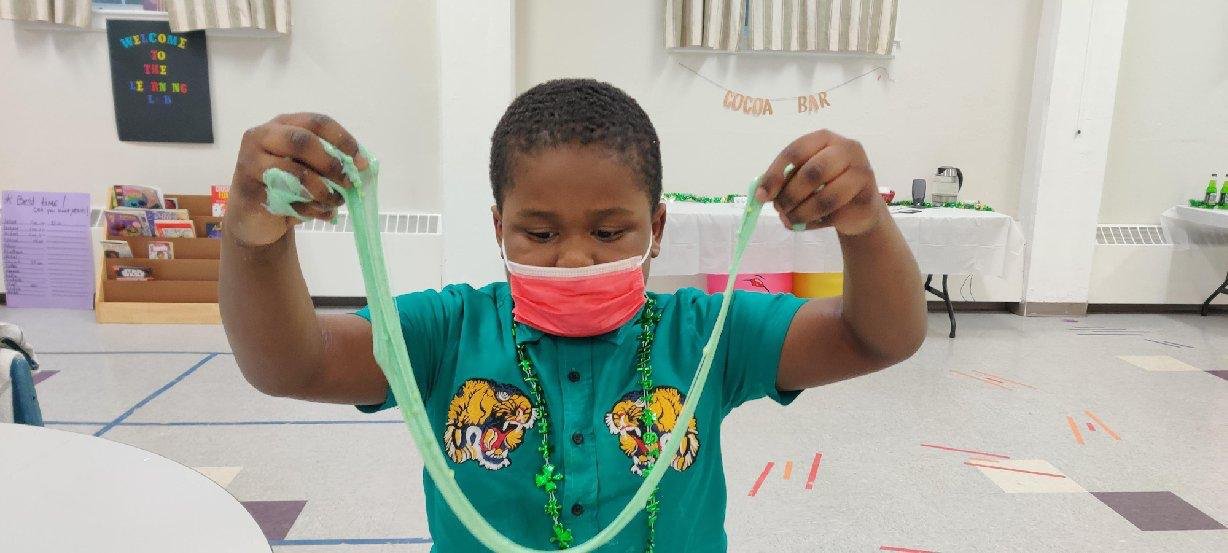

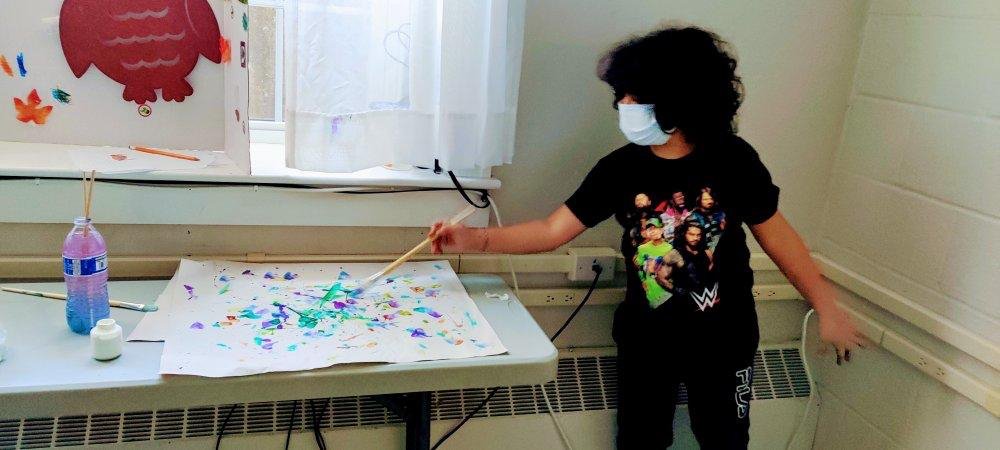
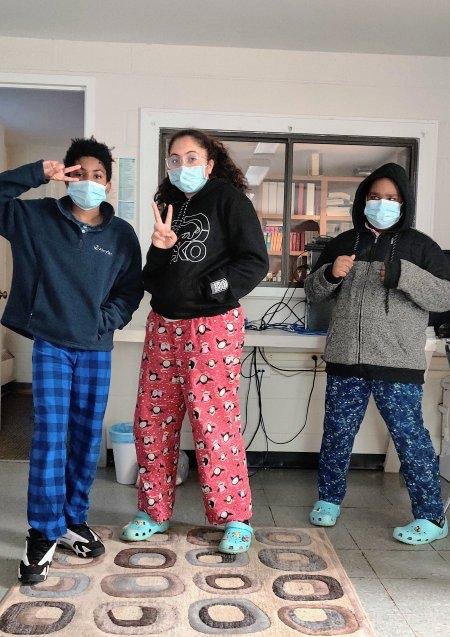
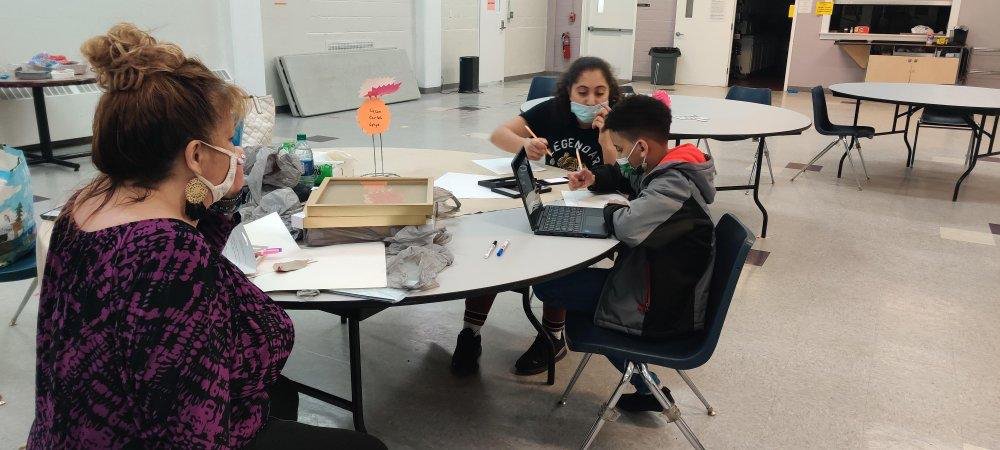
When BCMI shifted to supervising remote classes during the pandemic, they saw how challenged students were in a school environment as opposed to mentoring relationships. As discipline was one of the most challenging aspects, they sat one-on-one with about two dozen students in grades one through eight to help them with their schoolwork.
Lynda Snelling, director at BCMI, said it was really important for the students to see each other, so the organization used some available funds to build on these relationships with fun activities over weekends.
Parents appreciated the academic help and supervision. With improved connections with a nearby school through parent resource personnel, BCMI was able to secure lunches for the program.
“Along the way,” Snelling said, “God made the way.”
“Along the way, God made the way.”
Seeing God’s hand at work was also evident for Jeanette Merren, program director at Greenwood Shalom in Dorchester, which is part of Victory Generation, a program of BMA TenPoint, an alliance of churches as well as faith and community-based organizations in Boston.
Greenwood Shalom provides a safe and nurturing environment where they attend to children’s educational, physical, social, emotional, and spiritual needs. Teachers encourage children by helping them with their homework as well as taking tests and discovering new skills.
Through perseverance and encouragement, the 18 students, ages 5 to 13, who attended the program daily, learned efficiency as well as improved organization and time management skills.
At summer camp, Rochelle Jones, director of education at Victory Generation, supervised a new devotional time that children led by reading a devotional and commenting on what it meant for them. Apart from simply encouraging children to attend church, Jones said the team is engaging in spiritual conversations through positive, Christ-centered relationships. And the children are responding with great questions and open hearts, Jones said.
Greenwood Shalom also partners with parents to better equip them and support them in their own educational and personal goals.

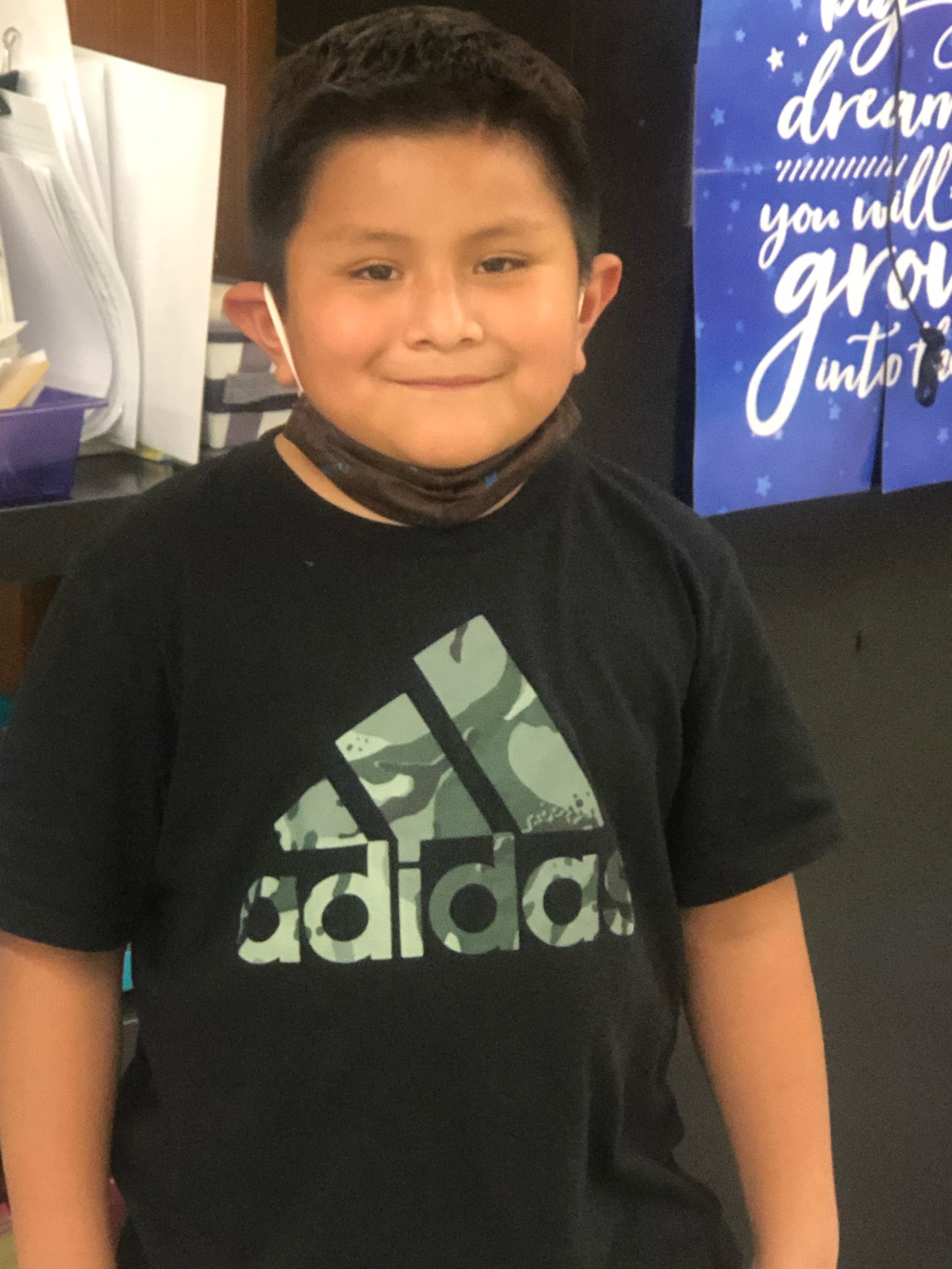
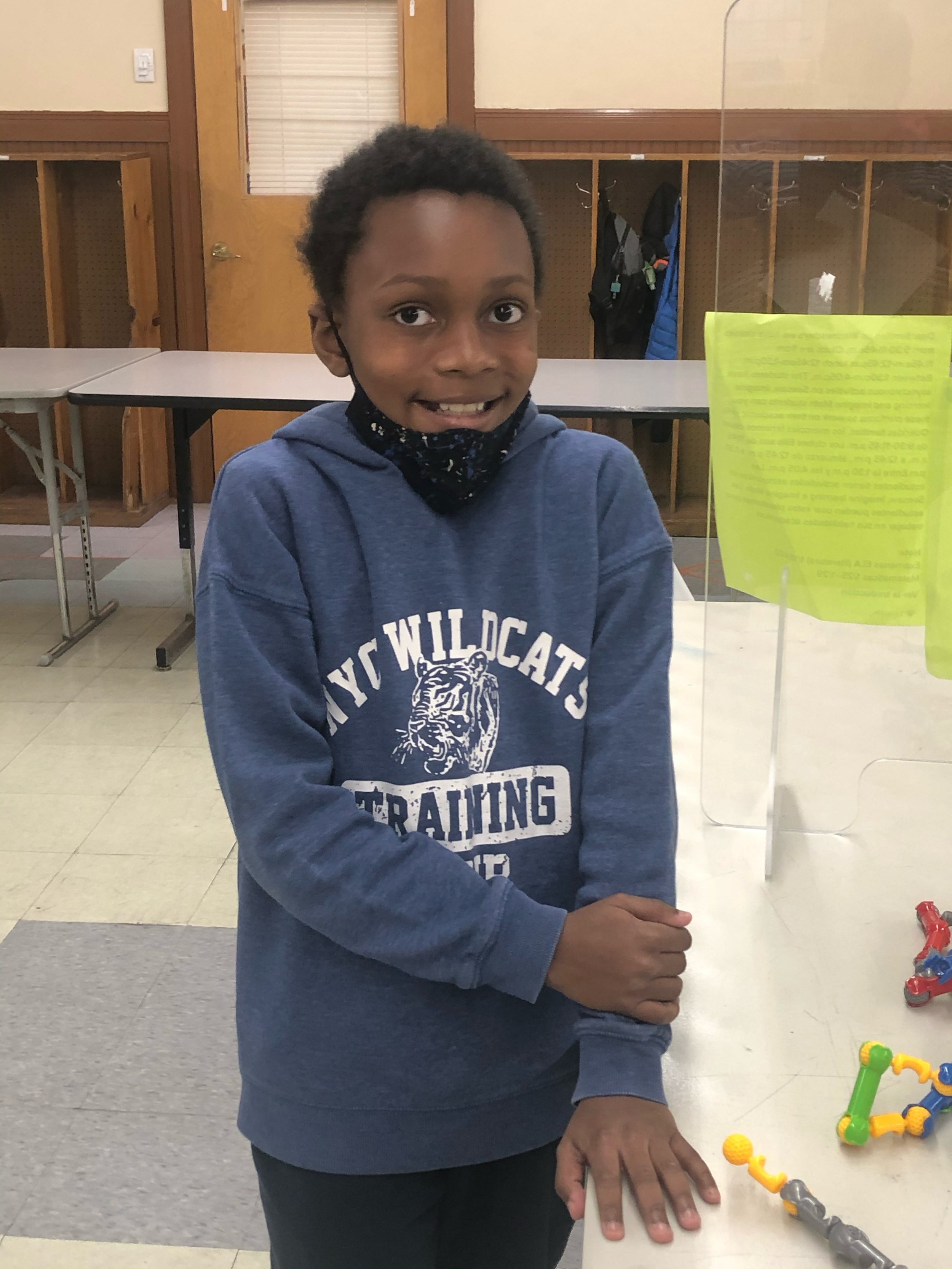

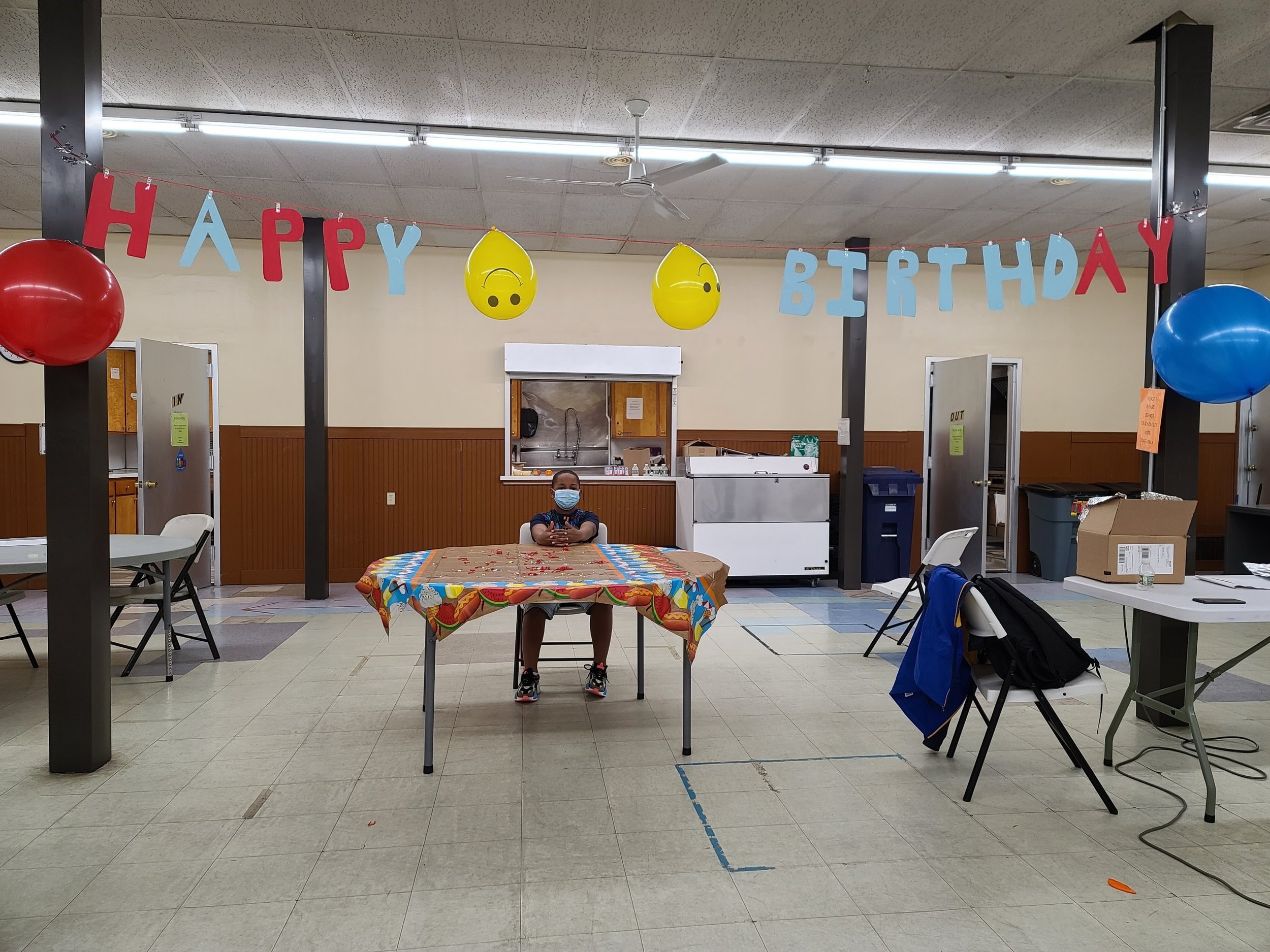
One of the major obstacles to working with parents during the early days of the pandemic was the lack of in-person meetings with families, cutting off the information usually gleaned from conversations before and after pick up.
But developing close relationships with families has given Greenwood Shalom a front-row seat to the transformation unfolding in their lives. Merren said she takes special joy in seeing God at work when a parent secures a new job.
In addition to academic enrichment, the program helps families find resources for food, finances, language learning, housing forms, and food stamps. The team also assists families, who may not be culturally familiar with the school system, in navigating communication issues such as understanding report cards, responding to emails, and advocating for special needs.
That kind of transformation was also on display for the team at ACCESS in Chinatown, which saw systemic change and more supportive relationships with families.
Like others, the organization grappled with lots of policy and schedule changes, but good communication with BPS and parents enabled ACCESS to help children and their families.
For some families, the assistance is critical. When asked what the ACCESS program meant to them, one parent shared, “It makes the difference of me being able to work or not!”
For those parents who lost jobs, ACCESS was able to make accommodations in their fee structure.

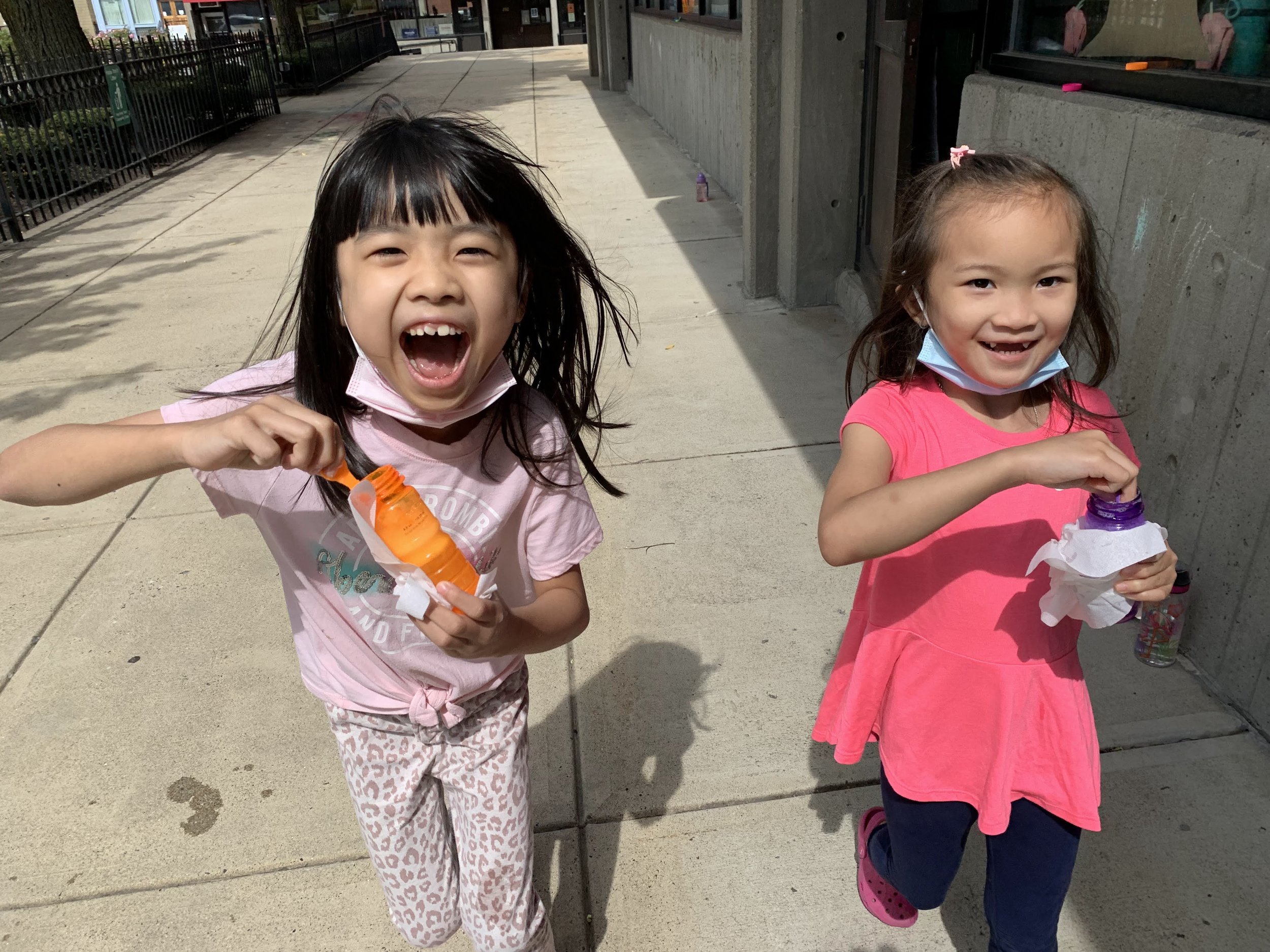
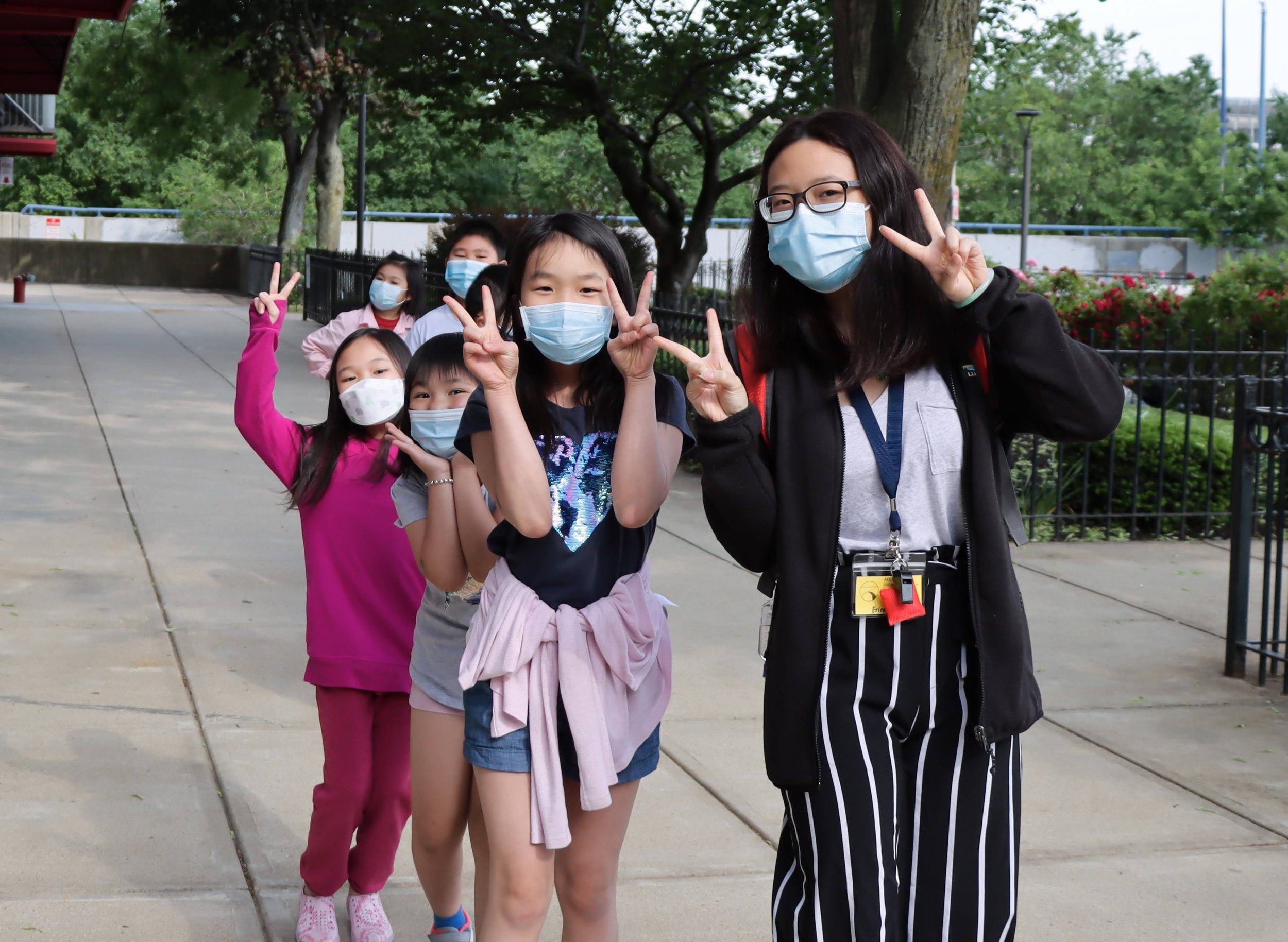


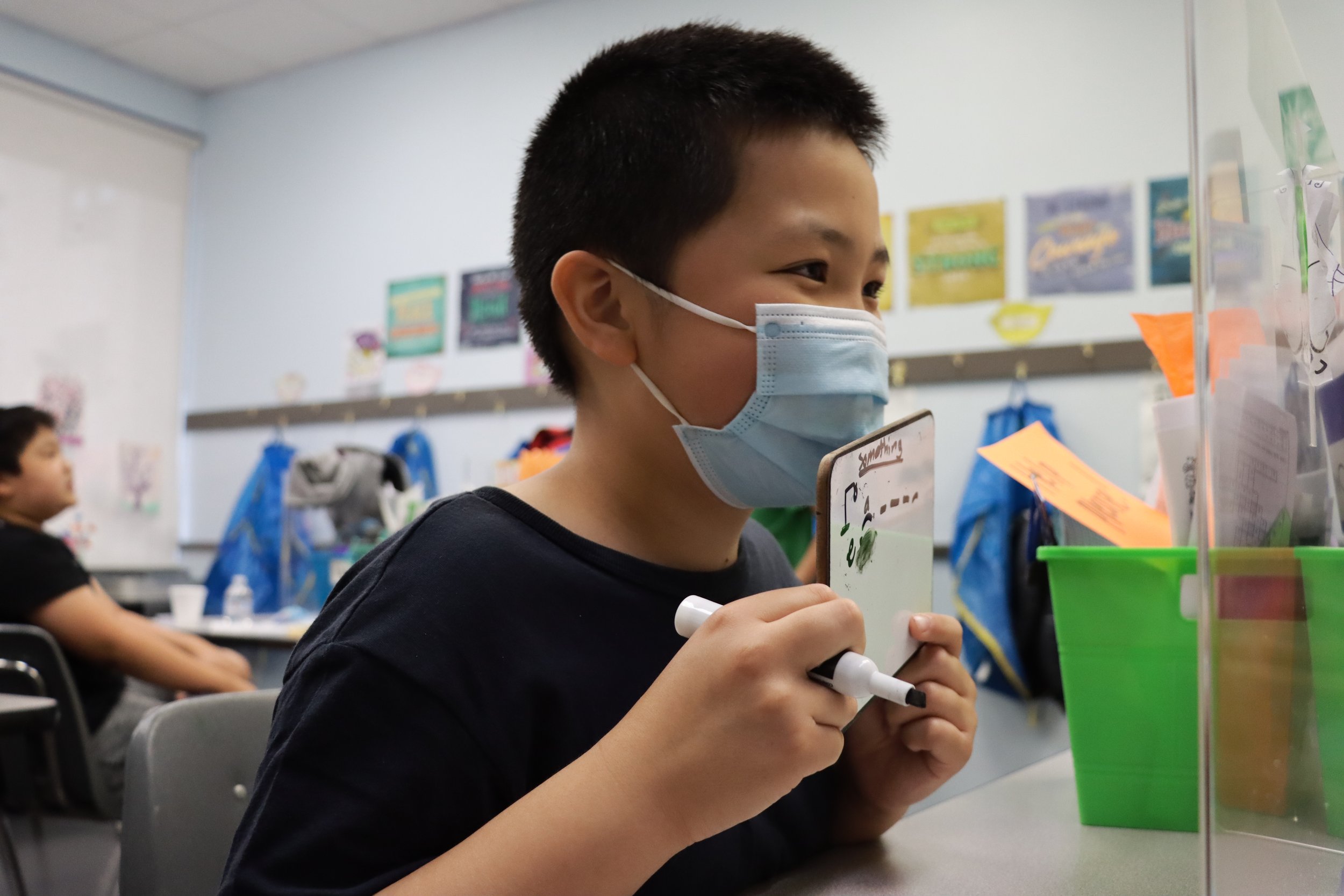

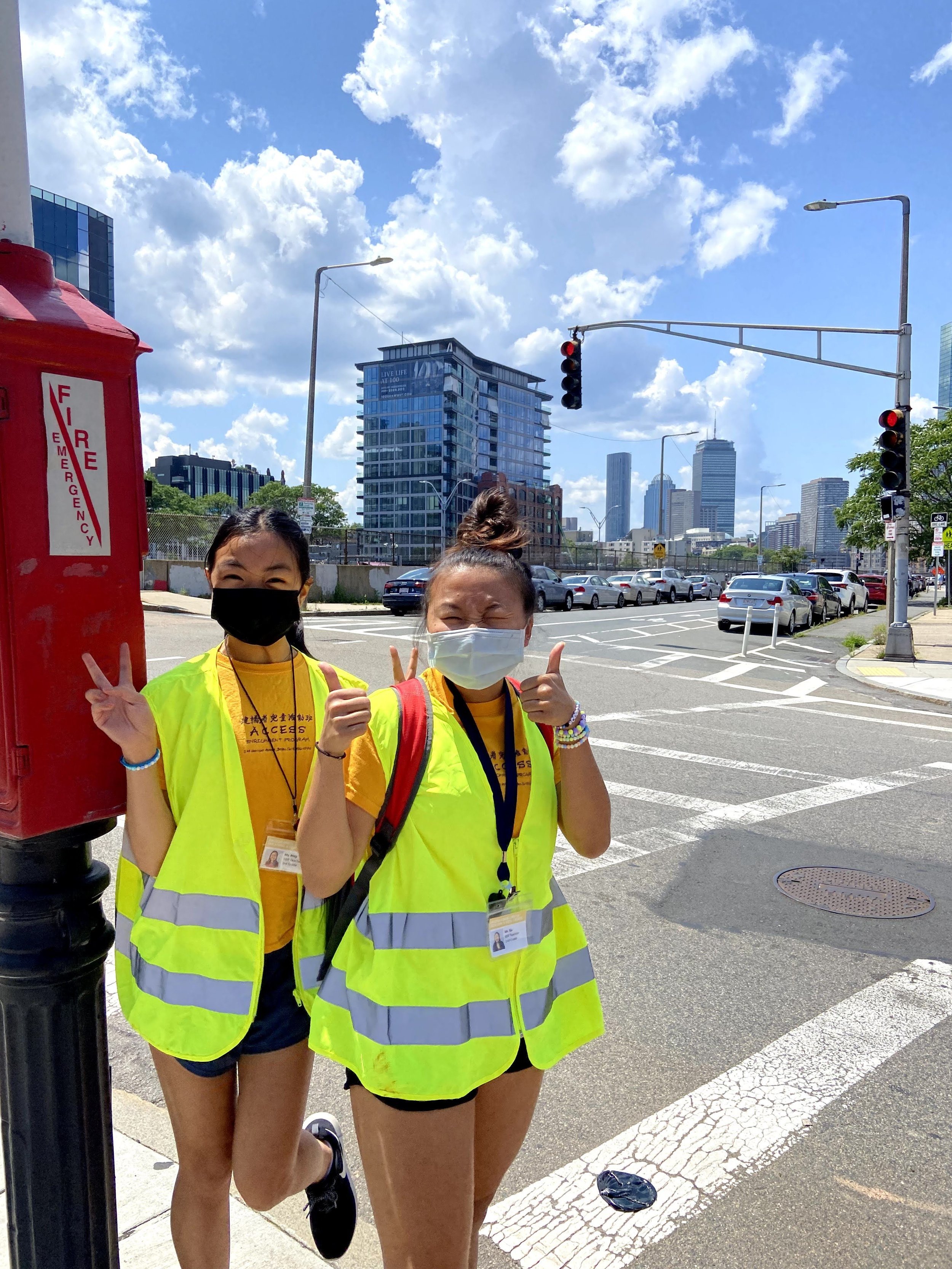
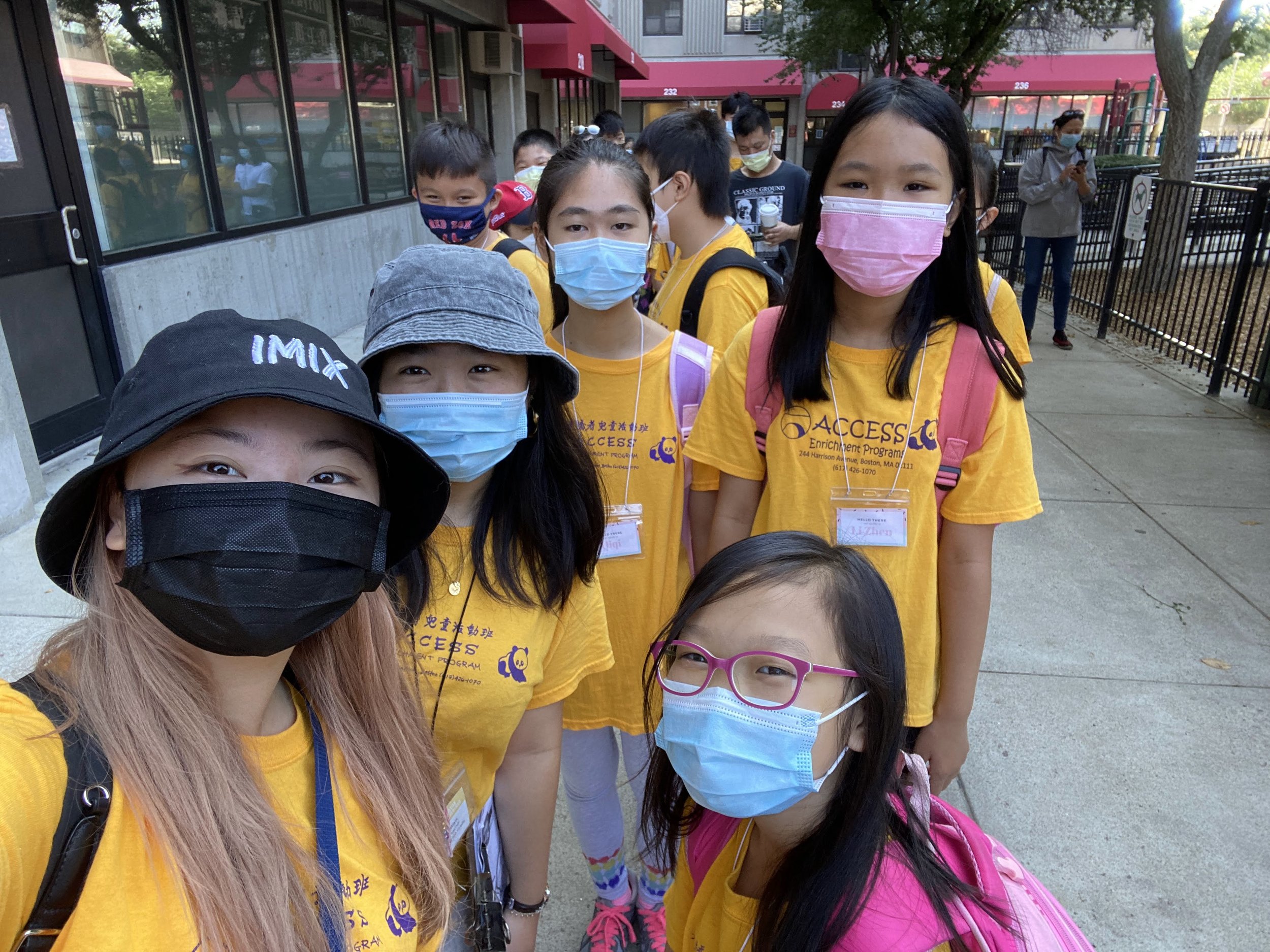

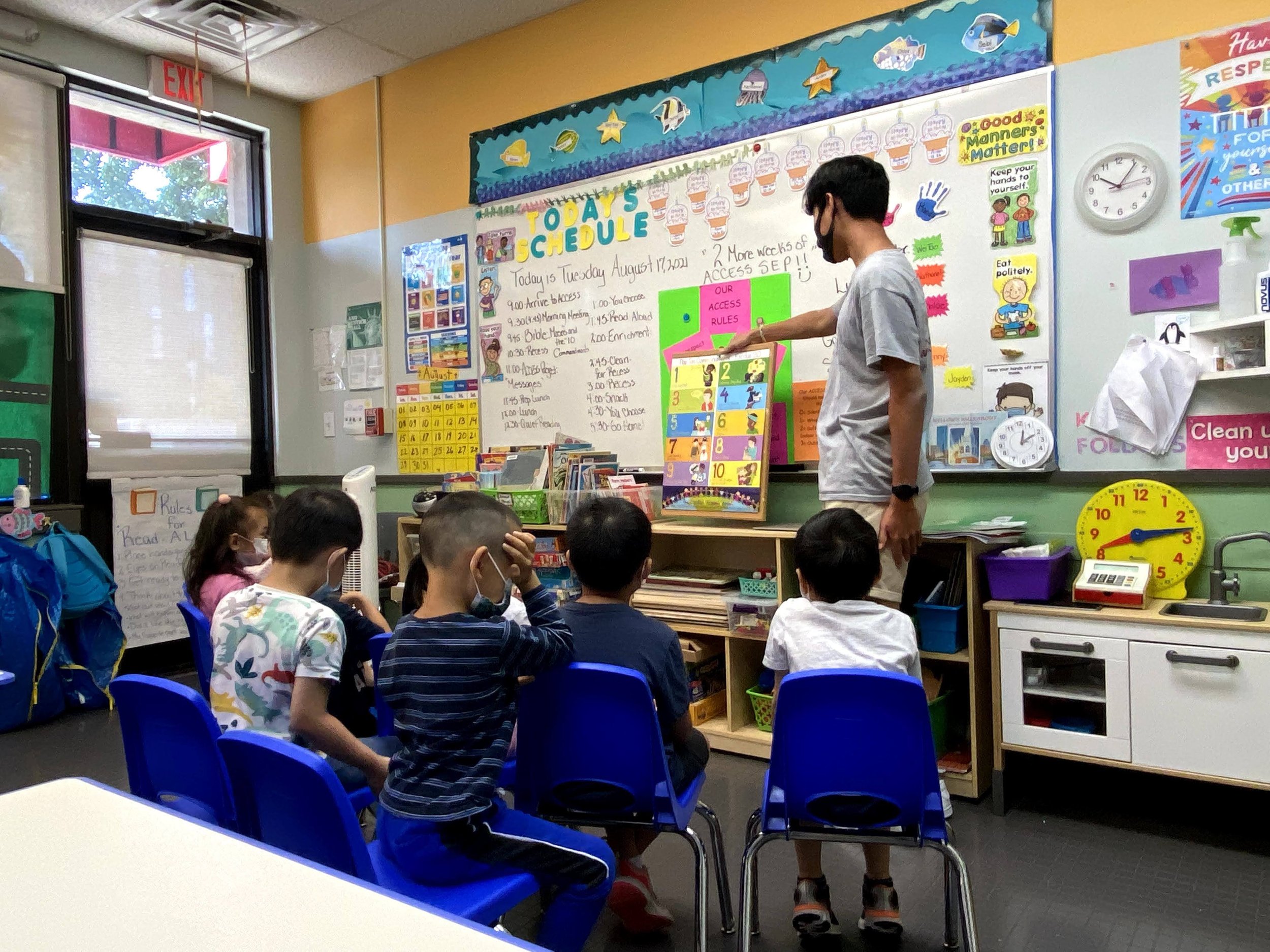
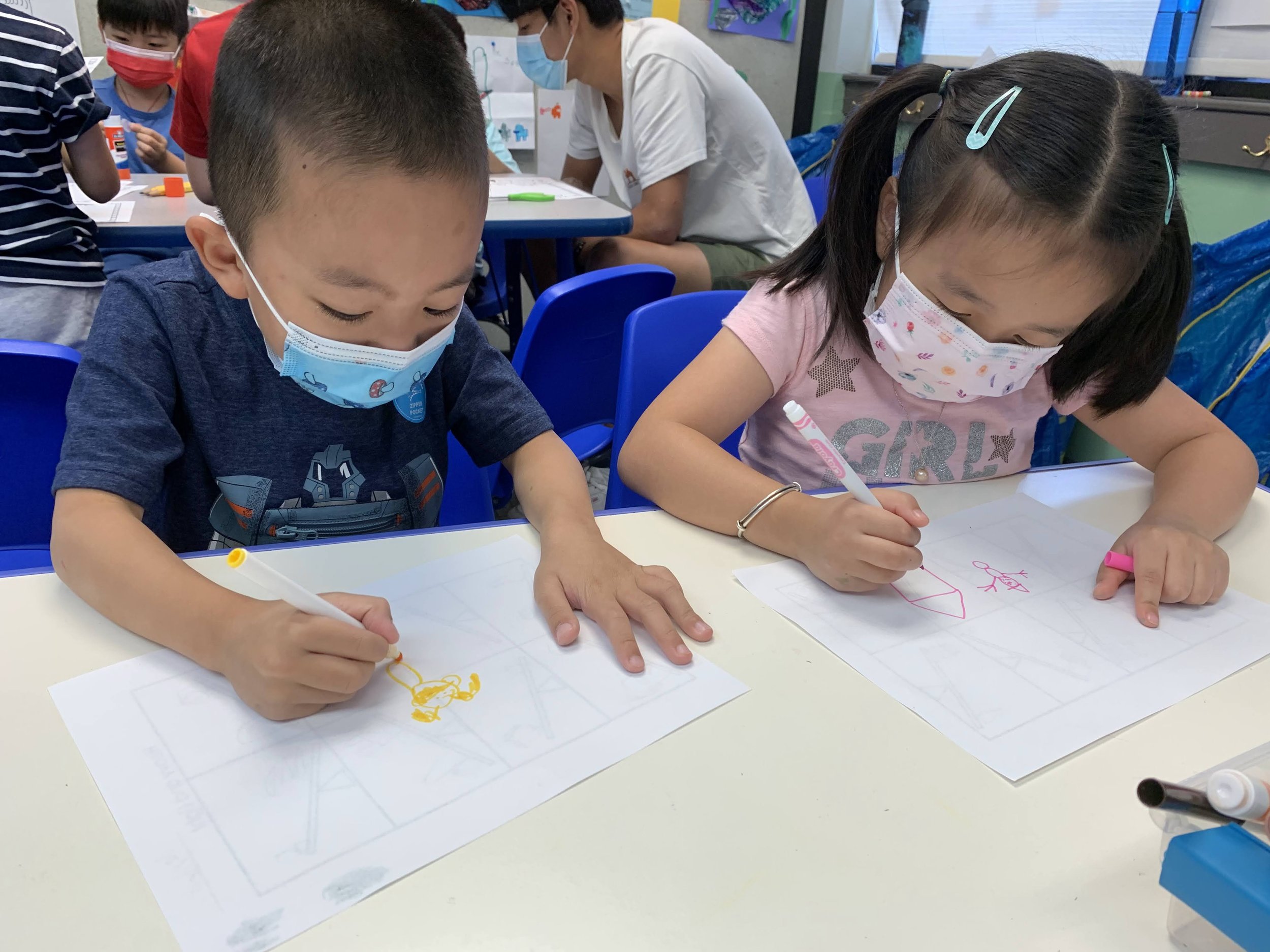
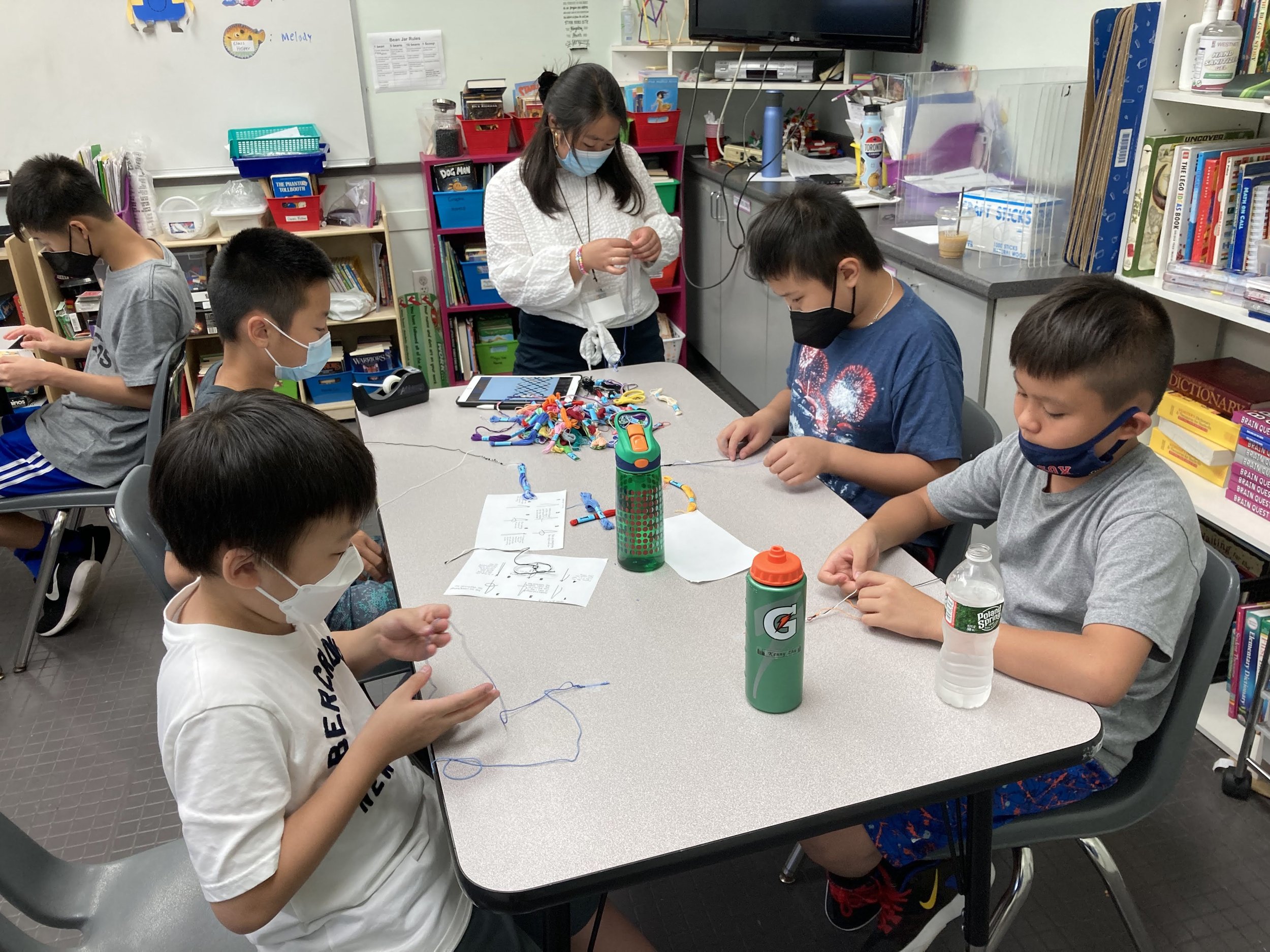

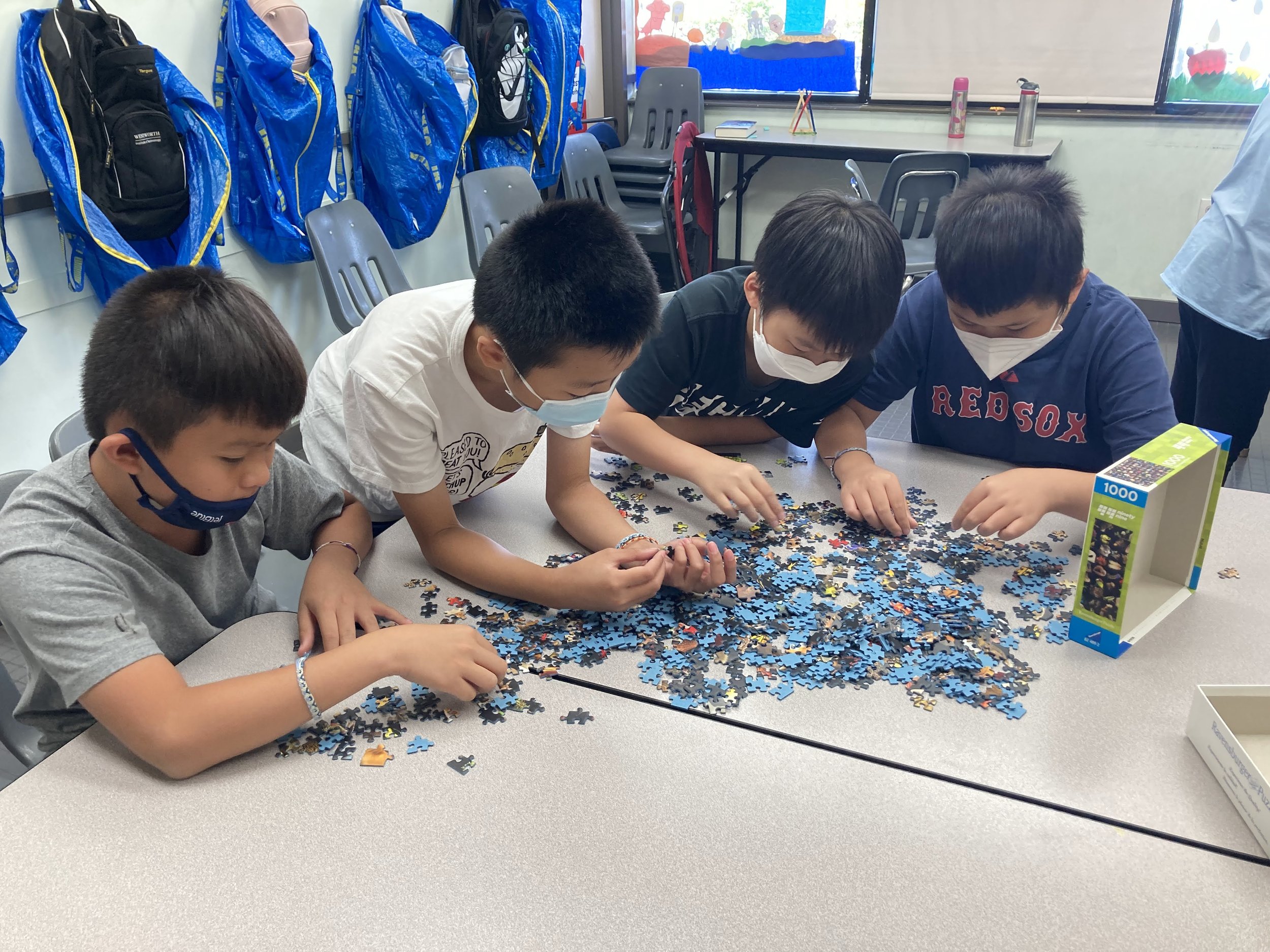

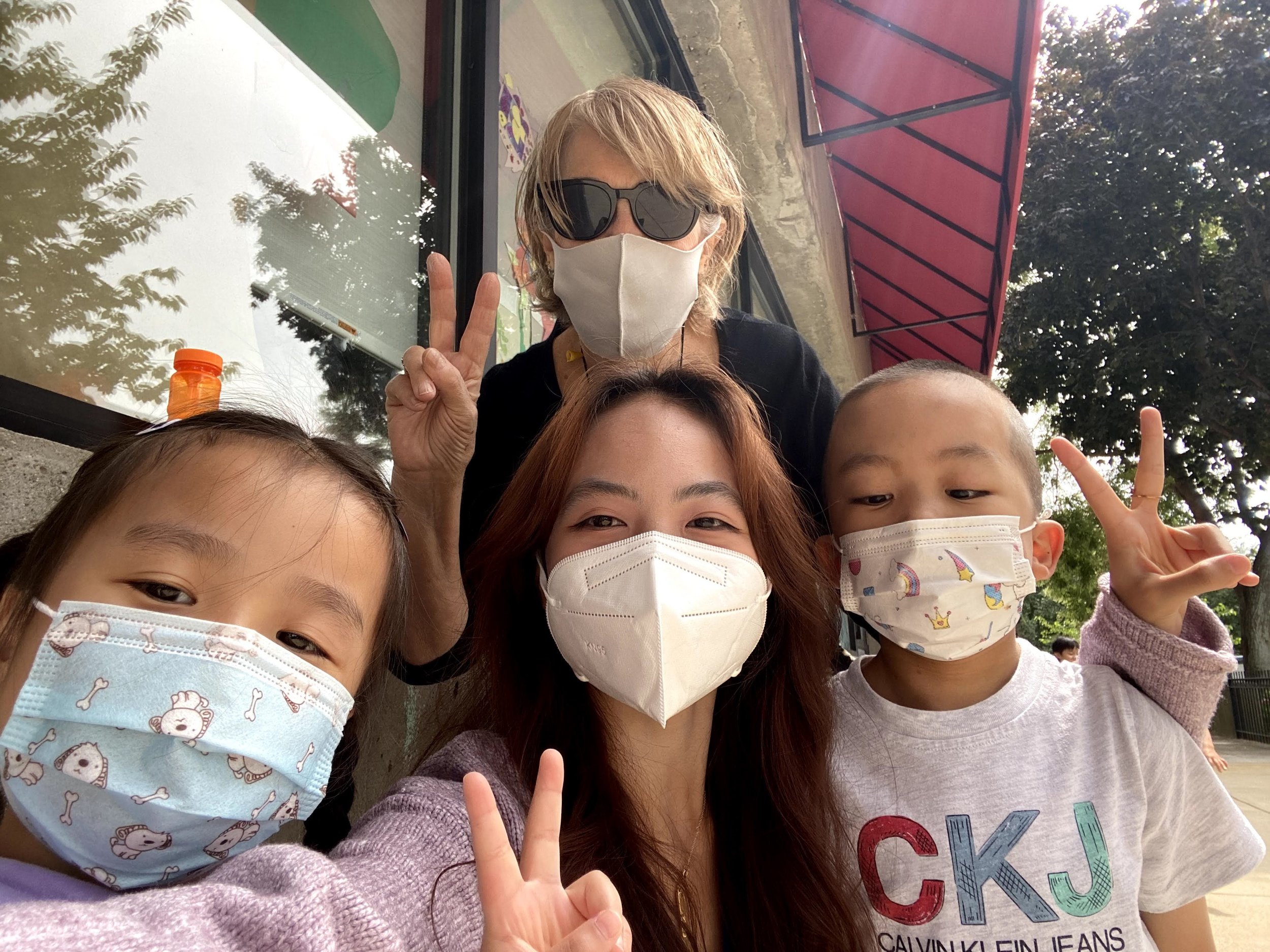
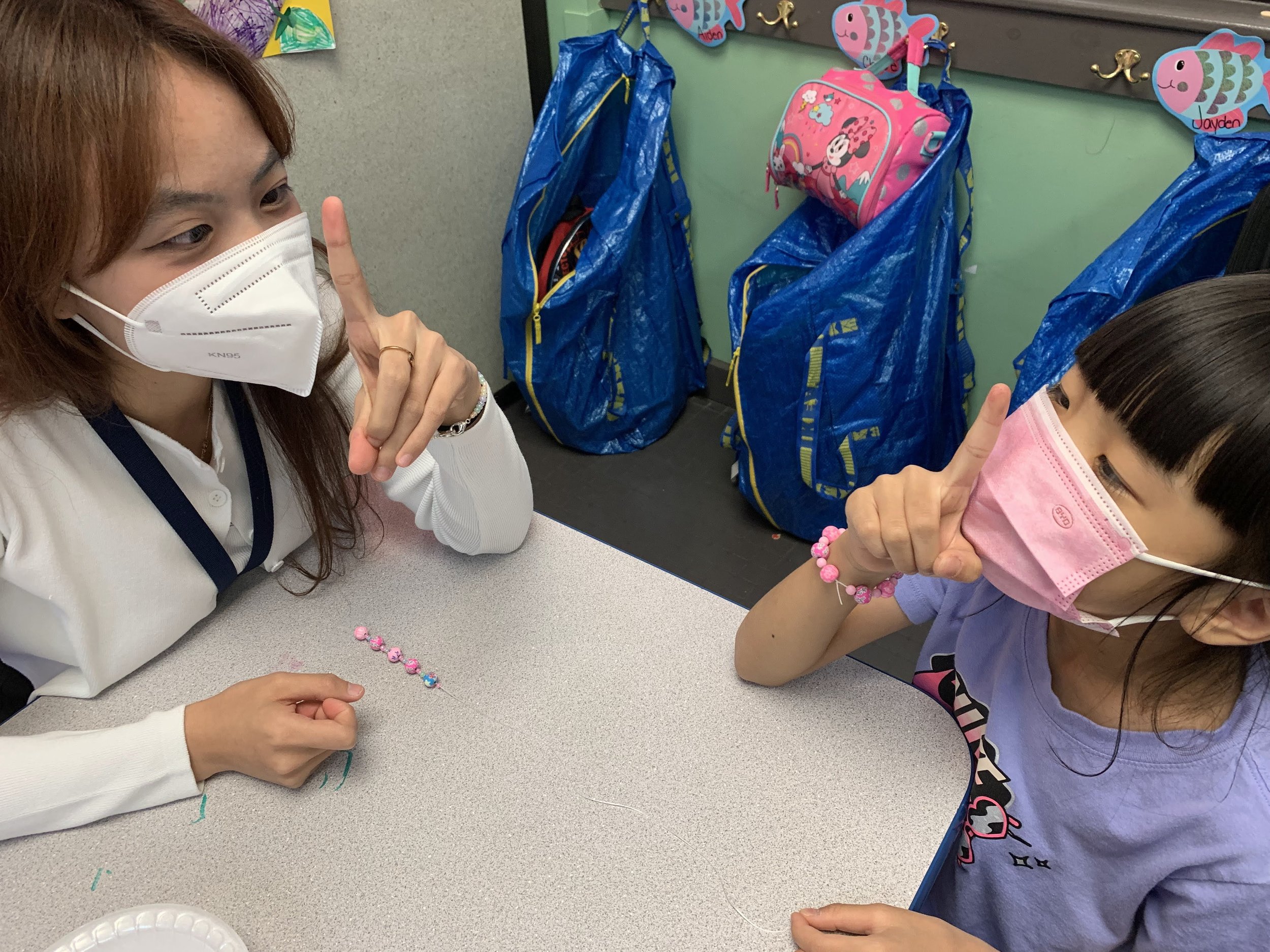


That was due in part to the love and generosity of several organizations that enabled ACCESS to maintain its outreach in the community.
Some of those groups include the SuccessLink Youth and Young Adults Jobs program in the City of Boston Youth Engagement and Employment department, Chinatown Community Land Trust, Northeastern University’s Service-Learning program in its Office of City and Community Engagement, Boston Public Health Commission, and Tai Tung Village.
Long-term partnerships with churches include the Christian Bible Church of Greater Boston and the Boston Chinese Evangelical Church.
These partnerships were a source of joy when challenges loomed large, enabling ACCESS to cover unanticipated expenses and avoid staff layoffs while providing creative programming in science, technology, engineering, and math in a healthy and safe learning environment.
It was the first year on the job for Annie Tran, who came on board ACCESS as program director after working in biotech. In that field, she was able to control variables in science experiments. But not at ACCESS. This new job was a radical change at a challenging time with many variables.
Tran said she learned “to be more vulnerable with my weaknesses and begin lifting them up to God.”
Despite wondering what God had planned, Tran said, “Not only is God great and powerful, but he is also strategic!”
“Not only is God great and powerful, but he is also strategic!”
TAKE ACTION
This fall, schools and programs are experiencing first-hand the social-emotional impact of the pandemic on children and young people.
School staff members have shared about challenges with helping students to relearn the norms of being a student, of how to work out conflict with other students, or how to express themselves when emotional. Staff at one school shared about the challenges they are facing with their ninth-graders who were last in school as seventh graders.
Academic mentors and support for teachers are high needs. At the same time, families are still faced with resource needs such as food, diapers, clothing, and financial assistance.
Here’s how you can help the BEC’s partner organizations:
Volunteer
Volunteer in person. Contact Ruth Wong at rwong@egc.org for more information.
Donate
Consider donating items for learning and activities. Follow these links for more information:
Wishlist: activity sets, arts and crafts supplies, board games for children, chapter books as well as children’s books, puzzles
Wishlist: arts and craft supplies, games, gift cards to Target and Walmart for Christmas gifts
Wishlist: Treetop mystery books series for grades K-7, 15 to 20 headphones, 20 Bluetooth speakers, one TV screen, 20 exercise mats in bags, 20 STEAM Activity sets
Here’s how you can help the BEC:
Partner
The BEC is looking for church partners and Christians across the Greater Boston area to partner with and love on these Christian out-of-school time programs as well as school communities in the new school year. Contact Ruth Wong at rwong@egc.org if you are interested in learning more about how your church can partner with a local school.
Mentor
The BEC is seeking to recruit 250 volunteers to serve as academic mentors. Both schools and out-of-school time programs need in-person volunteers to assist teachers and staff to work with students in Boston, Cambridge, Chelsea, and Brockton. There are some remote volunteer opportunities, too. To find out more, contact Ruth Wong at rwong@egc.org.
Donate cloth masks and clothing
BPS staff have requested the faith community to donate cloth masks, and Catie’s Closet is holding clothing drives. Contact Ayn Duvoisin at becassociate2@egc.org for more information on both initiatives.
Refer job candidates for BPS schools
Know of someone who would be a good fit for BPS? There are about 400 open positions in the schools. Please see the district’s list of job openings to refer candidates to the school.
Support families
Immigrant parents and families experiencing homelessness need help to navigate Zoom, online learning platforms, and resources. There is a special need for volunteers who speak Spanish. Volunteers can help provide support through phone or Zoom calls. We can train you to learn how to access various online platforms like Google Classroom. Contact Ruth Wong at rwong@egc.org to learn more.
Families are also in need of basic items such as food, clothing, diapers, cleaning supplies, personal hygiene products, etc. Go to www.egc.org/covidresponse to donate to our COVID-response fund to help families.
Other opportunities to support parents during these challenging times could also be explored. Contact Ruth at rwong@egc.org if you’re interested in working with families.
Hanno van der Bijl
Ayn DuVoisin
About the Authors
Hanno van der Bijl returned to EGC as managing editor after working as a teacher and reporter in Alabama for almost a decade. Before that, he worked with EGC’s research team and graduated with an M.Div. from Gordon-Conwell Theological Seminary in 2010. A native of South Africa, he is thrilled to be back in Boston where he became a U.S. citizen in 2007 at the Hynes Convention Center. Hanno and his wife, Lauren, have three young, beautiful children who are already smarter than their parents.
Pastor Ayn DuVoisin has been a volunteer associate with EGC’s Boston Education Collaborative initiative since 2019. She previously served as Pastor of Children’s Ministries at North River Church in Pembroke, Massachusetts, from 2000 to 2019. Over the past decade, she has been active in building the Church & School Partnership for Boston Public Schools. She is also a former board member of Greater Things for Greater Boston. She and her husband, Jean DuVoisin, have lived in Scituate, Massachusetts, for over 40 years. She is blessed by her three adult children and well-loved Golden Retriever, Sunny.
What does Boston's population growth mean for ministry in the city?
More and more newcomers are flocking to Boston even as the number of churches appears to be leveling off.
What does Boston's population growth mean for ministry in the city?
by Hanno van der Bijl, Managing Editor
More and more newcomers are flocking to Boston even as the number of churches appears to be leveling off.
The city's population is now growing at a much faster clip than in past years. From 1980 to 1990, the city added about 11,000 people. The increase grew to about 15,000 from 1990 to 2000. It doubled over the next decade to about 30,000 and then tripled from about 80,000 to 90,000 from 2010 to 2020.
The coronavirus pandemic threw a wrench in collecting data for the latest census. But taking into account recent growth trends, the Emmanuel Gospel Center estimates there are now about 700,000 Bostonians.
For much of Boston's past, the number of churches ran parallel to the city's population growth. That shifted in the 20th century during two periods of immigration from the 1870s to the 1920s and then again after 1980. During that time, the number of churches doubled from about 250 in the early part of the century to about 500 in 2000.
In recent years, that rate has slowed, creating new opportunities for Christian ministry.
“There are areas of the city that are seeing significant new developments and population growth, so, there’s opportunity for churches to do more outreach and for new churches to be planted.”
TAKE ACTION
What do you think are some implications of population growth for Christian ministry in Boston?
Keywords
- #ChurchToo
- 365 Campaign
- ARC Highlights
- ARC Services
- AbNet
- Abolition Network
- Action Guides
- Administration
- Adoption
- Aggressive Procedures
- Andrew Tsou
- Annual Report
- Anti-Gun
- Anti-racism education
- Applied Research
- Applied Research and Consulting
- Ayn DuVoisin
- Balance
- Battered Women
- Berlin
- Bianca Duemling
- Bias
- Biblical Leadership
- Biblical leadership
- Black Church
- Black Church Vitality Project
- Book Recommendations
- Book Reviews
- Book reviews
- Books
- Boston
- Boston 2030
- Boston Church Directory
- Boston Churches
- Boston Education Collaborative
- Boston General
- Boston Globe
- Boston History
- Boston Islamic Center
- Boston Neighborhoods
- Boston Public Schools
- Boston-Berlin
- Brainstorming
- Brazil
- Brazilian
- COVID-19
- CUME
- Cambodian
- Cambodian Church
- Cambridge


























![Hidden Treasures: Celebrating Refugee Stories [photojournal]](https://images.squarespace-cdn.com/content/v1/57ff1c7ae58c62d6f84ba841/1512579164575-AKNVCYX4Q5DW8IN2CNYP/P1070998.jpg)

![Connecting Multi-Site Church Leaders [PhotoJournal]](https://images.squarespace-cdn.com/content/v1/57ff1c7ae58c62d6f84ba841/1513116581077-WOWU94O437SJAKKAMZMA/DSC_0438-for-header.jpg)


![Ethiopian Churches in Greater Boston [map]](https://images.squarespace-cdn.com/content/v1/57ff1c7ae58c62d6f84ba841/1506113852983-TSLLC1FENTJJGZYIO7MM/orthodox+cross+church.jpeg)


![Beyond Church Walls: What Christian Leaders Can Learn from Movement Chaplains [Interview]](https://images.squarespace-cdn.com/content/v1/57ff1c7ae58c62d6f84ba841/1550010291251-EVMN3KQ15A70OBTAD4JQ/movement-chaplaincy_outdoorcitygroup.jpg)


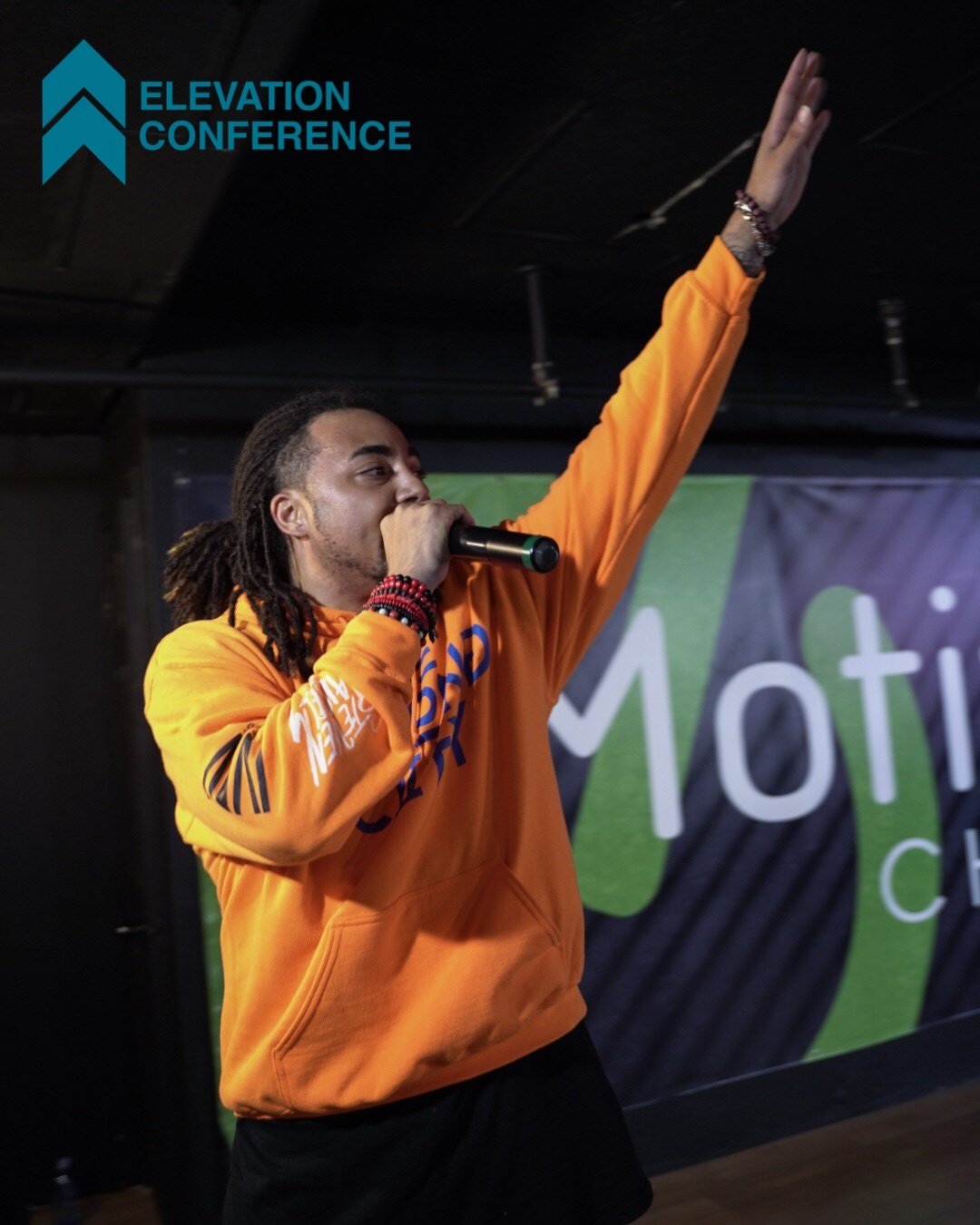

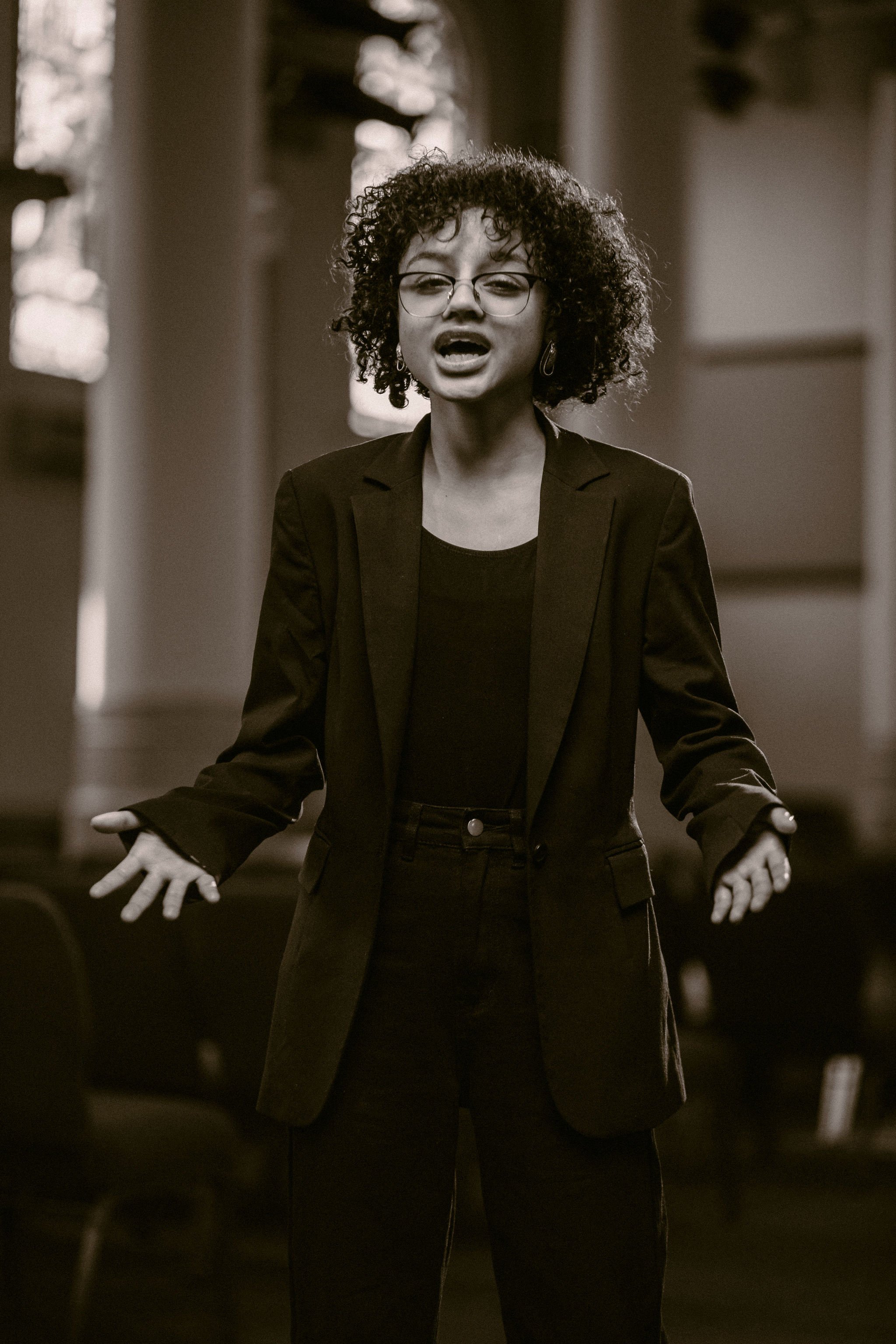







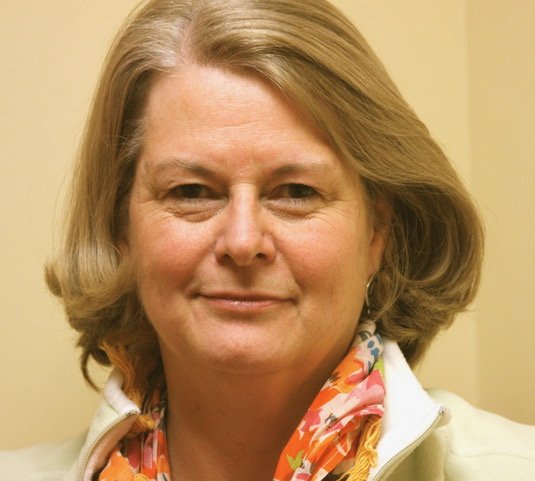
















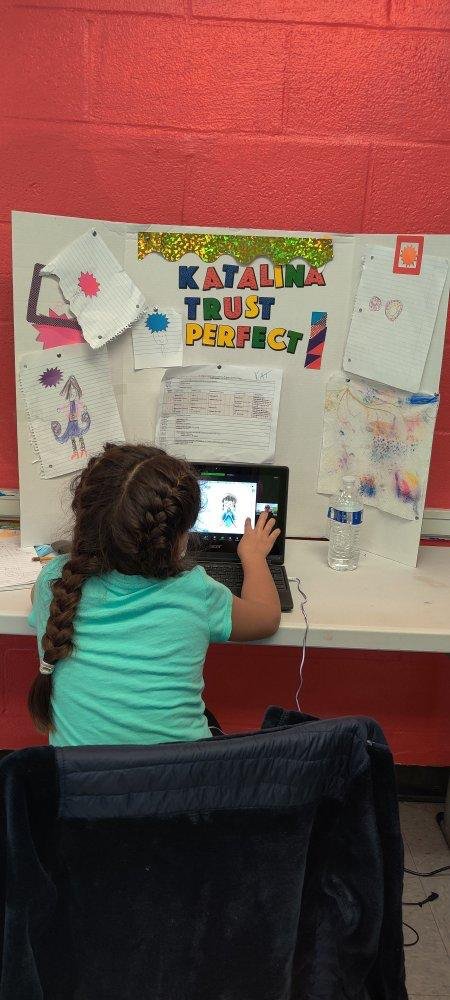


![The Value of Making Youth Voices Heard [VIDEO]](https://images.squarespace-cdn.com/content/v1/57ff1c7ae58c62d6f84ba841/1540908939188-LRJKMBIWZXOOO5V5A9UP/Screenshot+2018-10-30+10.08.13.png)

![Urban Youth Culture Research [Resource List]](https://images.squarespace-cdn.com/content/v1/57ff1c7ae58c62d6f84ba841/1530294363902-G2R6K4YMB3AX42HOIMH9/black-and-white-crowd-gang-38198.jpg)
![God Met Me in Boston [Interview]](https://images.squarespace-cdn.com/content/v1/57ff1c7ae58c62d6f84ba841/1529427271630-4CUDW0ICCL9D8IQ4SV4I/Ruth+%26+Cherchaela+2.jpg)

















